inbox and environment news: Issue 592
July 30 - August 5, 2023: Issue 592
National Tree Day 2023: 3 Sites For Our Area This Year - Planting Out Takes Place Sunday July 30 At Avalon Beach, Duffys Forest, Curl Curl
.jpg?timestamp=1679635455680)
Photo: A J Guesdon
Council and Planet Ark are inviting local residents to dig in and do something good for nature and their community as part of National Tree Day 2023.
National Tree Day is a great opportunity to maintain and enhance our beautiful environment for our local wildlife as well as ensuring the region continues to be a great place to live and getting all the benefits that come from spending time outdoors..
Over 26 million trees have been planted by volunteers since 1996 as part of the program and we are excited for the community to support the goal of getting another million native plants in the ground this year.
Schools Tree Day (July 28) and National Tree Day (July 30) are Australia’s largest annual tree-planting and nature care events, with plantings taking place across the country on the last weekend of July. Each year, around 300,000 people volunteer their time to engage in activities that encourage greater understanding of the natural world and how we can protect it.
National Tree Day event is taking place in three locations in our area on Sunday July 30th. Native trees, shrubs and grasses will be planted at the sites. Residents can register to volunteer at the event via the National Tree Day website at treeday.planetark.org/find-a-site/.
Details of each run below
“Our research clearly shows the many benefits that time outdoors in nature has for our physical and mental health, our children’s development, the liveability of our communities and the robustness of local ecosystems,” said Planet Ark co-CEO Rebecca Gilling.
“With the simple action of planting a tree you can help cool the climate, provide homes for native wildlife and make your local community a happier and healthier place to live.”
National Tree Day is an initiative organised by Planet Ark in partnership with major sponsor Toyota Australia and its Dealer Network. For more information and to find events in your local area, please visit treeday.planetark.org.
National Tree Day 2023: Local sites
Avalon Beach: Palmgrove Road
In the grass area between Dress Circle Road and Bellevue Ave, Avalon
DATE & TIME: Sunday, 30 July 2023, 10:00am to 2:00pmSite Organiser: Michael Kneipp
RSVP Contact: Michael Kneipp, 1300 434 434
Suitable for Children: Yes
Accessible for Wheelchairs: No
VOLUNTEER INFORMATION: Please wear long pants, long sleeve shirt, sturdy shoes, gloves and a hat. Everyone is invited to help us regenerate this important wildlife corridor with native plants. Make Avalon a cooler, greener and more connected place for our community and wildlife.
WHAT'S PROVIDED?: Gloves, Tools and equipment for planting, Watering cans / buckets, Refreshments, BBQ
Volunteer at this site: https://treeday.planetark.org/find-a-site/volunteer/10028078
Duffys Forest Residents Association
DATE & TIME: Sunday, 30 July 2023, 9:00am to 1:00pm
LOCATION: 13 Namba Road, Duffys Forest
Site Organiser: Jennifer Harris
RSVP Contact: Jennifer Harris, 0408512060
Suitable for Children: Yes
Accessible for Wheelchairs: Yes
DIRECTIONS: You can enter the site at the end of Namba road. Proceed through two large metal gates, to picnic area to sign on for the event.
VOLUNTEER INFORMATION: Volunteers must wear suitable clothing & protective gear including covered shoes, gloves and a hat. It is proposed that volunteers plant up to 600 indigenous native tube stock in degraded areas of the park to create additional canopy species, establish ground cover, reduce weed invasion and to improve biodiversity & wildlife habitat. The activity is located in an iconic park, formerly known as Waratah Park, the home of "Skippy". The event will be supervised by a qualified bush regenerator & aims to inspire & educate participants to become custodians and actively care for our unique environment. Last year we planted over 450 tube stock with 35 volunteers in just over 3 hours. These tube stock have thrived due to ongoing maintenance and watering by volunteers.
WHAT'S PROVIDED?: Gloves, Tools and equipment for planting, Watering cans / buckets, Snacks, Refreshments, BBQ
Volunteer at this site: https://treeday.planetark.org/find-a-site/volunteer/10027702
Curl Curl
DATE & TIME: Sunday, 30 July 2023, 10:00am to 2:00pm
Location: Griffin Road, North Curl Curl
VOLUNTEER INFORMATION: Please wear long pants, long sleeve shirt , sturdy shoes, gloves and a hat. There are also public transport and cycling options. Everyone is invited to help us regenerate this important wildlife corridor with native plants. Make Curl Curl a cooler, greener and more connected place for our community and wildlife. Please wear long pants, long sleeve shirt , sturdy shoes, gloves and a hat.
Enter via the car park or footpath on the Southern side of the Greendale Creek bridge. Look for our Northern Beaches Council Marquees.
Site Organiser: Michael Kneipp
RSVP Contact: Michael Kneipp, 1300 434 434
Suitable for Children: Yes
Accessible for Wheelchairs: No
Volunteer at this site: https://treeday.planetark.org/find-a-site/volunteer/10028073
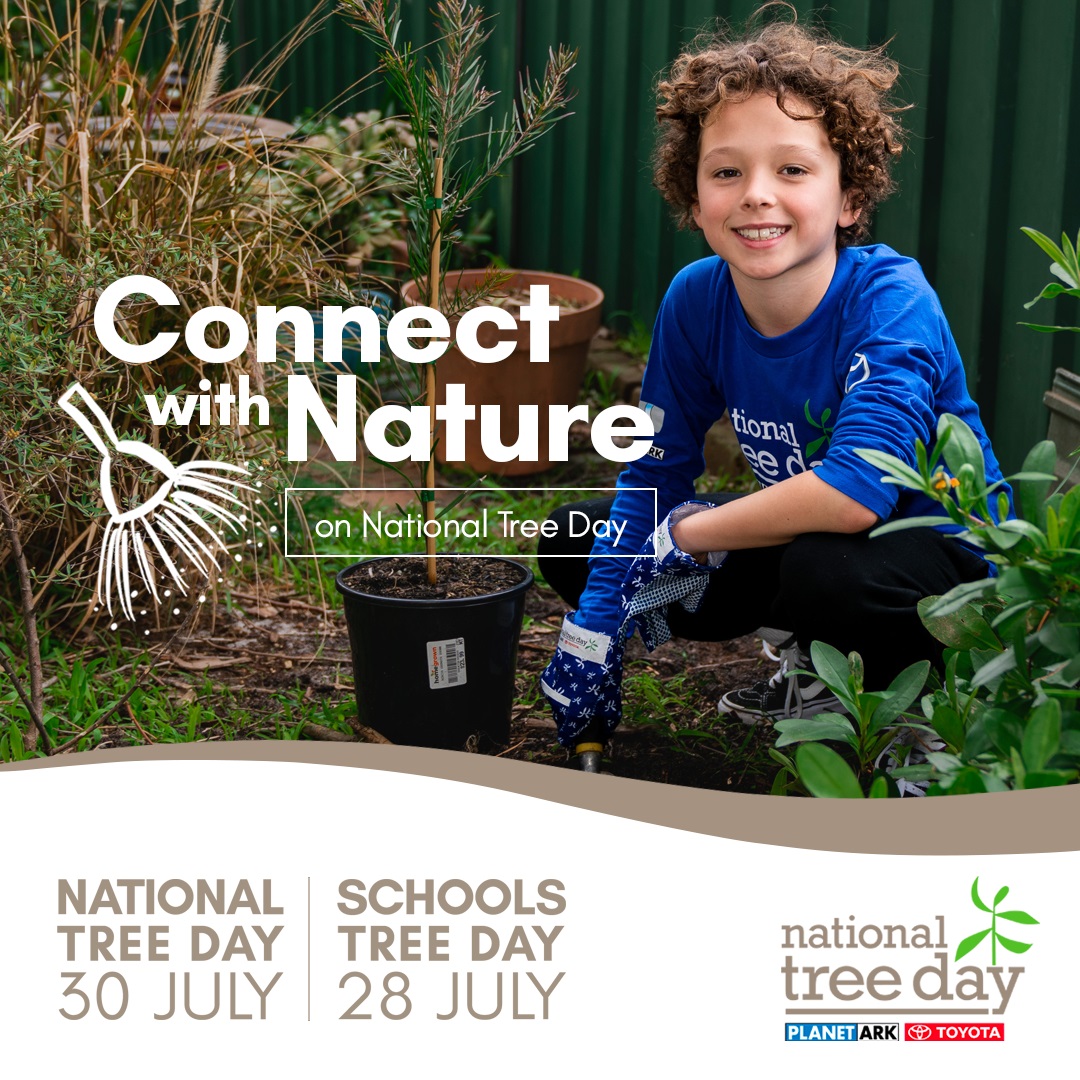
The Life Electric Expo And Forum: July 30th At Avalon Rec. Centre
The Life Electric Community Expo is hosted by Avalon Palm Beach Business Chamber Inc. Entry is free with 10+ stalls, expert advice, food, music and test rides. You can also purchase tickets to the live panel featuring Saul Griffith and John Grimes.
Book your tickets ($10) at the link here: https://www.trybooking.com/events/landing/1076483


Northern Beaches Clean Up Crew: Dee Why Lagoon Beach Side Clean Up, 30th Of July, 2023, At 10am
Come and join us for our family friendly July clean up, in Dee Why Lagoon on the 30th at 10am. We meet in the grass area close to the council car park, and the surf life saving club at the north end of Dee Why. Please note that this is a different meeting point to where we were last time.
We have gloves, bags, and buckets, and grabbers. We're trying to remove as much plastic and rubbish as possible before it enters the water. Some of us can focus on the bush area and sandy/rocky areas, and others can walk along the water and even clean up in the water (at own risk). We will clean up until around 11.15, and after that, we will sort and count the rubbish so we can contribute to research by entering it into a marine debris database. The sorting and counting is normally finished around noon, and we'll often go for lunch together at our own expense. We understand if you cannot stay for this part, but are grateful if you can. We appreciate any help we can get, no matter how small or big.
No booking required - just show up on the day - we will be there no matter what weather. We're a friendly group of people, and everyone is welcome to this family friendly event. It's a nice community - make some new friends and do a good deed for the planet at the same time.
For everyone to feel welcome, please leave political and religious messages at home - this includes t-shirts with political campaign messages.
Message us on our social media or send us an email if you are lost. All welcome - the more the merrier. Please invite your friends too! All details in our Facebook event, Instagram or on our website.
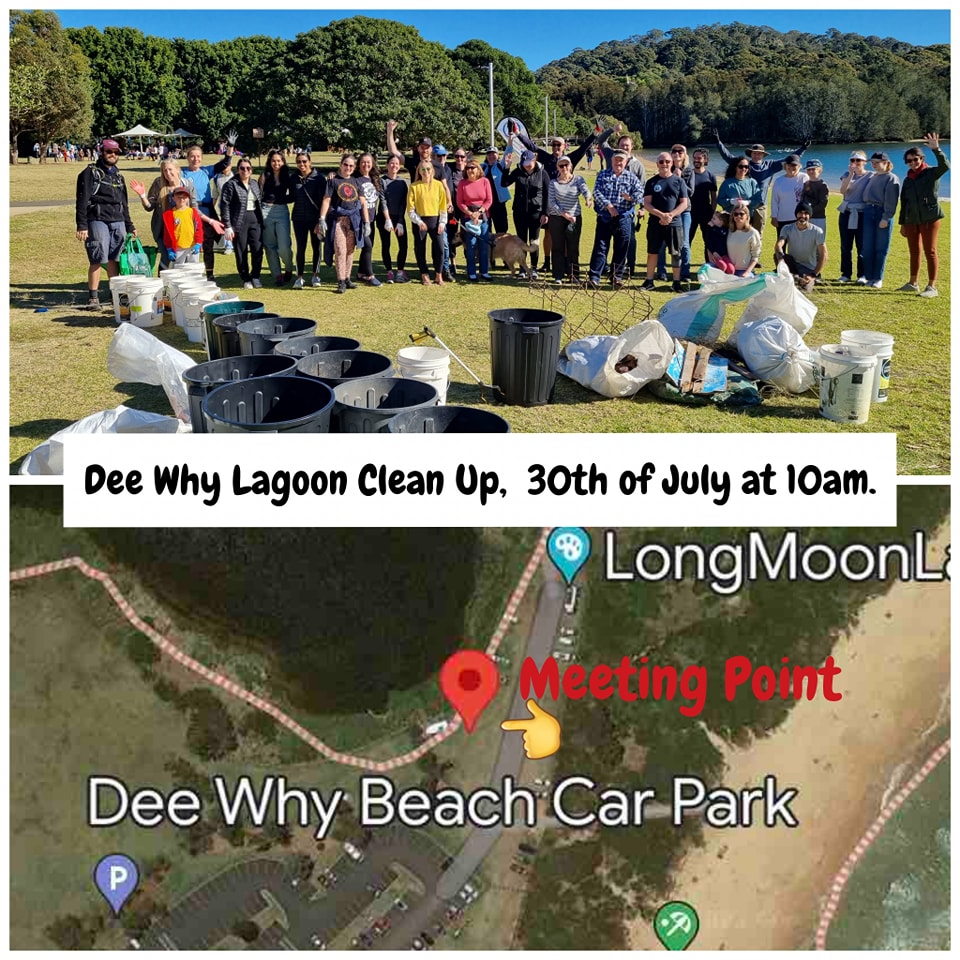
Koala Vigil: Opposite Parliament House At Martin Place On Thursday 3rd August 12-1 Pm

Endangered 4-Month Old Monk Seal Pup Found Dead In Hawaii Was Likely Caused By Dog Attack Officials Say
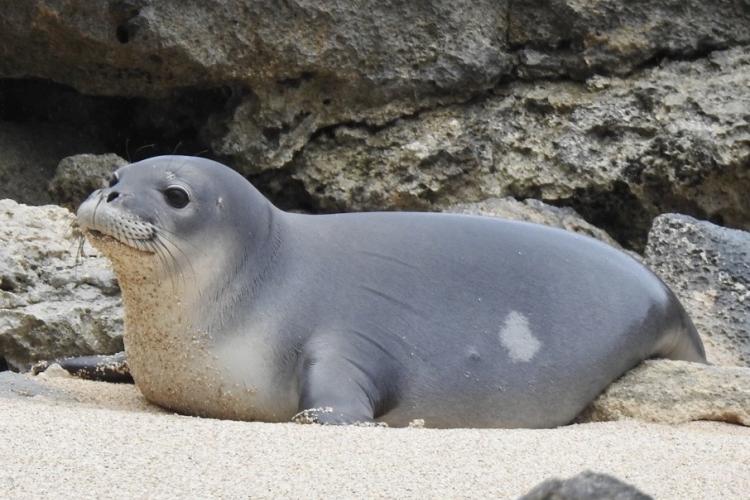
Turtle Conservation Program Named Eureka Prize Finalist
Seen Any Glossies Drinking Around Nambucca, Bellingen, Coffs Or Clarence? Want To Help?: Join The Glossy Squad
- a female bird (identifiable by yellow on her head) begging and/or being fed by a male (with plain black/brown head and body and unbarred red tail feathers)
- a lone adult male, or a male with a begging female, flying purposefully after drinking at the end of the day.

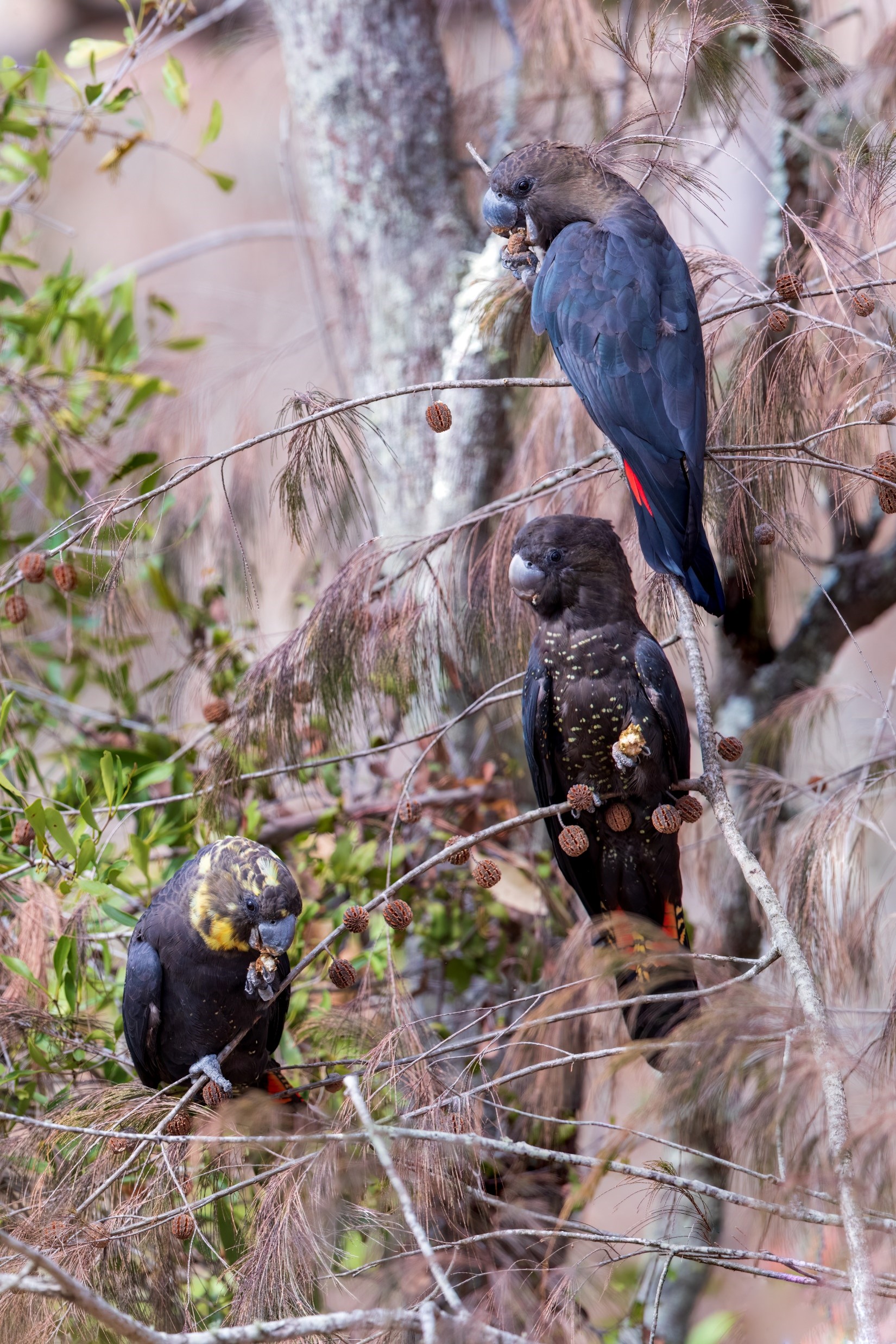
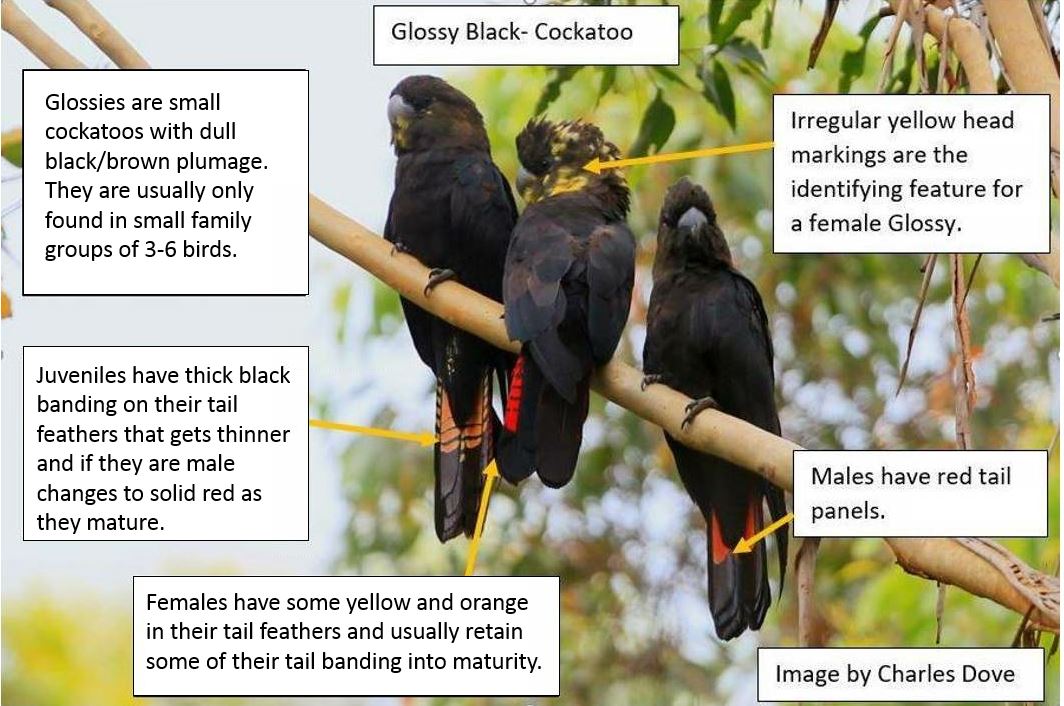
- One-hundred brush-tailed mulgaras released onto Dirk Hartog Island
- Eighth species translocated as part of ground-breaking ecological restoration project
- Return to 1616 project is protecting populations of unique Western Australian wildlife
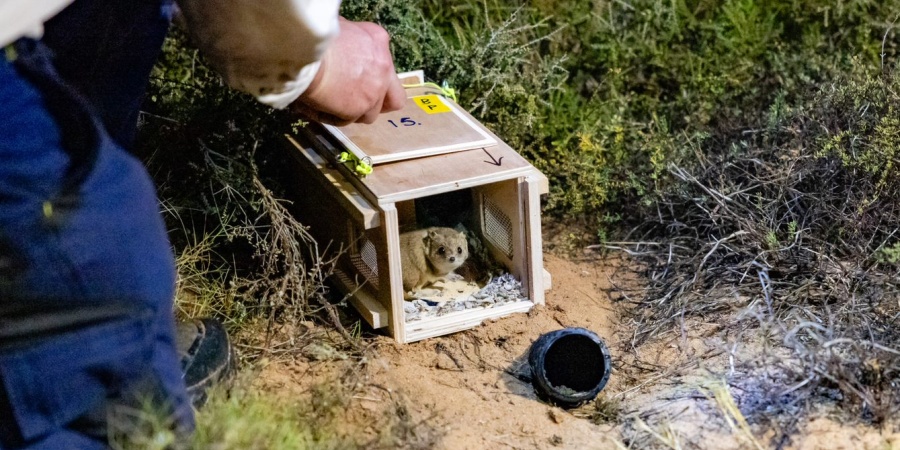
Endangered Dibblers Destined For Dirk Hartog Island National Park
- 24 Dibblers will be released at Dirk Hartog Island National Park for the first time
- Since 1997 over 900 Dibblers bred at Perth Zoo have been released into the wild
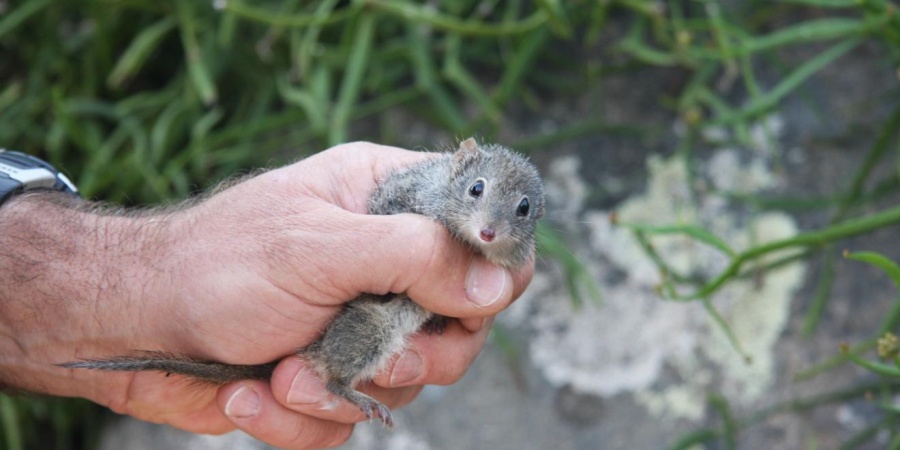
WA's New Strategy To Crackdown On Feral Cats In Nation First
- New five-year plan to manage invasive feral cats across Western Australia
- Strategy first of its kind to be implemented by a State Government in the nation
- $7.6 million investment to expand feral cat management in 2023-24 State Budget
- Fight against feral cats ramps up to protect native wildlife and biodiversity

New Victorian Homes To Go All Electric From 2024
Get Off The Gas: Victoria Is Quitting Gas, NSW Should Follow Suit
New Trail In Yallock-Bulluk Set To Stun Visitors
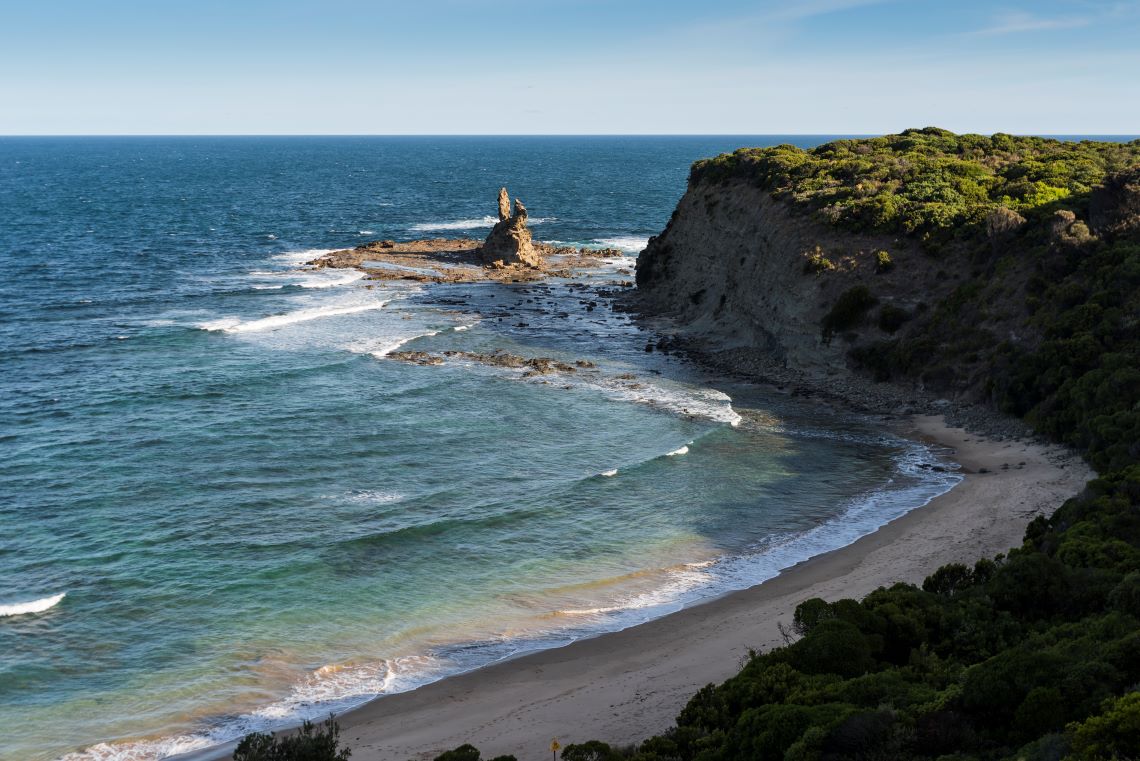
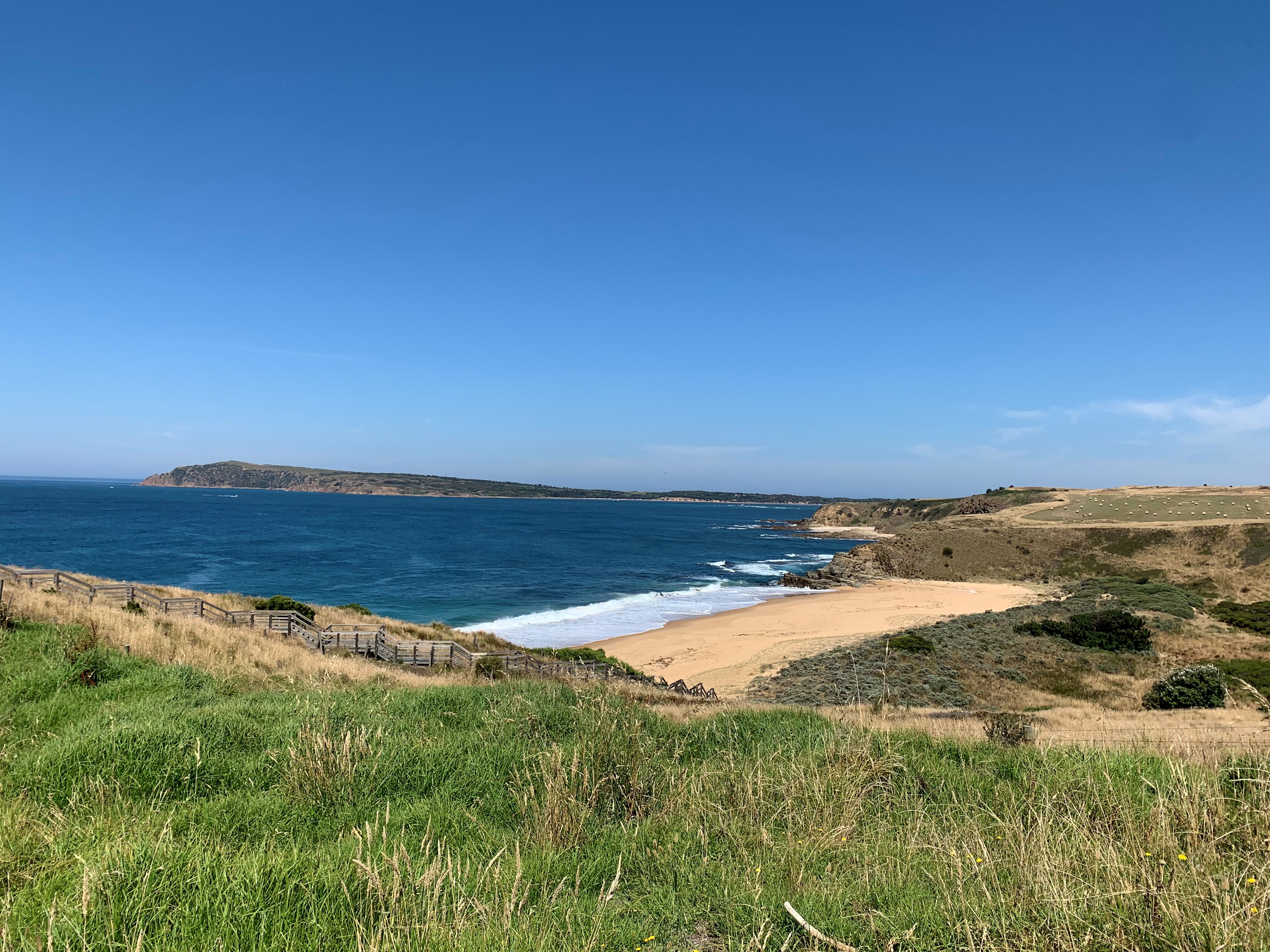
Australia's First Commercial Hydrogen Refuelling Station Opens At Port Kembla
 Port Kembla is now home to Australia's first commercial hydrogen refuelling station for zero emissions heavy road vehicles, in a major breakthrough towards de-carbonising the region’s 7000 heavy vehicles, the NSW Government has announced.
Port Kembla is now home to Australia's first commercial hydrogen refuelling station for zero emissions heavy road vehicles, in a major breakthrough towards de-carbonising the region’s 7000 heavy vehicles, the NSW Government has announced.NSW Landholders To Be Rewarded For Private Land Conservation

Tasmanian ALP Continues To Back Wildlife Slaughter And Forest Destruction
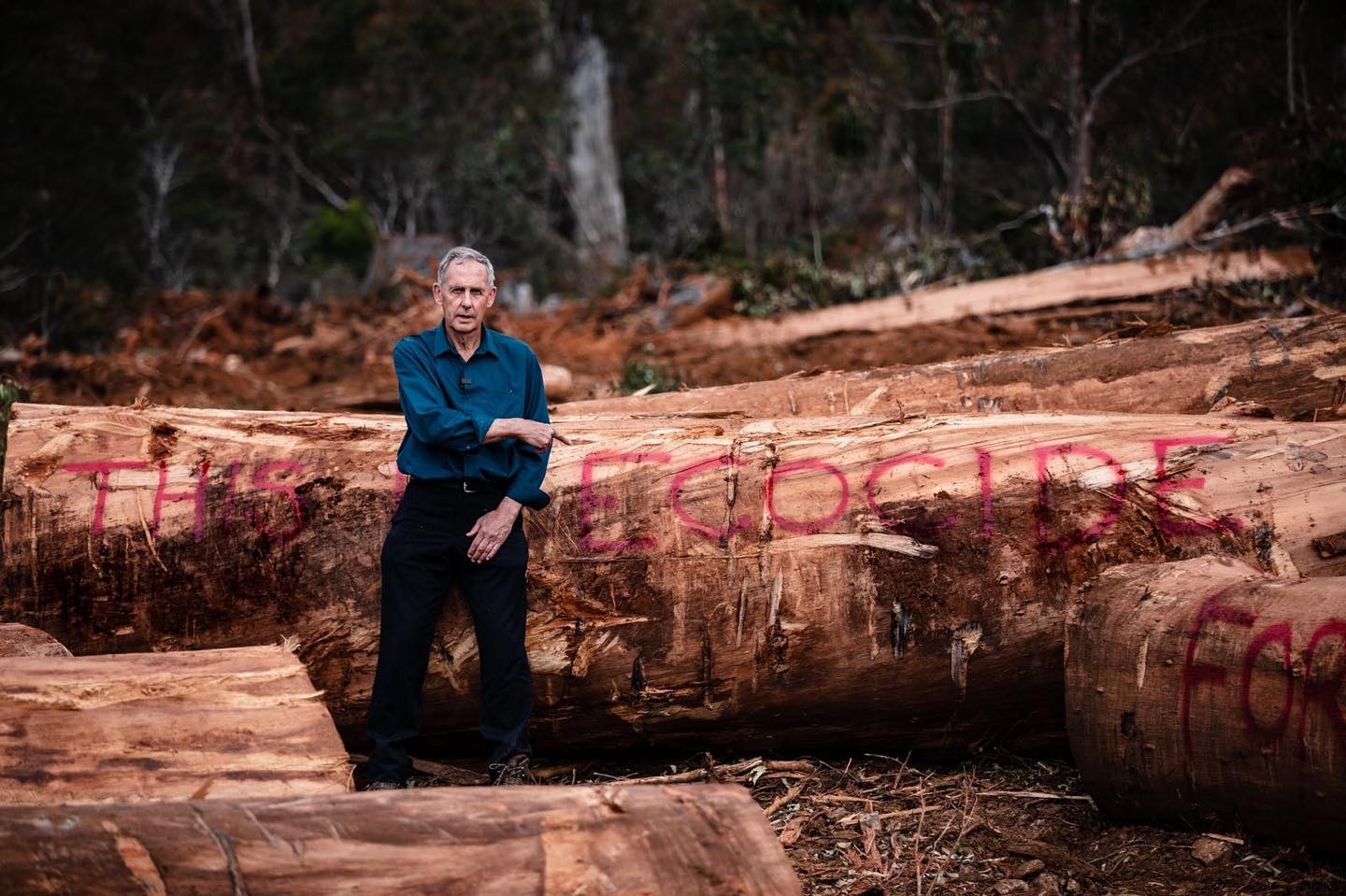
Rockliff Liberal Tasmanian Government States It Is 'Rock-Solid In Our Support For Tasmania’s Forestry Sector'
Areas Closed For West Head Lookout Upgrades
 NPWS advise that the following areas are closed from Monday 22 May to Thursday 30 November 2023 while West Head lookout upgrades are underway:
NPWS advise that the following areas are closed from Monday 22 May to Thursday 30 November 2023 while West Head lookout upgrades are underway:
- West Head lookout
- The loop section of West Head Road
- West Head Army track.
Vehicles, cyclists and pedestrians will have access to the Resolute picnic area and public toilets. Access is restricted past this point.
The following walking tracks remain open:
- Red Hands track
- Aboriginal Heritage track
- Resolute track, including access to Resolute Beach and West Head Beach
- Mackeral Beach track
- Koolewong track.
The West Head lookout cannot be accessed from any of these tracks.
Image: Visualisation of upcoming works, looking east from the ramp towards Barrenjoey Head Credit: DPE

Time Of Burrugin
Cold and frosty; June-July
Echidna seeking mates - Burringoa flowering - Shellfish forbidden
This is the time when the male Burrugin (echidnas) form lines of up to ten as they follow the female through the woodlands in an effort to wear her down and mate with her. It is also the time when the Burringoa (Eucalyptus tereticornis) starts to produce flowers, indicating that it is time to collect the nectar of certain plants for the ceremonies which will begin to take place during the next season. It is also a warning not to eat shellfish again until the Boo'kerrikin (Acacia decurrens, commonly known as black wattle or early green wattle) blooms.
Eucalyptus tereticornis, commonly known as forest red gum, blue gum or red irongum, is a species of tree that is native to eastern Australia and southern New Guinea. It has smooth bark, lance-shaped to curved adult leaves, flower buds in groups of seven, nine or eleven, white flowers and hemispherical fruit.
Eucalyptus tereticornis was first formally described 1795 by James Edward Smith in A Specimen of the Botany of New Holland from specimens collected in 1793 from Port Jackson by First Fleet surgeon and naturalist John White. The specific epithet (tereticornis) is from the Latin words teres (becoming tereti- in the combined form) meaning "terete" and cornu meaning "horn", in reference to the horn-shaped operculum.
Habitat tree: Sclerophyll Forest.
Food tree: Natural stands are an important food tree for koalas and a wide variety of nectar-eating birds, fruit bats and possums.
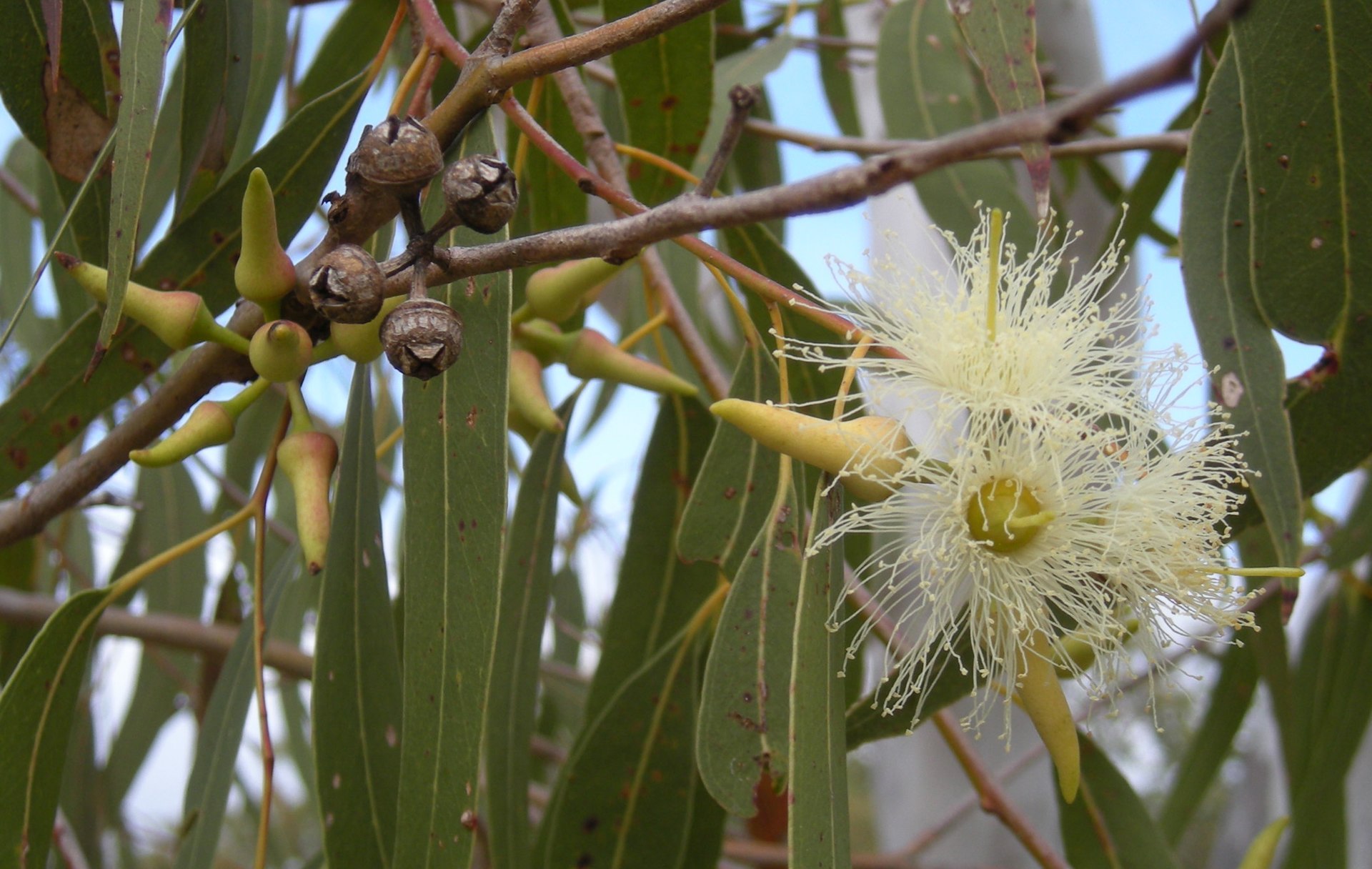
Eucalyptus tereticornis buds, capsules, flowers and foliage, Rockhampton, Queensland. Photo: Ethel Aardvark
Shelly Beach Echidna
Photos by Kevin Murray, taken late May 2023 who said, ''he/she was waddling across the road on the Shelly Beach headland, being harassed not so much by the bemused tourists, but by the Brush Turkeys who are plentiful there.''
Shelly Beach is located in Manly and forms part of Cabbage Tree Bay, a protected marine reserve which lies adjacent to North Head and Fairy Bower.
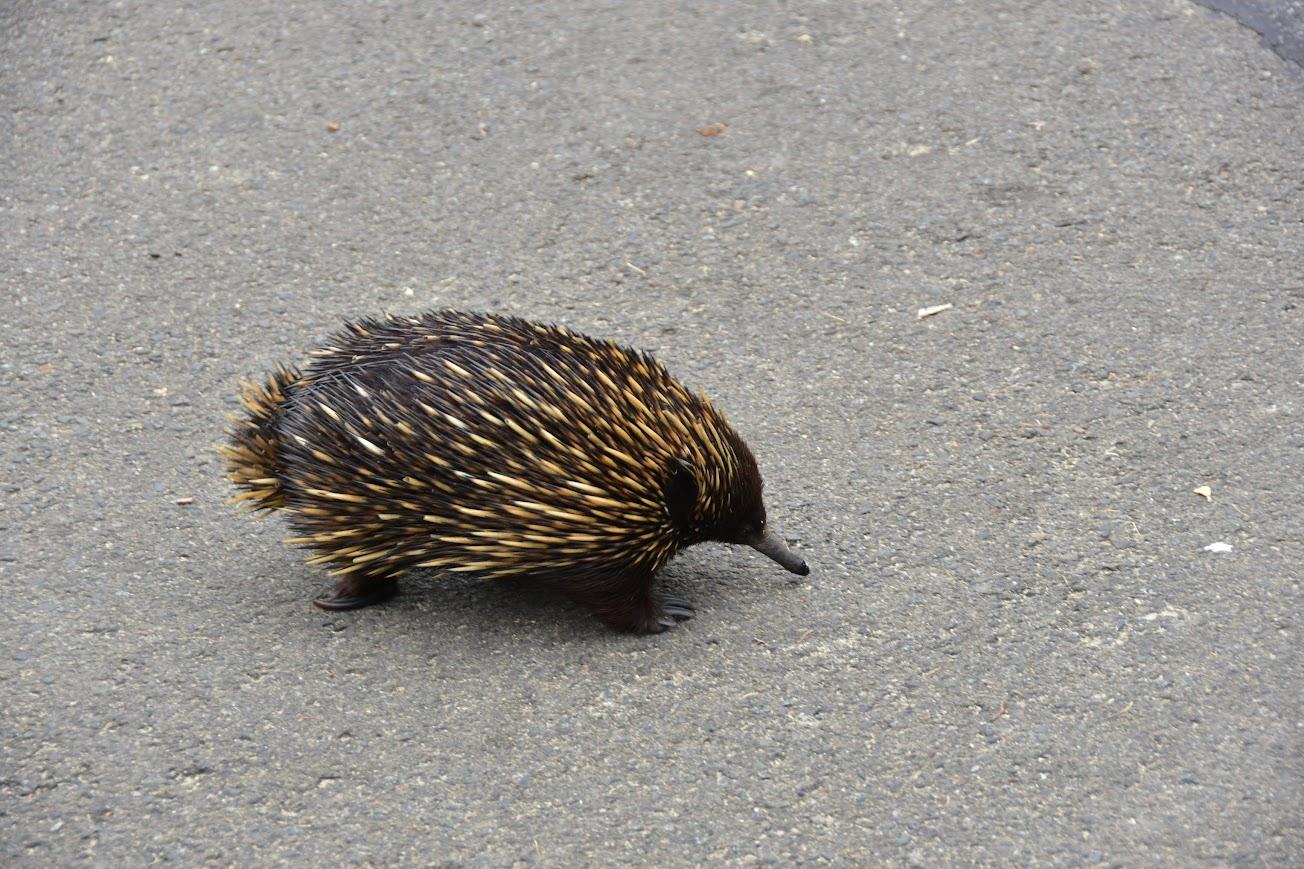
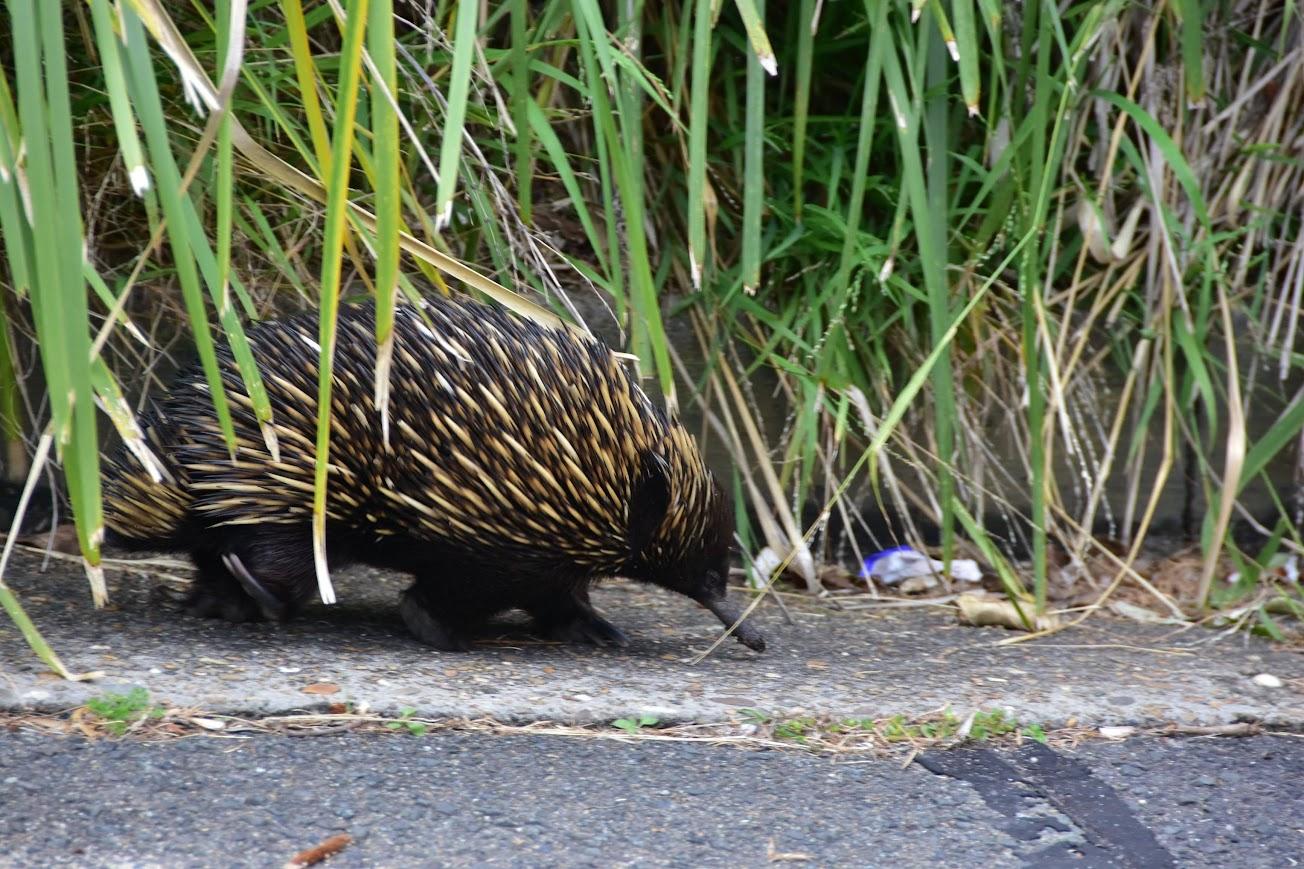
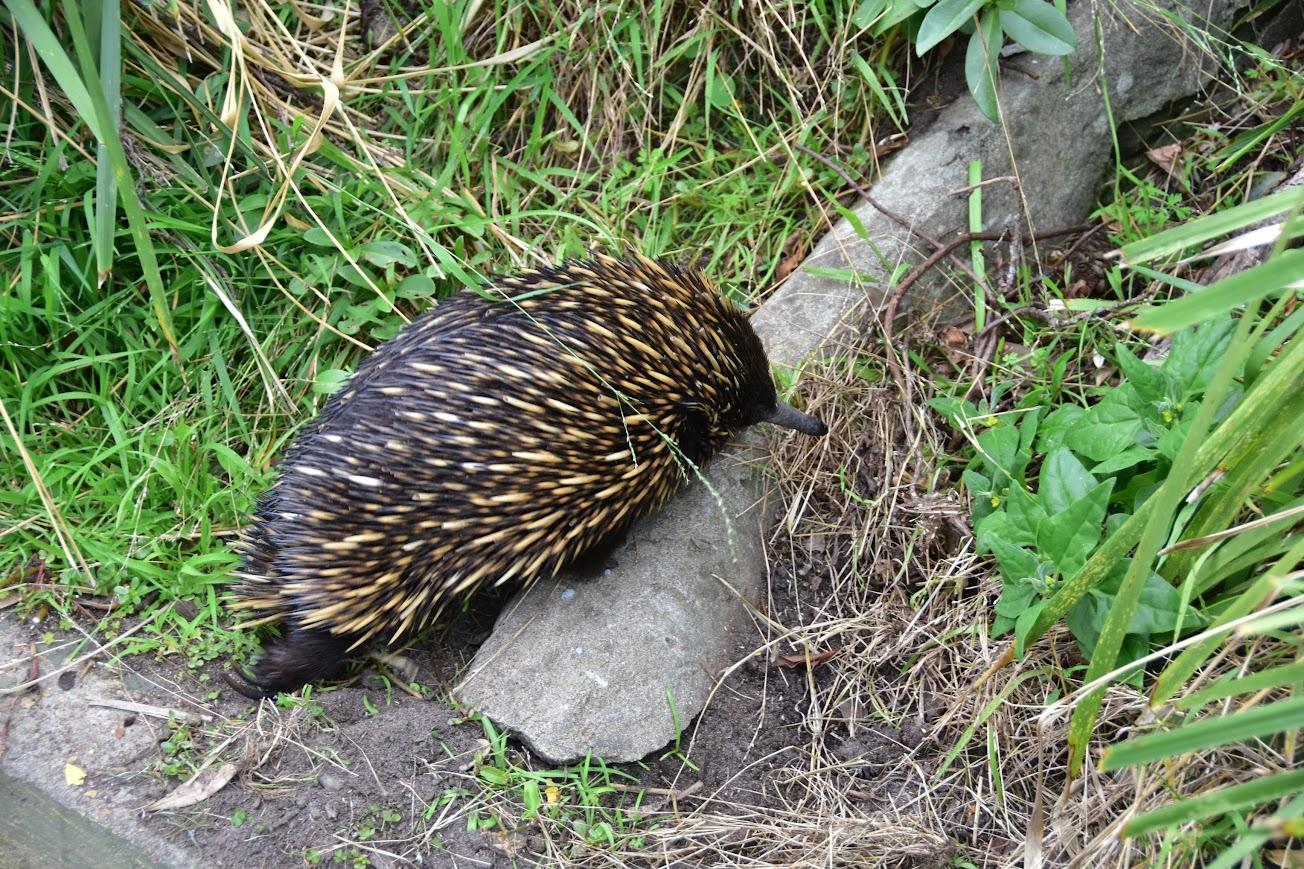
From the D'harawal calendar, BOM
D'harawal
The D'harawal Country and language area extends from the southern shores of Port Jackson (Sydney Harbour) to the northern shores of the Shoalhaven River, and from the eastern shores of the Wollondilly River system to the eastern seaboard.
Bush Turkeys: Backyard Buddies Breeding Time Commences In August - BIG Tick Eaters - Ringtail Posse Insights
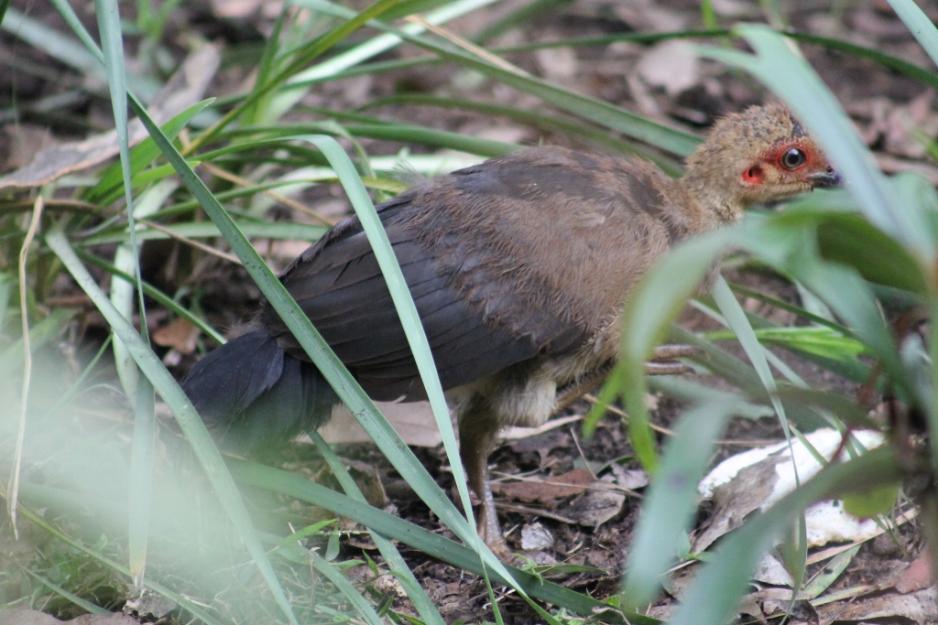
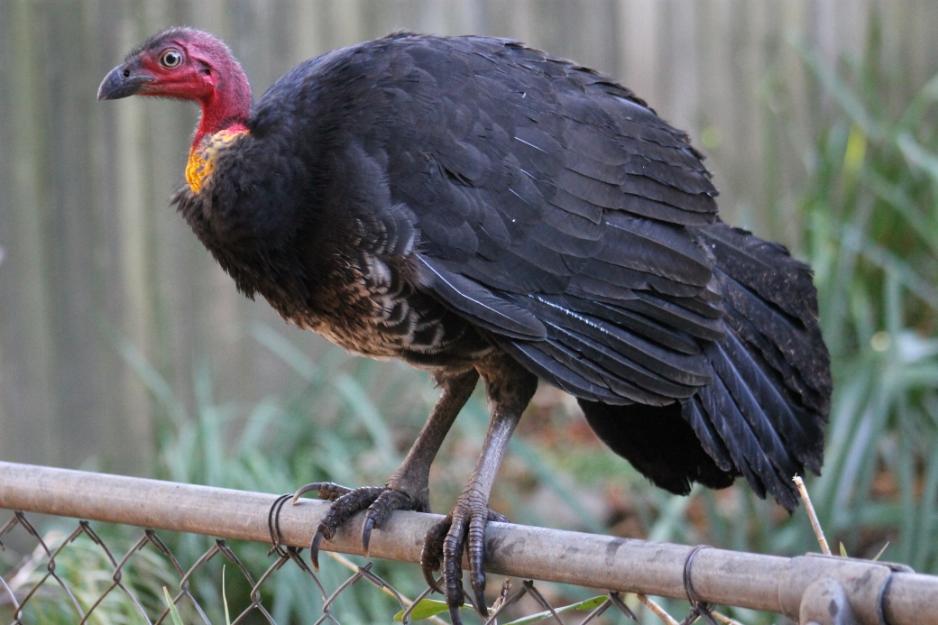
PNHA Guided Nature Walks 2023
Our walks are gentle strolls, enjoying and learning about the bush rather than aiming for destinations. Wear enclosed shoes. We welcome interested children over about 8 years old with carers. All Welcome.
So we know you’re coming please book by emailing: pnhainfo@gmail.com and include your phone number so we can contact you if weather is doubtful.
The whole PNHA 2023 Guided Nature Walks Program is available at: http://pnha.org.au/test-walks-and-talks/
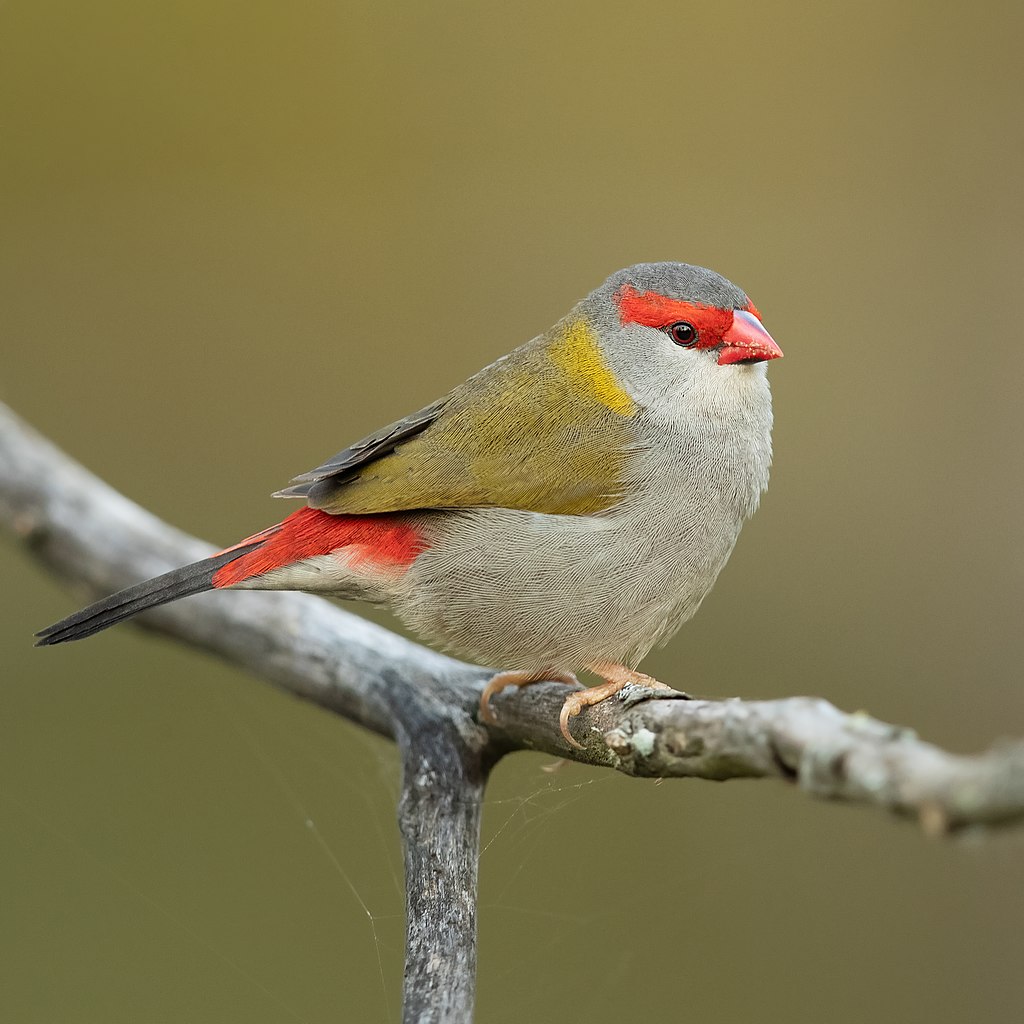
Red-browed finch (Neochmia temporalis). Photo: J J Harrison
Bushcare In Pittwater
Where we work Which day What time
Avalon
Angophora Reserve 3rd Sunday 8:30 - 11:30am
Avalon Dunes 1st Sunday 8:30 - 11:30am
Avalon Golf Course 2nd Wednesday 3 - 5:30pm
Careel Creek 4th Saturday 8:30 - 11:30am
Toongari Reserve 3rd Saturday 9 - 12noon (8 - 11am in summer)
Bangalley Headland 2nd Sunday 9 to 12noon
Bayview
Winnererremy Bay 4th Sunday 9 to 12noon
Bilgola
North Bilgola Beach 3rd Monday 9 - 12noon
Algona Reserve 1st Saturday 9 - 12noon
Plateau Park 1st Friday 8:30 - 11:30am
Church Point
Browns Bay Reserve 1st Tuesday 9 - 12noon
McCarrs Creek Reserve Contact Bushcare Officer To be confirmed
Clareville
Old Wharf Reserve 3rd Saturday 8 - 11am
Elanora
Kundibah Reserve 4th Sunday 8:30 - 11:30am
 Mona Vale
Mona Vale Mona Vale Beach Basin 1st Saturday 8 - 11am
Mona Vale Dunes 2nd Saturday +3rd Thursday 8:30 - 11:30am
Newport
Bungan Beach 4th Sunday 9 - 12noon
Crescent Reserve 3rd Sunday 9 - 12noon
North Newport Beach 4th Saturday 8:30 - 11:30am
Porter Reserve 2nd Saturday 8 - 11am
North Narrabeen
Irrawong Reserve 2nd Saturday 2 - 5pm
Palm Beach
North Palm Beach Dunes 3rd Saturday 9 - 12noon
Scotland Island
Catherine Park 2nd Sunday 10 - 12:30pm
Elizabeth Park 1st Saturday 9 - 12noon
Pathilda Reserve 3rd Saturday 9 - 12noon
Warriewood
Warriewood Wetlands 1st Sunday 8:30 - 11:30am
Whale Beach
Norma Park 1st Friday 9 - 12noon
Western Foreshores
Coopers Point, Elvina Bay 2nd Sunday 10 - 1pm
Rocky Point, Elvina Bay 1st Monday 9 - 12noon
Friends Of Narrabeen Lagoon Catchment Activities

Gardens And Environment Groups And Organisations In Pittwater
Report Fox Sightings
%20(1).jpg?timestamp=1675893929686)
Marine Wildlife Rescue Group On The Central Coast
A new wildlife group was launched on the Central Coast on Saturday, December 10, 2022.
Marine Wildlife Rescue Central Coast (MWRCC) had its official launch at The Entrance Boat Shed at 10am.
The group comprises current and former members of ASTR, ORRCA, Sea Shepherd, Greenpeace, WIRES and Wildlife ARC, as well as vets, academics, and people from all walks of life.
Well known marine wildlife advocate and activist Cathy Gilmore is spearheading the organisation.
“We believe that it is time the Central Coast looked after its own marine wildlife, and not be under the control or directed by groups that aren’t based locally,” Gilmore said.
“We have the local knowledge and are set up to respond and help injured animals more quickly.
“This also means that donations and money fundraised will go directly into helping our local marine creatures, and not get tied up elsewhere in the state.”
The organisation plans to have rehabilitation facilities and rescue kits placed in strategic locations around the region.
MWRCC will also be in touch with Indigenous groups to learn the traditional importance of the local marine environment and its inhabitants.
“We want to work with these groups and share knowledge between us,” Gilmore said.
“This is an opportunity to help save and protect our local marine wildlife, so if you have passion and commitment, then you are more than welcome to join us.”
Marine Wildlife Rescue Central Coast has a Facebook page where you may contact members. Visit: https://www.facebook.com/profile.php?id=100076317431064
- Ph: 0478 439 965
- Email: marinewildlifecc@gmail.com
- Instagram: marinewildliferescuecc
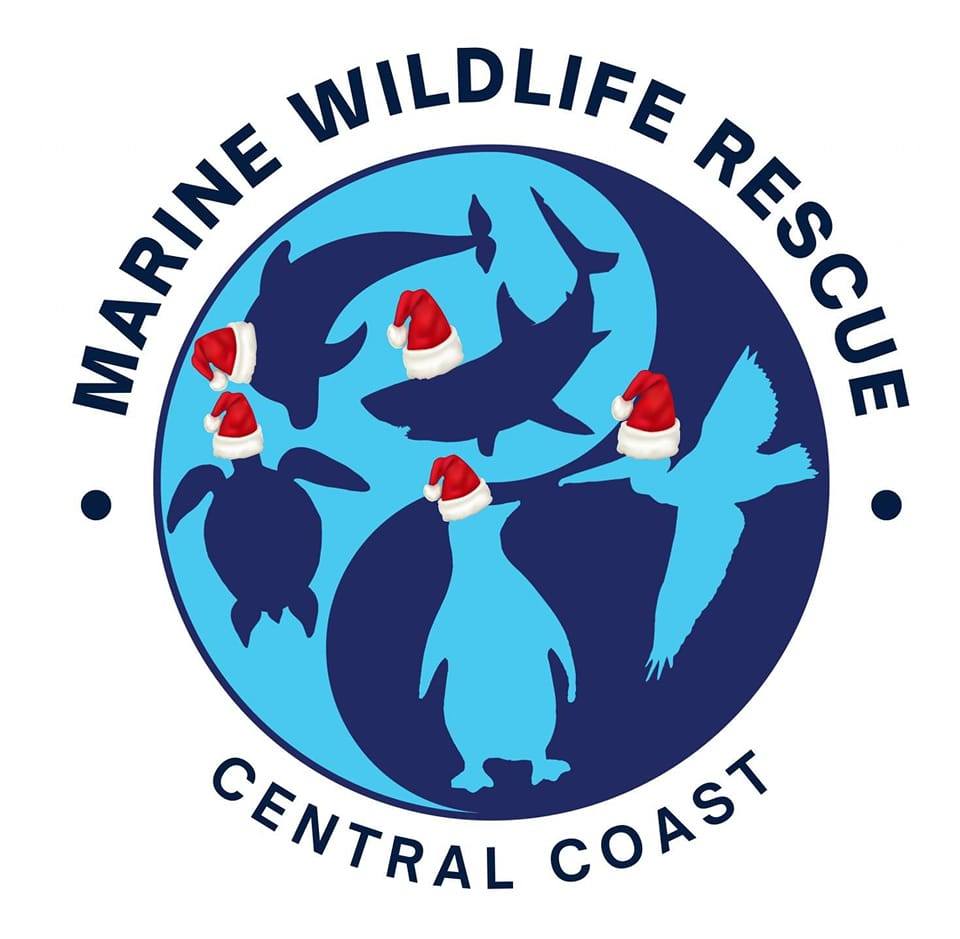
Watch Out - Shorebirds About
.JPG.opt1460x973o0,0s1460x973.jpg?timestamp=1663629195339)
Possums In Your Roof?: Do The Right Thing

Aviaries + Possum Release Sites Needed

Hottest July Ever Signals ‘Era Of Global Boiling Has Arrived’ Says UN Chief
Warming Trend In Asia Set To Cause More Disruption: UN Weather Agency

Seismic Testing + Exploration Drilling In Western Australia, Victorian, Tasmanian, Northern Territory Waters - Past And Currently Open For Feedback Proposals
NOPSEMA's Compliance Strategy 2023 Released
Why can’t we just tow stranded whales and dolphins back out to sea?
Vanessa Pirotta, Macquarie UniversityOn Tuesday night, a pod of almost 100 long-finned pilot whales stranded itself on a beach on Western Australia’s south coast. Over the course of Wednesday, more than 100 parks and wildlife staff and 250 registered volunteers worked tirelessly to try to keep alive the 45 animals surviving the night.
They used small boats and surf skis to try to get the pilot whales into deeper water. Volunteers helped keep the animals’ blowholes above water to prevent them drowning, and poured water on them to cool them down.
Our rescue efforts were, sadly, unsuccessful. The animals (actually large ocean-going dolphins) able to be towed or helped out to deeper water turned around and stranded themselves again, further down the beach. Sadly, they had to be euthanised.
Unfortunately, towing whales and dolphins is not simple. It can work and work well, as we saw in Tasmania last year, when dozens of pilot whales were rescued. But rescuers have to have good conditions and a fair dash of luck for it to succeed.
Rescuing Beached Whales Is Hard
When we try to rescue stranded whales and dolphins, the goal is to get them off the sandbars or beach, and back into deep water.
Why is it so difficult? Consider the problem. First, you have to know that a pod has beached itself. Then, you have to be able to get there in time, with people skilled in wildlife rescue.
These animals are generally too big and heavy to rely on muscle power alone. To get them out far enough, you need boats and sometimes tractors. That means the sea conditions and the slope of the beach have to be suitable.
Often, one of the first things rescuers might do is look for those individuals who might be good candidates to be refloated. Generally, these are individuals still alive, and not completely exhausted.
If rescuers have boats and good conditions, they may use slings. The boats need to be able to tow the animals well out to sea.
Trained people must always be there to oversee the operation. That’s because these large, stressed animals could seriously injure humans just by moving their bodies on the beach.
There are extra challenges. Dolphins and whales are slippery and extremely heavy. Long-finned pilot whales can weigh up to 2.3 tonnes. They may have never seen humans before and won’t necessarily know humans are there to help.
They’re out of their element, under the sun and extremely stressed. Out of the water, their sheer weight begins to crush their organs. They can also become sunburnt. Because they are so efficient at keeping a comfortable temperature in the sea, they can overheat and die on land. Often, as we saw yesterday, they can’t always keep themselves upright in the shallow water.
And to add to the problem, pilot whales are highly social. They want to be with each other. If you tow a single animal back out to sea, it may try to get back to its family and friends or remain disorientated and strand once again.
Because of these reasons – and probably others – it wasn’t possible to save the pilot whales yesterday. Those that didn’t die naturally were euthanised to minimise their suffering.
Successful Rescues Do Happen
Despite the remarkable effort from authorities and local communities, we couldn’t save this pod. Every single person working around the clock to help these animals did an amazing job, from experts to volunteers in the cold water to those making cups of tea.
But sometimes, we get luckier. Last year, 230 pilot whales beached themselves at Macquarie Harbour, on Tasmania’s west coast. By the time rescuers could get there, most were dead. But dozens were still alive. This time, conditions were different and towing worked.
Rescuers were able to bring boats close to shore. Surviving pilot whales were helped into a sling, and then the boat took them far out to sea. Taking them to the same location prevented them from beaching again.
Every Stranding Lets Us Learn More
Unfortunately, we don’t really know why whales and dolphins strand at all. Has something gone wrong with how toothed whales and dolphins navigate? Are they following a sick leader? Are human-made undersea sounds making it too loud? Are they avoiding predators such as killer whales? We don’t know.
We do know there are stranding hotspots. Macquarie Harbour is one. In 2020, it was the site of one of the worst-ever strandings, with up to 470 pilot whales stranded. Authorities were able to save 94, drawing on trained rescue experts.
We will need more research to find out why they do this. What we do know suggests navigational problems play a role.
That’s because we can divide whales and dolphins into two types: toothed and toothless. Whales and dolphins with teeth – such as pilot whales – appear to beach a lot more. These animals use echolocation (biological sonar) to find prey with high-pitched clicks bouncing off objects. But toothless baleen whales like humpbacks (there are no dolphins with baleen) don’t use this technique. They use low-frequency sounds, but to communicate, not hunt.
So – it is possible to save beached whales and dolphins. But it’s not as easy as towing them straight back to sea, alas.
The Conversation thanks 10-year-old reader Grace Thornton from Canberra for suggesting the question that gave rise to this article.![]()
Vanessa Pirotta, Postdoctoral Researcher and Wildlife Scientist, Macquarie University
This article is republished from The Conversation under a Creative Commons license. Read the original article.
An expert explains the stranding of 97 pilot whales in WA and their mysterious ‘huddling’ before the tragedy
Kate Sprogis, The University of Western AustraliaSad scenes are unfolding in Western Australia after a pod of pilot whales became stranded on a beach late on Tuesday. According to the latest reports, 51 of the whales have died. Some 46 remain beached and authorities are working desperately to get them back out to sea.
Pilot whale strandings unfortunately occur in WA, and other Australian states, from time to time. In recent years they have also occurred in New Zealand and Scotland. But this stranding is unusual because of the behaviour the whales exhibited prior to becoming beached.
The pod of long-finned pilot whales began congregating in the ocean off Cheynes Beach on Monday evening. They remained in a “huddle” on Tuesday, raising fears a stranding was imminent.
I am a marine biologist who specialises in marine mammals. I am based at the University of Western Australia’s Albany campus, about 70 kilometres from where the stranding occurred. Sadly, the chances of survival for the remaining whales is very low – and time is fast running out.
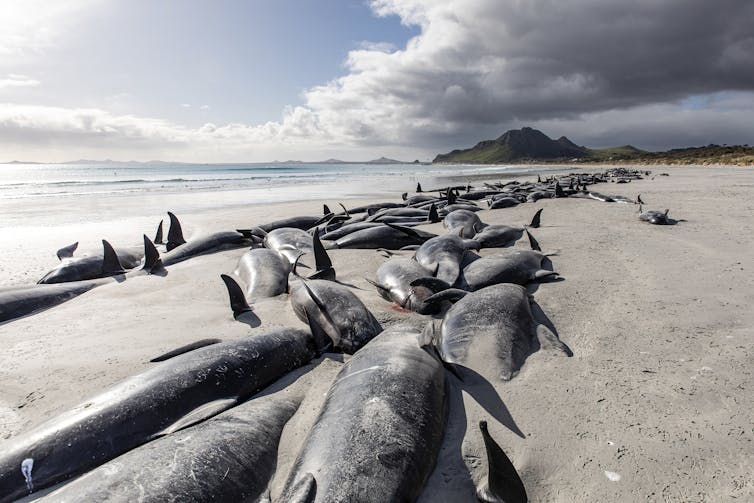
Understanding Pilot Whales
There are two species of pilot whales: short-finned (which live mainly in tropical and warm-temperate regions) and long-finned (generally found in colder waters). As the name suggests, the long-finned pilot whales have longer pectoral fins than their counterparts.
The pilot whales stranded at Cheynes Beach are long-finned. They are generally found offshore, in the deep open ocean. We rarely see them close to the coast. This makes the species hard to study.
Pilot whales are, however, known to inhabit Bremer Canyon, a very deep ocean area 70 kilometres off the WA coast.
What Happened At Cheynes Beach?
The group of whales was spotted swimming in shallow waters at Cheynes Beach late on Monday. An official from the Department of Biodiversity, Conservation and Attractions called me on Tuesday morning, and asked about the strange huddling behaviour. I was immediately concerned.
Healthy pilot whales do not form huddles, so something seemed very wrong. The department’s drone footage showed the pod was forming a very tight ball, then moving into a line, then back into the ball shape. And the pod was in very shallow coastal water, which is odd.
We suspected the behaviour was a precursor to a stranding. The department prepared its whale stranding kit and had officials on standby in case a stranding occurred. Unfortunately, it did.
By 4pm on Tuesday, almost 100 whales had beached themselves. Officials monitored them overnight. By Wednesday morning, 51 had died.
This is unsurprising. And sadly, the chance of survival for the remaining whales is very low. Cold, windy conditions means the whales are susceptible to hypothermia. And if they are already sick – as is sometimes the case with beached whales – this combination of factors can be fatal.
What’s more, whales are not used to the pressure of gravity we experience on land. When whales are stranded, their organs can collapse due to the weight of their own body.
In some cases, long-finned pilot whales have been known to survive after being stranded. But time is of the essence.
Why Did The Whales Beach Themselves?
In 2015, another pod of pilot whales beached itself in Bunbury, north of Albany. Sadly, 12 died. At the time, I and a colleague conducted necropsies – scientific examinations of animals after death – but the findings were inconclusive.
Whale strandings cannot be predicted and we do not know exactly why they occur. But in the case of pilot whales, their social behaviour offers some clues.
Pilot whales are similar to elephants in that they live in tight-knit family groups. It’s thought mass strandings may occur when the matriarch of the group is sick and swims into shallow water, and the others follow, or are “piloted”.
Whales may also become stranded due to an external stress. For example, whales use sound to communicate, navigate and search for food. Loud man-made underwater noises can disrupt this system.
What Next?
Officials at Cheynes Beach are trying to refloat the whales. Researchers are also taking biopsy samples and nasal swabs from the dead whales.
Experts will examine the swabs and samples, to try and understand more about this stranding event. I anticipate they will look for evidence of illness such as influenza or cetacean morbillivirus, as well as stress from underwater noise.
You might also be wondering what everyday people can do to help. If you observe marine mammals behaving unusually or getting stranded, alert authorities. And please stand aside to let authorities and other experts do their work. This is vital for the welfare of the animals and the safety of both helpers and bystanders.
Right now, I feel a bit helpless. I would like to be able to answer everyone’s primary question: why do pilot whales become stranded? It is a long-standing mystery in marine mammal science, and we don’t really know the answer.
More research is needed. Scientists need funding to attend mass strandings, collect and analyse samples and write up the findings. That gives us the best chance of piecing together this complicated puzzle.
Correction: An earlier version of this article said 87 whales were stranded, rather than 97.![]()
Kate Sprogis, Adjunct Research Fellow, UWA Oceans Institute, The University of Western Australia
This article is republished from The Conversation under a Creative Commons license. Read the original article.
Gloomy Climate Calculation: Scientists Predict A Collapse Of The Atlantic Ocean Current To Happen Mid-Century
- The Atlantic Meridional Overturning Circulation (AMOC) is part of a global system of ocean currents. By far, it accounts for the most significant part of heat redistribution from the tropics to the northernmost regions of the Atlantic region -- not least to Western Europe.
- At the northernmost latitudes, circulation ensures that surface water is converted into deep, southbound ocean currents. The transformation creates space for additional surface water to be moved northward from equatorial regions. As such, thermohaline circulation is critical for maintaining the relatively mild climate of the North Atlantic region.
- The work is supported by TiPES, a joint-European research collaboration focused on tipping points of the climate system. The TiPES project is an EU Horizon 2020 interdisciplinary climate research project focused on tipping points in the climate system.
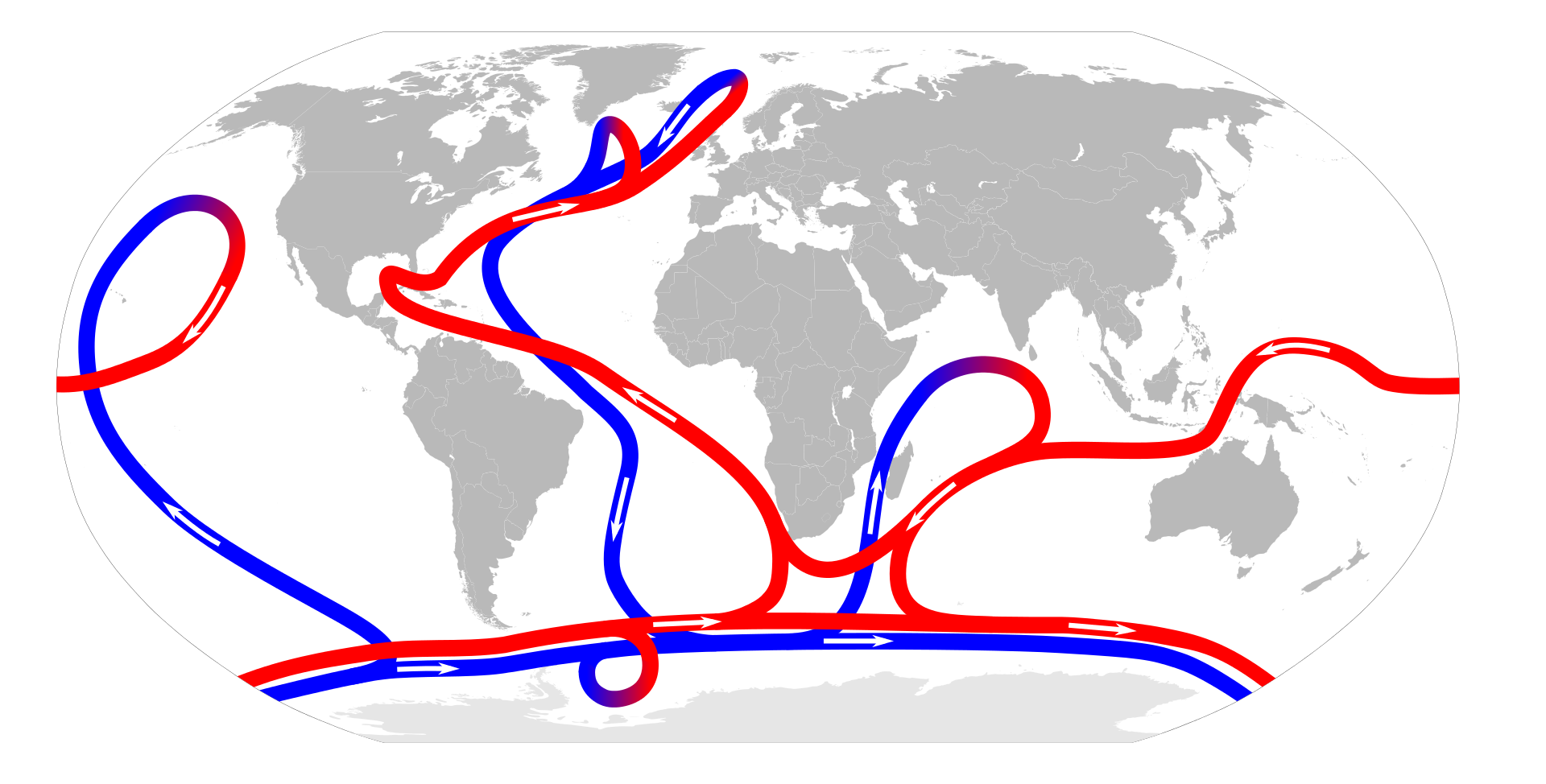
The Atlantic is at risk of circulation collapse – it would mean even greater climate chaos across Europe
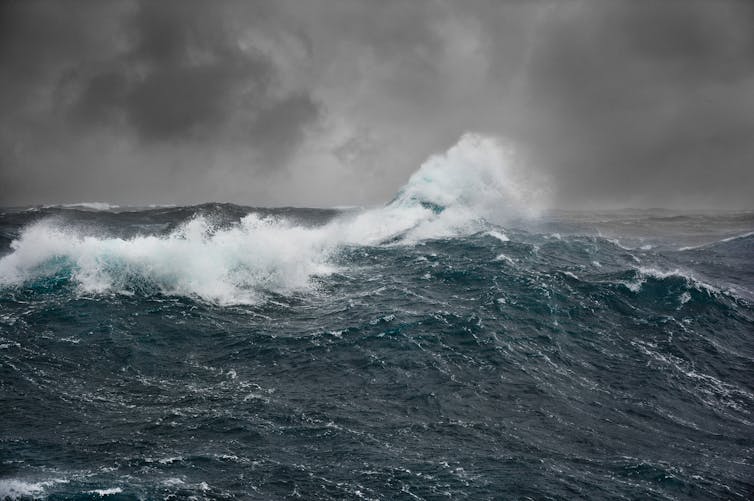
Amid news of lethal heatwaves across the Northern Hemisphere comes the daunting prospect of a climate disaster on an altogether grander scale. New findings published in Nature Communications suggest the Atlantic meridional overturning circulation, or Amoc, could collapse within the next few decades – maybe even within the next few years – driving European weather to even greater extremes.
The Amoc amounts to a system of currents in the Atlantic that bring warm water northwards where it then cools and sinks. It is a key reason why Europe’s climate has been stable for thousands of years, even if it’s hard to recognise this chaotic summer as part of that stability.
There is much uncertainty in these latest predictions and some scientists are less convinced a collapse is imminent. Amoc is also only one part of the wider Gulf Stream system, much of which is driven by winds that will continue to blow even if the Amoc collapses. So part of the Gulf Stream will survive an Amoc collapse.
But I have studied the links between Atlantic currents and the climate for decades now, and know that an Amoc collapse would still lead to even greater climate chaos across Europe and beyond. At minimum, it is a risk worth being aware of.
Amoc Helps Keep Europe Warm And Stable
To appreciate how much Amoc influences the climate in the northeast Atlantic, consider how much warmer north Europeans feel compared to people at similar latitudes elsewhere. The following maps show how surface air temperatures depart from the average at each latitude and highlight patterns of warm and cool spots around the planet:

Most striking in the northern winter (January) is a red spot centred to the west of Norway where temperatures are 20°C warmer than the latitude average, thanks to Amoc. The northeast Pacific – and therefore western Canada and Alaska – enjoys a more modest 10°C warming from a similar current, while prevailing westerly winds mean the northwest Atlantic and northwest Pacific are much colder, as are the adjacent land masses of eastern Canada and Siberia.
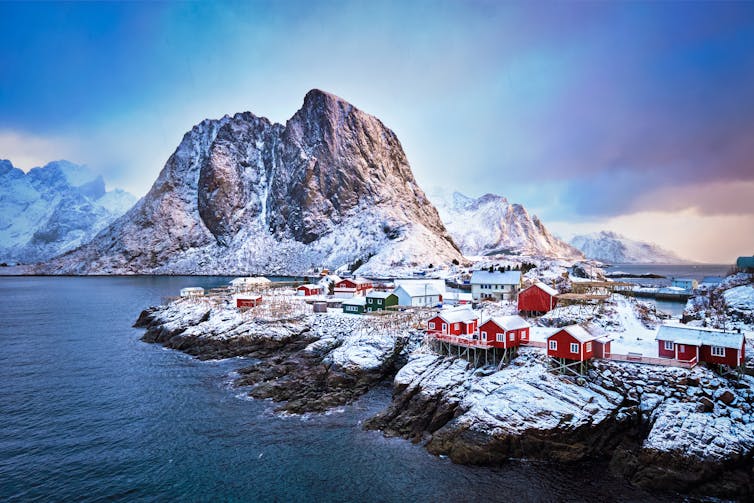
The weather and climate of Europe, and northern Europe in particular, is highly variable from day to day, week to week and year to year, with competing air masses (warm and moist, cold and dry, and so on) gaining or losing influence, often guided by the high-altitude jet stream. Changes in weather and climate can be triggered by events located far away – and over the ocean.
How Ocean Temperatures Are Linked To Weather
Over recent years Europe has witnessed some particularly unusual weather, in both winter and summer. At the same time, peculiar patterns of sea surface temperatures have appeared across the North Atlantic. Across great swathes of the ocean from the tropics to the Arctic, temperatures have persisted 1°C-2°C above or below normal levels, for months or even years on end. These patterns appear to exert a strong influence on the atmosphere, even influencing the path and strength of the jet stream.
To an extent, we can attribute some of these sea surface temperature patterns to a changing Amoc, but it’s often not that straightforward. Nevertheless, the association of extreme seasons and weather with unusual sea temperatures might give us an idea of how a collapsed Amoc would unsettle the status quo. Here are three examples.
Northern Europe experienced successive severe winters in 2009/10 and 2010/11, subsequently attributed to a brief slowdown of the Amoc. At the same time heat had built up in the tropics, fuelling an unusually active June-November hurricane season in 2010.
In the mid 2010s a “cold blob” formed in the North Atlantic, reaching its most extreme in the summer of 2015 when it coincided with heatwaves in central Europe and was one of the only parts of the world cooler than its long-term average.
The cold blob looked suspiciously like the fingerprint of a weakened Amoc, but colleagues and I subsequently attributed this transient episode to more local atmospheric influences.

In 2017, the tropical Atlantic was again warmer than average and once again an unusually active hurricane season ensued, although the Amoc was not as clearly involved as 2010. Extensive warmth to the northeast in late 2017 may have sustained hurricane Ophelia, emerging around the Azores and making landfall in Ireland in October.
Based on just these few examples, we can expect that a more substantial reorganisation of North Atlantic surface temperatures will have profound consequences for the climate in Europe and beyond.
Larger ocean temperature extremes may alter the character of weather systems that are powered by heat and moisture from the sea – when and where temperatures rise beyond current extremes, Atlantic storms may grow more destructive. More extreme ocean temperature patterns may exert further influences on tropical hurricane tracks and the jet stream, sending storms to ever more unlikely destinations.
If the Amoc collapses we can expect larger extremes of heat, cold, drought and flooding, a range of “surprises” to exacerbate the current climate emergency. The potential climate impacts – on Europe in particular – should add urgency to our decision-making.

Don’t have time to read about climate change as much as you’d like?
Get a weekly roundup in your inbox instead. Every Wednesday, The Conversation’s environment editor writes Imagine, a short email that goes a little deeper into just one climate issue. Join the 20,000+ readers who’ve subscribed so far.![]()
Robert Marsh, Professor of Oceanography and Climate, University of Southampton
This article is republished from The Conversation under a Creative Commons license. Read the original article.
Climate litigation is on the rise around the world and Australia is at the head of the pack
Jacqueline Peel, The University of MelbourneAustralians relish being at the top of international league tables in sport. But few would know we’re a global champion when it comes to using the courts to hold governments and companies to account on climate change.
A new report from the United Nations Environment Programme found a staggering 127 climate lawsuits in Australia. We’re second only to the United States on the number of cases and slightly ahead on a per capita basis. The count started in the 1990s and runs through to December 2022.
The research comes as the Northern Hemisphere suffers through unprecedented heatwaves and Antarctica experiences record sea ice retreat. And in Australia, we are bracing for an El Niño-charged summer.
The report says “climate litigation represents a frontier solution to change the dynamics of this fight” against climate change. And Australia, with our many cases and innovative tactics, is on the frontlines. But the report does not capture wins or losses. So while the case load is certainly growing and the field of law is maturing, it’s not yet clear what difference it will make in the long run.
What Is Climate Litigation?
Climate litigation describes a broad range of legal interventions brought to address climate change. The goal is generally to reduce emissions of climate-harming greenhouse gases (mitigation) or improve resilience in the face of climate impacts (adaptation).
These cases have become more common as the climate crisis has worsened and the gap grows between needed action and what governments and companies are actually delivering.
As the report states:
Climate change litigation provides civil society, individuals and others with one possible avenue to address inadequate responses by governments and the private sector to the climate crisis.
It’s an avenue that’s widely available. It can be accessed by many different groups including some of the most vulnerable. And it can be initiated using a wide range of laws, such as those protecting human rights, preventing misleading greenwashing, requiring corporate disclosures of climate risk or regulating the obligations of countries to reduce greenhouse gas emissions.
This could make climate litigation a powerful tool for those disproportionately affected to demand and secure climate justice.
Australia As A Climate Litigation Hotspot
The US tops the climate litigation charts with 1,522 lawsuits filed. Australia comes second with 127.
But we’re in front on a per capita basis. The US figure works out to about 4.6 lawsuits per million people, compared to 4.8 lawsuits per million in Australia.
Australia’s status has been driven by several factors. These include our carbon-intensive economy and significant fossil fuel exports. Until recently, the dearth of climate policy nationally also encouraged some to resort to the courts for solutions. Australia also has a very active and engaged civil society which has tried a range of innovative legal arguments.
A key example in the report is the case brought by eight Torres Strait Islanders and six of their children to the UN Human Rights Committee.
In 2022, the committee delivered a landmark decision, finding the Australian government was violating its human rights obligations to Torres Strait Islanders through climate inaction. The decision delivered a number of legal world-firsts including the first time a country had been held responsible for its greenhouse gas emissions under international human rights law.
Australia has also been a pioneer in climate litigation against private sector entities, starting a wave of cases now building to a tsunami globally. Leading this trend are anti-greenwashing complaints.
The report singles out a case brought by the Australasian Centre for Corporate Responsibility against oil and gas company Santos. It alleges the company’s pledge of net zero emissions by 2040 is misleading and deceptive in violation of Australia’s consumer protection laws. This case is before the courts.
More Where That Came From
The report acknowledges it applies a “narrow approach” to defining climate litigation by excluding cases not sent to courts or quasi-judicial bodies, or which don’t feature climate change as a central issue.
As we’ve found in our Australian and Pacific Climate Change Litigation database, maintained by Melbourne Climate Futures, a broader lens yields even more climate cases. Between 2000-22, our database records 371 examples of Australian climate litigation.
In previous research we found most Australian cases do not yield court wins. For example, there have been many cases against coal mines but only a handful have actually stopped the mine going ahead.
How Do Lawsuits Help Fight The Climate Crisis?
Litigation is an important tool for advancing climate action and accountability. A report last year by the Intergovernmental Panel on Climate Change considered climate litigation for the first time, finding some cases influenced the outcome and ambition of climate governance.
The latest report spells out ways individuals, communities and groups are using litigation to drive action. This includes efforts to:
enforce existing climate laws
ensure climate issues are widely integrated into planning and economic decision-making
force governments and companies to raise the ambition of their emissions reduction commitments
establish a link between climate change and human rights violations, and
seek compensation for climate harms.
Many cases put forward innovative legal arguments but are ultimately unsuccessful in getting the remedy they seek. One example is the 2021 Australian litigation by teenage climate activist Anjali Sharma and other young people against the federal environment minister, then Sussan Ley. Even where lawsuits do deliver a legal win, the report highlights potential “implementation challenges” when it comes to putting those judgements into action.
The report predicts where climate litigation might head next. This includes the potential for more cases addressing risks of climate displacement and migration, and consequences of climate-fuelled disasters such as the Black Saturday bushfires.
It also forecasts more cases brought by vulnerable groups, a trend we are already seeing in Australia. In the last year, several cases were brought by First Nations people and Indigenous youth. These challenged coal mines and gas projects impacting their traditional lands, or fought for greater government action to prevent islands in the Torres Strait being overwhelmed by sea level rise.
As demands for climate justice increase, further growth and worldwide spread of climate litigation now seems a given. ![]()
Jacqueline Peel, Director, Melbourne Climate Futures, The University of Melbourne
This article is republished from The Conversation under a Creative Commons license. Read the original article.
Through the magnifying glass: how cutting-edge technology is helping scientists understand baby corals
Marine Gouezo, Southern Cross University and Christopher Doropoulos, CSIRONew photographic technology has allowed scientists to dive beneath the ocean’s surface and peer into the hidden world of baby corals, to learn how these tiny organisms survive and grow in their crucial first year of life.
In a study just published, researchers from Southern Cross University and CSIRO describe how advanced imaging techniques offer new ways to monitor baby corals.
Corals provide vital habitat for a large variety of marine life. So it’s useful to better understand how baby corals select and attach to reefs, establish themselves and grow into adult corals.
This knowledge is particularly important if we want to help reefs recover from devastating events such as mass bleaching and cyclones.
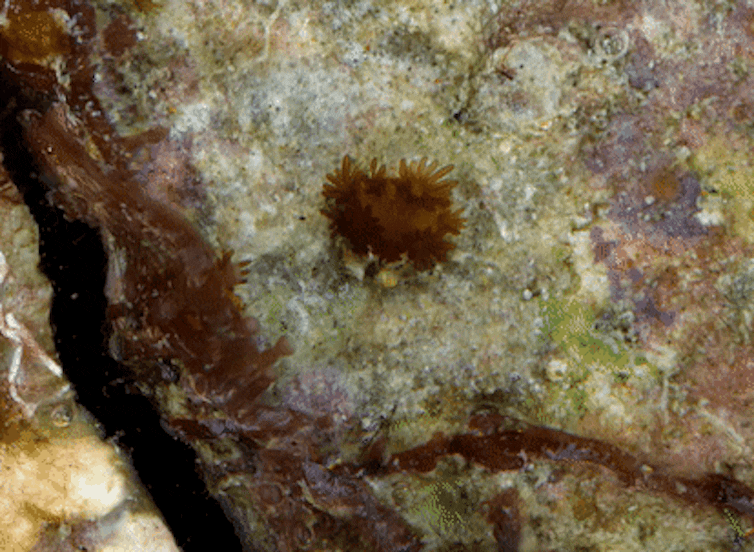
The Secret Life Of Corals
The life of a coral begins in an annual, synchronised spawning event. Coral colonies release millions of tiny eggs and sperm into the water at the same time. They all rise to the surface where the eggs are fertilised, developing into embryos and then later, into larvae.
Over days or weeks, the millions of larvae disperse with ocean currents. If things go according to nature’s plan, the larvae eventually fall through the water, attach to a reef and grow into adult corals. This process is known as coral “recruitment”.
In healthy coral reefs, this recruitment occurs naturally. But as coral reefs become more degraded – such as through coral bleaching brought on by climate change – fewer coral larvae are produced. This often means recruitment slows down or stops, and natural recovery weakens.
Scientists are working on ways to ensure coral larvae attach to and grow on reefs. This includes collecting coral spawn from the ocean, rearing embryos in floating nurseries and releasing larvae onto damaged reefs.
Coral larvae are less than one millimetre in size, so recruitment occurs on a tiny scale, invisible to the human eye. To better understand the process, researchers traditionally attach artificial plates to the reef. Once corals have established themselves, the plates are taken back to the lab to be inspected under a microscope.
This method can provide valuable insights, but it does not replicate the natural reef environment. That’s where our research comes in. Essentially, we brought the lab to the reef.
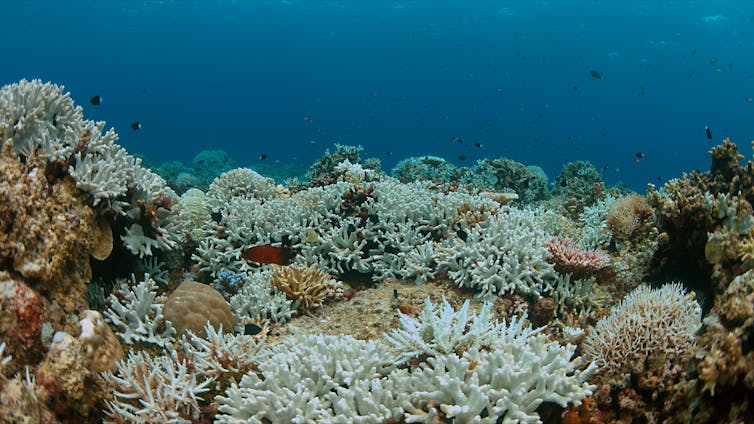
Capturing The Reef In Incredible 3D Detail
Our new study explores the development and application of an innovative imaging approach known as underwater “macrophotogrammetry”.
The technology combines macrophotography – photographing small objects close-up, at very high resolution – and photogrammetry – taking measurements from photos. In this case, we used photogrammetry to “stitch” photos together to recreate three-dimensional models, such as the one below.
The three round objects in the model are “targets” we placed to help the software stitch the photos together. Look closely, and you’ll see a nail head to the left of each target. To give you an idea of the scale of the model, the nail head is 2.8mm in diameter.

Reef-scale photogrammetry can be a valuable tool to track changes in coral cover and growth over time. However, it does not provide the detailed resolution needed to identify and observe tiny new corals.
Macrophotography provides this incredibly detailed scale. The coupling of the technologies also enables a comprehensive understanding of the entire ecosystem, from the smallest processes to the largest.
We conducted macrophotogrammetry surveys near Lizard Island on the Great Barrier Reef. We marked several 25cm x 25cm locations on the reef. We then captured hundreds of photographs taken at different angles using high-resolution cameras.
Photogrammetry software was used to process the photos, creating precise 3D models that represent the small sections of reef at very high resolution.
The models were examined to find where baby corals settle, to mark their location and measure their size. They reveal the complexity in the reef micro-structure, including tiny crevices, where coral larvae often settle.
The models also reveal diverse micro-organisms such as small turf algae or invertebrates, which interact with corals during the recruitment process.
Macrophotogrammetry surveys can be conducted at the same reef locations over time. This allows us to monitor the survival and growth of baby corals, and observe changes in the organisms living near them.
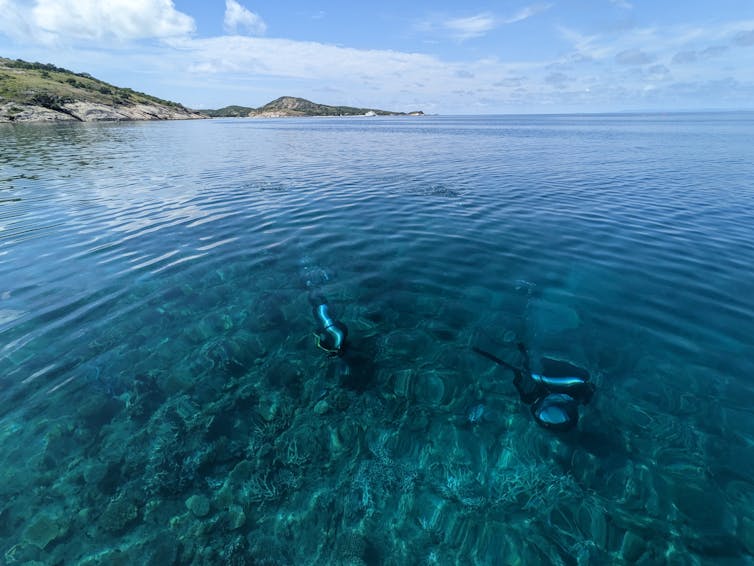
Looking Ahead
Complementary techniques may increase the potential of macrophotogrammetry even further. For example, coral larvae can be dyed various colours before release, making them more visible when they swim to and settle on the reef. This could be captured in 3D models to allow even better tracking of larval restoration efforts.
The use of macrophotogrammetry will deepen our understandings of why some larvae settle and survive on reefs, and others do not. This knowledge can help support our efforts to improve the overall conservation and recovery of coral reefs.
Its application need not be limited to coral reef ecosystems. We are excited about the potential of the technology to drive marine research more broadly.![]()
Marine Gouezo, Postdoctoral research fellow, Southern Cross University and Christopher Doropoulos, Senior research scientist, CSIRO
This article is republished from The Conversation under a Creative Commons license. Read the original article.
You’ve heard the annoyingly catchy song – but did you know these incredible facts about baby sharks?
Jaelen Nicole Myers, James Cook University“Baby shark doo-doo doo-doo doo-doo, baby shark doo-doo doo-doo doo-doo …” If you’re the parent of a young child, you’re probably painfully familiar with this infectious song, which now has more than 13 billion views on YouTube.
The Baby Shark song, released in 2016, has got hordes of us singing along, but how much do you really know about baby sharks? Do you know how a baby shark is born, or how it survives to become an apex predator?
I study coastal marine ecology. I believe baby sharks are truly fascinating, and I hope greater public knowledge about these creatures will help protect them in the wild.
So sink your teeth into this Q&A on the weird and wonderful world of baby sharks.
How Are Baby Sharks Conceived And Born?
To the human eye, shark courtship practices may seem barbaric. Males typically attract the attention of a female by biting her. If successful, this is generally followed by even toothier bites to hold on during copulation. Females can carry the scars of these encounters long after the mating season is over.
The act of copulation itself is comparable to that of humans. The male inserts its sexual organ, known as a “clasper”, into the female and releases sperm to fertilise the eggs.
However, in extremely rare cases, sharks can reproduce asexually – in other words, embryos develop without being fertilised. This occurred at a Queensland aquarium in 2016, when a zebra shark gave birth to a litter of pups despite not having had the chance to mate in several years.
Sharks give birth in a variety of ways. Some species produce live pups, which swim away to fend for themselves as soon as they’re born. Others hatch from eggs outside the mother’s body. Remnants of these egg cases have been found washed up on beaches across the world.
How Big Is A Litter Of Shark Pups?
Litter size across sharks varies considerably. For example, the grey nurse shark starts with several embryos but only two are born. This is because the embryos actually eat each other while in utero! This leaves only one survivor in each of the mother’s two uteruses.
Intrauterine cannibalism may seem disturbing but is nature’s way of ensuring that the strongest pups get the best chance of survival.
In contrast, other species such as the whale shark use a completely different strategy to ensure some of their offspring survive: having hundreds of pups in a single litter.
Where Do Baby Sharks Live?
The open ocean is a dangerous place. That’s why pregnant female sharks often give birth in shallow coastal waters known as “nurseries”. There, baby sharks are better protected from harsh environmental conditions and roaming predators, including other sharks.
Sites for shark nurseries include river mouths, estuaries, mangrove forests and coral reef flats.
For example, the white shark has established nursery grounds along the east coast of Australia, where babies may remain for several years before moving to deeper waters.
Although most types of sharks are confined to saltwater, the bull shark can live in freshwater habitats. Bull shark pups born near river mouths and estuaries often migrate upstream (sometimes vast distances inland) to escape being preyed upon.

When Are Baby Sharks Born?
Sharks, like most animals in the wild, generally give birth during periods that provide favourable conditions for their offspring.
In Australia, for example, scalloped hammerheads and bull sharks tend to breed in the wet summer months when nursery grounds are warmer and there are rich feeding opportunities.
How Long Do Baby Sharks Take To Grow Up?
Sharks grow remarkably slowly compared to other fish and remain juveniles for a long time. Although some species mature in a few years, most take considerably longer.
Take the Greenland shark – the world’s longest living shark. It can live to at least 250 years and according to recent research, it’s thought to take more than a century to reach sexual maturity.
What Threats Do Baby Sharks Face?
While small, sharks must eat or be eaten – all the while enduring the elements and finding enough food to survive and grow.
Yet there is another challenge: humans. In fact, we are the greatest threat to sharks.
Shark nurseries are heavily concentrated in coastal zones, and often overlap with human activities such as fishing, boating and coastal development. And because sharks grow so slowly, they are particularly to vulnerable to overfishing because when populations decline, they can take a long time to bounce back.
Much More To Learn
Scientists are still working to understand the life cycles of the 500-plus species of sharks in our oceans. Each time I hear the song Baby Shark, it reminds me there’s a lot more work to do.
It’s crucial to keep monitoring and studying these baby wonders of the deep, to ensure shark populations survive and we maintain the delicate balance of our underwater ecosystems.![]()
Jaelen Nicole Myers, PhD Candidate, James Cook University
This article is republished from The Conversation under a Creative Commons license. Read the original article.
Glide poles: the great Aussie invention helping flying possums cross the road
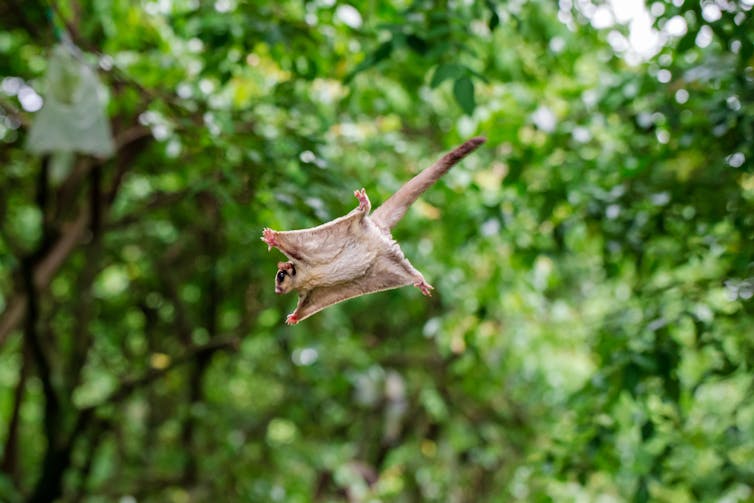
Next time you’re road-tripping along the east coast, keep an eye out for a little-known Aussie invention piercing the skyline: glide poles. For Australia’s gliding possums, or gliders, they’re the next best thing since tall trees.
These tall timber structures, with timber cross arms near the top, give gliders a way to cross big roads. They can shimmy up a pole on one side of the road and then leap to another (and another) to get to the other side.
After witnessing the earliest experiments with glide poles decades ago, it’s heartening to see the design refined and replicated up and down the east coast.
The world’s largest gliding marsupial, the greater glider, was listed nationally as endangered a year ago this month. That’s because their populations had declined by 80% in just 20 years. As land-clearing and bushfires continue to destroy old growth forests with tall trees and hollows, gliders need all the help they can get.
Biomimicry With Wooden Poles
From the match-box sized feathertail glider to the small cat-sized greater glider, Australia’s 11 species each have a gliding membrane, or patagium. This a thin area of skin stretching from the ankles to the wrists or hands.
When a glider leaps from a tree (or glide pole), it extends its front and hind limbs, stretching out its patagium, which allows it to glide.
In 1993 Ross Goldingay, one of Australia’s leading glider ecologists, came up with the idea of using tall wooden power poles (without wires) as road-crossing stepping-stones for gliders. The glide poles would act as substitutes for tall trees, so it was a very simple and elegant form of what’s known as “biomimicry”.
Ross directed the placement of glide poles on either side of a powerline easement at Bomaderry Creek near Nowra in southern New South Wales. The trial aimed to ensure yellow-bellied gliders could still cross the easement if it was developed into a local road.
Unfortunately, the Bomaderry Creek glide poles were never monitored. More than ten years later, a series of successful trials at Mackay and Compton Road in Brisbane demonstrated gliders would readily use glide poles. I recall showing Ross early images of squirrel gliders shimmying up the smooth, hardwood poles on the Compton Road land bridge soon after we installed cameras. We were blown away!
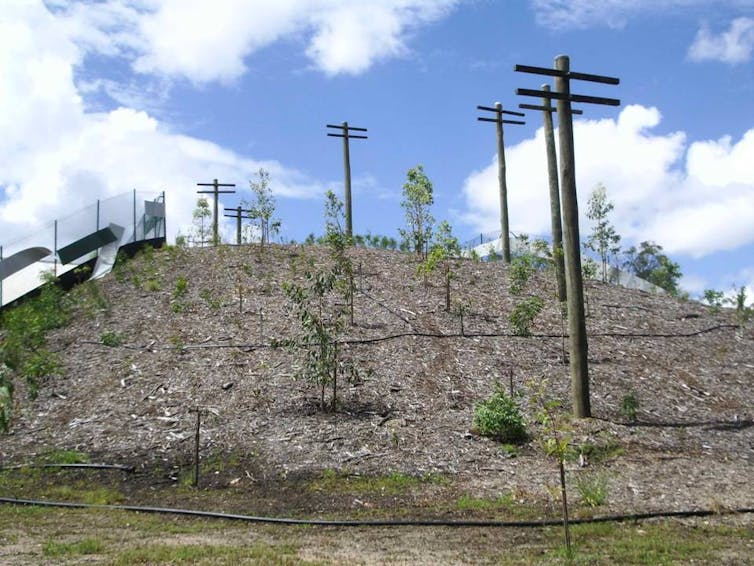
The poles needed to be tall enough to enable a comfortable glide crossing of the intervening gap. This is where trigonometry and the laws of physics come in, to get the calculations right for the species being targeted.
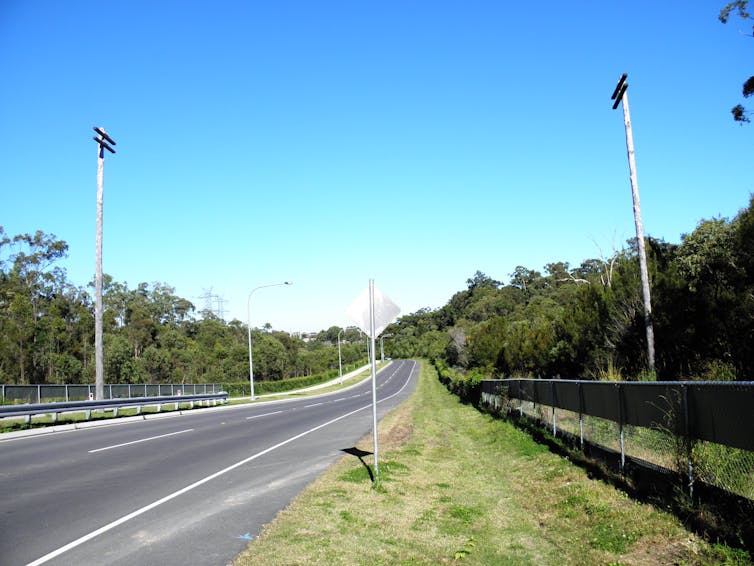
Since then, glide poles have become a fixture of upgrades along the Hume Highway in Victoria, the Pacific Highway in NSW and the Bruce Highway in Queensland.
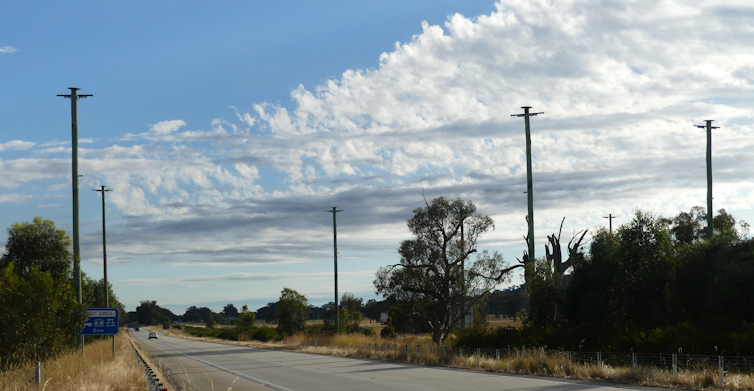
Do The Poles Reconnect Glider Populations?
We are gradually gathering more evidence of glide pole use. Squirrel gliders, sugar gliders and feathertail gliders have been recorded using glide poles to cross roads at several locations.
Mahogany gliders, yellow-bellied gliders and southern greater gliders have also been recorded using glide poles.
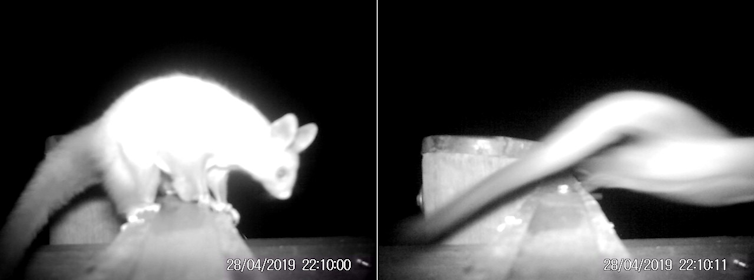
Most notably, retrofitting a glider crossing into a road that previously presented a barrier to squirrel glider movement restored gene flow between populations on either side within five years.
Celebrating Some Of Australia’s Most Iconic Wildlife Crossings
Glide poles are one of many structures designed to provide safe road crossing opportunities for wildlife.
Pipes and box culverts can provide safe passage under the road, while land bridges and rope canopy bridges offer an alternative pathway over the road.
When combined with fencing, these structures reduce roadkill, provide access to resources on both sides of the road, and enable gene flow.
My new book combines an exploration of the how, when, where and why wildlife crossings evolved in eastern Australia with a travel guide to 57 of its most iconic sites.
The Road Ahead
We need to conserve, protect and restore our natural landscapes. This is especially the case in a rapidly changing climate. Our unique native species need to be able to move and adapt to the changing environment.
Carving up the landscape for road networks has been particularly bad for wildlife, with many populations becoming increasingly fragmented and increasingly isolated. But roads no longer need to act as roadblocks for the movement of many native species.
Engineers and ecologists have come together over recent years to find new ways to support the safe passage of animals from one side of the road to another. Their efforts deserve to be celebrated. Especially glide poles. They may not be as famous as the good old Hills Hoist clothesline, but they certainly deserve a gong as a great Australian invention. Certainly worth a nod when you pass by on your next great Aussie road trip.![]()
Brendan Taylor, Adjunct Research Fellow in the Faculty of Science & Engineering, Southern Cross University
This article is republished from The Conversation under a Creative Commons license. Read the original article.
Keen to get off gas in your home, but struggling to make the switch? Research shows you’re not alone
Sangeetha Chandrashekeran, The University of Melbourne and Julia de Bruyn, The University of MelbourneMore than five million households in Australia are connected to the gas network. Tackling climate change requires homes and businesses to move away from gas, and instead embrace electric appliances as the power grid shifts to renewable energy.
People can save considerable money by switching away from gas – even more so if they have solar panels installed. But still, millions of Australians haven’t yet made the move. Why?
Our new research, released today, seeks to shed light on this question. We focused on lower-income households in Victoria and found while most participants supported the transition from gas, few owned electric appliances for heating, cooking and hot water.
There were two main barriers: people couldn’t afford the upfront cost of buying new electric appliances, or were renting and so had little or no say over what appliances were installed. Overcoming these and other challenges is crucial to ensure no-one gets left behind in Australia’s energy transition.

Making It Fair For All
Victoria has committed to net-zero greenhouse gas emissions by 2045. To help achieve this, the state government is developing a plan for the state to electrify. Other states and territories are also moving in this direction.
But to date, not enough research and policy attention has been paid to making this transition fair and equitable for everyone.
Low-income households spend a larger proportion of their income on energy bills compared to higher-income households. This is despite those households using less energy.
The affordability of gas will become worse as more households electrify. That’s because part of a gas bill includes the fixed cost of running gas infrastructure – so as progressively fewer people use gas, the remaining users pay more.
And those who don’t make the move away from gas miss out on the long-term economic benefits. Analysis last year suggested a typical Victorian household could reduce its annual energy costs by A$1,020 by replacing gas heating, cooking and hot water systems with electric ones. The figure rises to $1,250 for those with solar power. These savings will be amplified if the price of gas continues to rise relative to electricity.
That’s why it’s important to help as many lower-income people as possible to make the switch to electric appliances. Our research set out to understand what might prevent or enable that shift.
We studied households in Victoria: the state with the highest prevalence of residential gas use in Australia and where plans for an economy-wide transition away from fossil gas are underway.

What We Found
We conducted an online survey, which received 220 eligible responses. We also undertook focus groups with 34 people. All participants were from lower-income households.
Most participants – 88% – used gas in the home, reflecting its prevalence in Victoria.
More than two-thirds indicated some level of support for a transition away from household gas to cleaner energy sources. Support was greater with higher levels of education. There was no significant difference based on financial stress, housing tenure, location or age.
But this support had not translated into action. Just one in ten surveyed households had replaced gas appliances with electric ones within the past five years. Among those who had switched or planned to switch, the main reasons were lower running costs and environmental benefits.
Respondents considered electric appliances to be safer and better for the environment. Gas appliances were considered better for heating and cooking. Many respondents were unsure about the relative benefits of electric versus gas appliances when it came to cost, reliability, safety and the environment.

Preferences were strongly linked to what people were currently using. Most people preferred gas cooktops over electric ones, because of the perceived speed, ease and flexibility. However, few participants had used electric induction stoves, which can also offer these benefits.
People who spoke a language other than English were significantly more likely to prefer gas for heating and hot water.
For those who had not replaced gas appliances, being a renter was one of the biggest barriers to electrification. Some renters said they lived in poor housing, but were unwilling to request improvements in case the landlord increased the rent or evicted them.
Respondents also said they would struggle to afford the upfront costs of electrification, such as buying new appliances and, in some cases, wiring upgrades and other building modifications.
Many participants were aware of and had received state government assistance to help with energy bills. But far fewer people knew about or had used programs that could support them to adopt electric appliances.
Embracing The Switch
An overall strategy is needed to help all households make the shift to electric appliances and technology. Our research suggests this must include specific measures for lower-income households, such as:
targeted and well-promoted electrification programs
more evidence-based information on the benefits of electric appliances
incentives for landlords and standards requiring efficient electric appliances in rental homes
means-tested rebates for electric appliances such as reverse cycle air-conditioners and heat pump hot water, and where appropriate, no- or low-interest loans.
These measures should, where possible, be linked to measures to improve household energy efficiency. And lower-income households, as well as others facing barriers to getting off gas, must be included when planning the transition.
Researchers David Bryant and Damian Sullivan from the Brotherhood of St Laurence contributed to this article and co-authored the research upon which it is based.![]()
Sangeetha Chandrashekeran, Senior Research Fellow, Australian Research Council Centre of Excellence for Children and Families over the Life Course, The University of Melbourne and Julia de Bruyn, Associate Investigator, ARC Centre of Excellence for Children and Families over the Life Course, The University of Melbourne
This article is republished from The Conversation under a Creative Commons license. Read the original article.
Could the law of the sea be used to protect small island states from climate change?
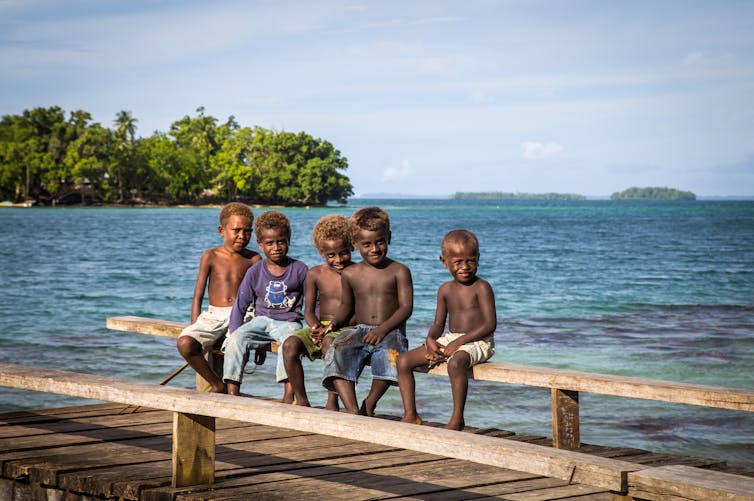
Climate change will wreak havoc on small island developing states in the Pacific and elsewhere. Some will be swamped by rising seas. These communities also face more extreme weather, increasingly acidic oceans, coral bleaching and harm to fisheries. Food supplies, human health and livelihoods are at risk. And it’s clear other countries burning fossil fuels are largely to blame.
Yet island states are resourceful. They are not only adapting to change but also seeking legal advice. The international community has certain legal obligations under the law of the sea. These are rules and customs that divvy up the oceans into maritime zones, while recognising certain freedoms and duties.
So island states are asking whether obligations to address climate change might be contained in the United Nations Convention on the Law of the Sea. This is particularly important as marine issues have not received the attention they deserve within international climate negotiations.
If states do have specific obligations to stop greenhouse gas pollution damaging the marine environment, then legal consequences for breaching these obligations could follow. It is possible small island states could one day be compensated for the damage done.
Why Seek An Advisory Opinion?
The International Tribunal for the Law of the Sea is an independent judicial body established by the UN Convention on the Law of the Sea. The tribunal has jurisdiction over any dispute concerning the interpretation or application of the convention and certain legal questions requested of it. The answers to these questions are known as advisory opinions.
Advisory opinions are not legally binding, they are authoritative statements on legal matters. They provide guidance to states and international organisations about the implementation of international law.
The tribunal has delivered two advisory opinions in the past: on deep seabed mining and illegal, unreported and unregulated fishing activities. These proceedings attracted submissions from states, international organisations and non-governmental organisations such as the World Wide Fund for Nature (WWF).
Late last year, the newly established Commission of Small Island States on Climate Change and International Law submitted a request for advice to the tribunal. It concerns the obligations of states to address climate change, including impacts on the marine environment.
The tribunal received more than 50 written submissions from states and organisations offering opinions on how it should respond. These submissions, from Australia and New Zealand among others, were recently made public.
While the convention was not designed as a mechanism for regulating climate change, its mandate is broad enough to consider the connection between climate and the oceans. To establish this, the 40-year-old framework agreement must be interpreted in light of changing global circumstances and changing laws, including obligations to strengthen resilience in the high seas. One avenue to achieve this is through an advisory opinion from the tribunal.
The Question Before The Tribunal
The question to the tribunal asks, what are the specific obligations of states:
(a) to prevent, reduce and control pollution of the marine environment in relation to the deleterious effects that result or are likely to result from climate change, including through ocean warming and sea level rise, and ocean acidification, which are caused by anthropogenic greenhouse gas emissions into the atmosphere?
(b) to protect and preserve the marine environment in relation to climate change impacts, including ocean warming and sea level rise, and ocean acidification?
This question invokes specific language from the convention. That provides clues as to which sections of the treaty the tribunal will refer to in its opinion.
The question refers explicitly to the part of the convention entitled “Protection and Preservation of the Marine Environment”. This part sets out the general obligation of states to protect and preserve the marine environment, as well as measures to “prevent, reduce and control pollution”. It also tells states they must not transfer damage or hazards, or transform one type of pollution into another.
Pollution of the marine environment is defined in the convention as:
the introduction by man, directly or indirectly, of substances or energy into the marine environment, including estuaries, which results or is likely to result in such deleterious effects as harm to living resources and marine life, hazards to human health, hindrance to marine activities, including fishing and other legitimate uses of the sea, impairment of quality for use of sea water and reduction of amenities.
What If States Do Not Meet Their Obligations?
The tribunal will need to answer a key question for the law of the sea: can the convention be understood as referring to the drivers and effects of climate change? And if so, in what ways does the convention require that they be addressed by states?
What the commission’s question does not ask is, what happens when states do not meet their obligations? The answer is particularly important to small island states, who are dissatisfied with ongoing negotiations on addressing loss and damage associated with climate change impacts.
Obligations relating to climate change are contained within other treaties and rules, including the UN Framework Convention on Climate Change and the Paris Agreement. Small island states have sought advice from different courts to clarify these obligations.
The International Court of Justice will consider a wider set of legal issues on climate obligations next year.
The fact that the court has authorised the commission to participate in this separate advisory opinion request signals the UN’s main judicial body will take account of the tribunal’s opinion. It’s also worth noting the tribunal is likely to deliver its views on the law of the sea first, setting the stage for a broader interpretation of international law when it comes to taking responsibility for polluting the atmosphere.
Sustained pressure from small island states is advancing our understanding of the obligations of states to address climate change.![]()
Ellycia Harrould-Kolieb, Lecturer and Research Fellow in Ocean Governance, University of Melbourne and Postdoctoral Researcher, UEF Law School, University of Eastern Finland, The University of Melbourne and Margaret Young, Professor, The University of Melbourne
This article is republished from The Conversation under a Creative Commons license. Read the original article.
The feral flying under the radar: why we need to rethink European honeybees
Amy-Marie Gilpin, Western Sydney University; James B. Dorey, Flinders University; Katja Hogendoorn, University of Adelaide, and Kit Prendergast, Curtin UniversityAustralia’s national parks, botanic gardens, wild places and green spaces are swarming with an invasive pest that is largely flying under the radar. This is yet another form of livestock, escaped from captivity and left to roam free.
Contrary to popular opinion, in Australia, feral colonies of the invasive European honeybee (Apis mellifera) are not “wild”, threatened with extinction or “good” for the Australian environment. The truth is feral honeybees compete with native animals for food and habitat, disrupt native pollination systems and pose a serious biosecurity threat to our honey and pollination industries.
As ecologists working across Australia, we are acutely aware of the damage being done by invasive species. There is rarely a simple, single solution. But we need to move feral bees out of the “too hard” basket.
The arrival and spread of the parasitic Varroa mite in New South Wales threatens to decimate honeybee colonies. So now is the time to rethink our relationship with the beloved European honeybee and target the ferals.
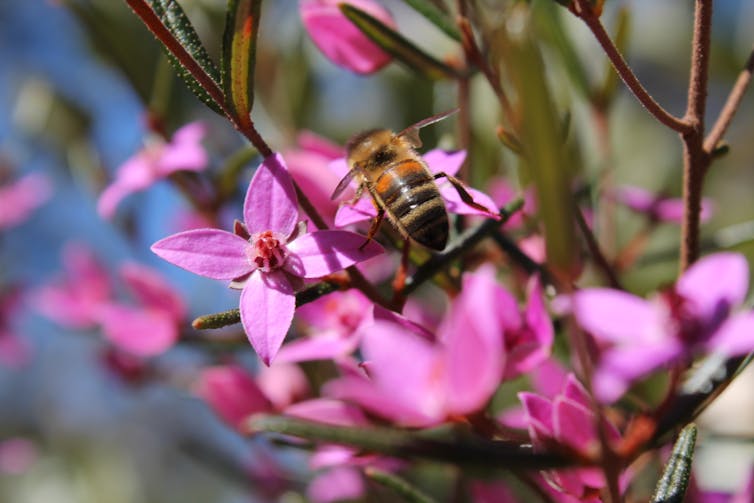
What Makes A Hive Feral?
European honeybees turn feral when a managed hive produces a “swarm”. This is a mass of bees that leaves the hive seeking a new nest. The swarm ultimately settles, either in a natural hollow or artificial structure such as a nesting box.
With up to 150 hives per square kilometre, Australia has among the highest feral honey bee densities in the world. In NSW, feral honeybees are listed as a “key threatening process”, but they lack such recognition elsewhere.

Feral honeybees have successfully invaded most land-based ecosystems across Australia, including woodlands, rainforests, mangrove-salt marsh, alpine and arid ecosystems.
They can efficiently harvest large volumes of nectar and pollen from native plants that would otherwise provide food for native animals, including birds, mammals and flower-visiting insects such as native bees. Their foraging activities alter seed production and reduce the genetic diversity of native plants while also pollinating weeds.
Unfortunately, feral honeybees are now the most common visitors to many native flowering plants.
Are Feral Bees Useful In Agriculture?
Feral honeybees can pollinate crops. But they compete with managed hives for nectar and pollen. They can also be an reservoir of honeybee pests and diseases such as the Varroa mite, which ultimately threaten crop production. That’s because many farms rely on honeybees from commercial hives to pollinate their crops.
So reducing feral honeybee density would benefit both honey production and the crop pollination industry, which is worth A$14 billion annually.
Improved management of feral honeybees would not only help to limit the biosecurity threat, but increase the availability of pollen and nectar for managed hives. It would also increase demand for managed honeybee pollination services for pollinator dependent crops.
What Are Our Current Options?
Tackling this issue will not be straightforward, due to the sheer extent of feral colony infestation and limited tools at the disposal of land managers.
If the current parasitic Varroa mite infestation in NSW spins out of control, it may reduce the number of feral hives, with benefits for the environment. Fewer feral hives would be good for the honey industry too.
Targeted strategies to remove feral colonies on a small scale do exist and are being applied in the Varroa mite emergency response. This includes the deployment of poison (fipronil) bait stations in areas exposed to the mite.
While this method seems to be effective, the extreme toxicity of fipronil to honeybees limits its use to areas that do not contain managed hives. In addition, the possible effects on non-target, native animals that feed on the bait, or poisoned hive remains, is still unstudied and requires careful investigation.
Where feral hives can be accessed, they can be physically removed. But in many ecosystems feral colonies are high up in trees, in difficult to access terrain. That, and their overwhelming numbers, makes removal impractical.
Another problem with hive removal is rapid recolonisation by uncontrolled swarming from managed hives and feral hives at the edges of the extermination area.
Taken together, there are currently no realistic options for the targeted large-scale removal of feral colonies across Australia’s vast natural ecosystems.
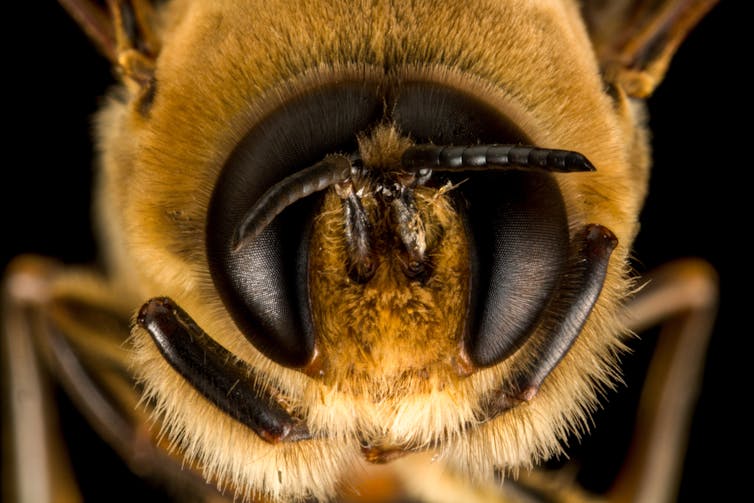
Where To Now?
For too long, feral honeybees have had free reign over Australia’s natural environment. Given the substantial and known threats they pose to natural systems and industry, the time has come to develop effective and practical control measures.
Not only do we need to improve current strategies, we desperately need to develop new ones.
One promising example is the use of traps to catch bee swarms, and such work is underway in Victoria’s Macedon Ranges. However, this might be prohibitively expensive at larger scales.
Existing strategies for other animals may be a good starting place. For example, the practice of using pheromones to capture cane toad tadpoles might be applied to drones (male bees) and swarms. Once strategies are developed we can model a combination of approaches to uncover the best one for each case.
Developing sustainable control measures should be a priority right now and should result in a win-win for industry, biosecurity and native ecosystems.
If there is something to learn from the latest Varroa incursion, it is that we cannot ignore the risks feral honeybees pose any longer. We don’t know how to control them in Australia yet, but it is for lack of trying.
We would like to acknowledge the substantial contribution made by environmental scientist and beekeeper Cormac Farrell to the development of this article.![]()
Amy-Marie Gilpin, Research Fellow, Ecology, Western Sydney University; James B. Dorey, Adjunct Lecturer, Flinders University; Katja Hogendoorn, Research fellow, University of Adelaide, and Kit Prendergast, Native bee ecologist, Curtin University
This article is republished from The Conversation under a Creative Commons license. Read the original article.
Tourists flock to the Mediterranean as if the climate crisis isn’t happening. This year’s heat and fire will force change
Susanne Becken, Griffith University and Johanna Loehr, Griffith UniversityThousands of people on the beach. Children reportedly falling off evacuation boats. Panic. People fleeing with the clothes on their backs. It felt like “the end of the world”, according to one tourist.
The fires sweeping through the Greek islands of Rhodes and Corfu are showing us favourite holiday destinations are no longer safe as climate change intensifies.
For decades, tourists have flocked to the Mediterranean for the northern summer. Australians, Scandinavians, Brits, Russians all arrive seeking warmer weather. After COVID, many of us have been keen to travel once again.
But this year, the intense heatwaves have claimed hundreds of lives in Spain alone. Major tourist drawcards such as the Acropolis in Athens have been closed. Climate scientists are “stunned by the ferocity” of the heat.
This year is likely to force a rethink for tourists and for tourism operators. Expect to see more trips taken during shoulder seasons, avoiding the increasingly intense July to August summer. And expect temperate countries to become more popular tourist destinations. Warm-weather tourist destinations will have to radically change.
What Will Climate Change Do To Mass Tourism?
Weather is a major factor in tourism. In Europe and North America, people tend to go from northern countries to southern regions. Chinese tourists, like Australians, often head to Southeast Asian beaches.
In Europe, the north-south flow is almost hardwired. When Australians go overseas, they often choose Mediterranean summers. Over the last decade, hotter summers haven’t been a dealbreaker.
But this year is likely to drive change. You can already see that in the growing popularity of shoulder seasons (June or September) in the traditional Northern Hemisphere summer destinations.
Many of us are shifting how we think about hot weather holidays from something we seek to something we fear. This comes on top of consumer shifts such as those related to sustainability and flight shame.
What about disaster tourism? While thrillseekers may be flocking to Death Valley to experience temperatures over 50℃, it’s hard to imagine this type of tourism going mainstream.
What we’re more likely to see is more people seeking “last-chance” experiences, with tourists flocking to highly vulnerable sites such as the Great Barrier Reef. Of course, this type of tourism isn’t sustainable long-term.
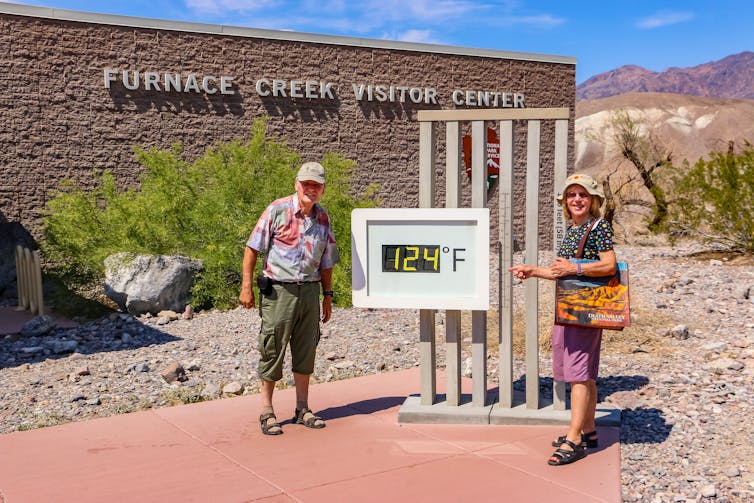
What Does This Mean For Countries Reliant On Tourism?
The crisis in Rhodes shows us the perils of the just-in-time model of tourism, where you bring in tourists and everything they need –food, water, wine – as they need it.
The system is geared to efficiency. But that means there’s little space for contingencies. Rhodes wasn’t able to easily evacuate 19,000 tourists. This approach will have to change to a just-in-case approach, as in other supply chains.
For emergency services, tourists pose a particular challenge. Locals have a better understanding than tourists of risks and escape routes. Plus tourists don’t speak the language. That makes them much harder to help compared to locals.
Climate change poses immense challenges in other ways, too. Pacific atoll nations like Kiribati or Tuvalu would love more tourists to visit. The problem there is water. Sourcing enough water for locals is getting harder. And tourists use a lot of water – drinking it, showering in it, swimming in it. Careful planning will be required to ensure local carrying capacities are not exceeded by tourism.
So does this spell the end of mass tourism? Not entirely. But it will certainly accelerate the trend in countries like Spain away from mass tourism, or “overtourism”. In super-popular tourist destinations like Spain’s Balearic Islands, there’s been an increasing pushback from locals against overtourism in favour of specialised tourism with smaller numbers spread out over the year.
Is this year a wake-up call? Yes. The intensifying climate crisis means many of us are now more focused on what we can do to stave off the worst of it by, say, avoiding flights. The pressure for change is growing too. Delta Airlines is being sued over its announcement to go carbon neutral by using offsets, for instance.
Mountains Not Beaches: Future Tourism May Look A Lot Different
You can already see efforts to adapt to the changes in many countries. In Italy, for instance, domestic mountain tourism is growing, enticing people from hot and humid Milan and Rome up where the air is cooler – even if the snow is disappearing.
China, which doesn’t do things by halves, is investing in mountain resorts. The goal here is to offer cooler alternatives like northern China’s Jilin province to beach holidays for sweltering residents of megacities such as Beijing and Shanghai.
Some mountainous countries are unlikely to seize the opportunity because they don’t want to draw more tourists. Norway is considering a tourist tax.
Forward-thinking countries will be better prepared. But there are limits to preparation and adaptation. Mediterranean summer holidays will be less and less appealing, as the region is a heating hotspot, warming 20% faster than the world average. Italy and Spain are still in the grip of a record-breaking drought, threatening food and water supplies. The future of tourism is going to be very different. ![]()
Susanne Becken, Professor of Sustainable Tourism, Griffith Institute for Tourism, Griffith University and Johanna Loehr, , Griffith University
This article is republished from The Conversation under a Creative Commons license. Read the original article.
Pittwater Reserves: Histories + Notes + Pictorial Walks
A History Of The Campaign For Preservation Of The Warriewood Escarpment by David Palmer OAM and Angus Gordon OAM
A Stroll Through Warriewood Wetlands by Joe Mills February 2023
A Walk Around The Cromer Side Of Narrabeen Lake by Joe Mills
America Bay Track Walk - photos by Joe Mills
An Aquatic June: North Narrabeen - Turimetta - Collaroy photos by Joe Mills
Angophora Reserve Angophora Reserve Flowers Grand Old Tree Of Angophora Reserve Falls Back To The Earth - History page
Annie Wyatt Reserve - A Pictorial
Avalon's Village Green: Avalon Park Becomes Dunbar Park - Some History + Toongari Reserve and Catalpa Reserve
Bairne Walking Track Ku-Ring-Gai Chase NP by Kevin Murray
Bangalley Headland Bangalley Mid Winter
Banksias of Pittwater
Barrenjoey Boathouse In Governor Phillip Park Part Of Our Community For 75 Years: Photos From The Collection Of Russell Walton, Son Of Victor Walton
Barrenjoey Headland: Spring flowers
Barrenjoey Headland after fire
Bayview Baths
Bayview Wetlands
Beeby Park
Bilgola Beach
Botham Beach by Barbara Davies
Bungan Beach Bush Care
Careel Bay Saltmarsh plants
Careel Bay Birds
Careel Bay Clean Up day
Careel Bay Playing Fields History and Current
Careel Creek
Careel Creek - If you rebuild it they will come
Centre trail in Ku-ring-gai Chase National Park
Chiltern Track- Ingleside by Marita Macrae
Clareville Beach
Clareville/Long Beach Reserve + some History
Coastal Stability Series: Cabbage Tree Bay To Barrenjoey To Observation Point by John Illingsworth, Pittwater Pathways, and Dr. Peter Mitchell OAM
Cowan Track by Kevin Murray
Curl Curl To Freshwater Walk: October 2021 by Kevin Murray and Joe Mills
Currawong and Palm Beach Views - Winter 2018
Currawong-Mackerel-The Basin A Stroll In Early November 2021 - photos by Selena Griffith
Currawong State Park Currawong Beach + Currawong Creek
Deep Creek To Warriewood Walk photos by Joe Mills
Drone Gives A New View On Coastal Stability; Bungan: Bungan Headland To Newport Beach + Bilgola: North Newport Beach To Avalon + Bangalley: Avalon Headland To Palm Beach
Duck Holes: McCarrs Creek by Joe Mills
Dunbar Park - Some History + Toongari Reserve and Catalpa Reserve
Dundundra Falls Reserve: August 2020 photos by Selena Griffith - Listed in 1935
Elsie Track, Scotland Island
Elvina Track in Late Winter 2019 by Penny Gleen
Elvina Bay Walking Track: Spring 2020 photos by Joe Mills
Elvina Bay-Lovett Bay Loop Spring 2020 by Kevin Murray and Joe Mills
Fern Creek - Ingleside Escarpment To Warriewood Walk + Some History photos by Joe Mills
Iluka Park, Woorak Park, Pittwater Park, Sand Point Reserve, Snapperman Beach Reserve - Palm Beach: Some History
Ingleside
Ingleside Wildflowers August 2013
Irrawong - Ingleside Escarpment Trail Walk Spring 2020 photos by Joe Mills
Irrawong - Mullet Creek Restoration
Katandra Bushland Sanctuary - Ingleside
Lucinda Park, Palm Beach: Some History + 2022 Pictures
McCarrs Creek
McCarr's Creek to Church Point to Bayview Waterfront Path
McKay Reserve
Mona Vale Beach - A Stroll Along, Spring 2021 by Kevin Murray
Mona Vale Headland, Basin and Beach Restoration
Mona Vale Woolworths Front Entrance Gets Garden Upgrade: A Few Notes On The Site's History
Mount Murray Anderson Walking Track by Kevin Murray and Joe Mills
Mullet Creek
Narrabeen Creek
Narrabeen Lagoon Catchment: Past Notes Present Photos by Margaret Woods
Narrabeen Lagoon State Park
Narrabeen Lagoon State Park Expansion
Narrabeen Rockshelf Aquatic Reserve
Nerang Track, Terrey Hills by Bea Pierce
Newport Bushlink - the Crown of the Hill Linked Reserves
Newport Community Garden - Woolcott Reserve
Newport to Bilgola Bushlink 'From The Crown To The Sea' Paths: Founded In 1956 - A Tip and Quarry Becomes Green Space For People and Wildlife
Pittwater Reserves: The Green Ways; Bungan Beach and Bungan Head Reserves: A Headland Garden
Pittwater Reserves, The Green Ways: Clareville Wharf and Taylor's Point Jetty
Pittwater Reserves: The Green Ways; Hordern, Wilshire Parks, McKay Reserve: From Beach to Estuary
Pittwater Reserves - The Green Ways: Mona Vale's Village Greens a Map of the Historic Crown Lands Ethos Realised in The Village, Kitchener and Beeby Parks
Pittwater Reserves: The Green Ways Bilgola Beach - The Cabbage Tree Gardens and Camping Grounds - Includes Bilgola - The Story Of A Politician, A Pilot and An Epicure by Tony Dawson and Anne Spencer
Pittwater spring: waterbirds return to Wetlands
Pittwater's Lone Rangers - 120 Years of Ku-Ring-Gai Chase and the Men of Flowers Inspired by Eccleston Du Faur
Pittwater's Parallel Estuary - The Cowan 'Creek
Resolute Track at West Head by Kevin Murray
Resolute Track Stroll by Joe Mills
Riddle Reserve, Bayview
Salvation Loop Trail, Ku-Ring-Gai Chase National Park- Spring 2020 - by Selena Griffith
Seagull Pair At Turimetta Beach: Spring Is In The Air!
Stapleton Reserve
Stapleton Park Reserve In Spring 2020: An Urban Ark Of Plants Found Nowhere Else
Stony Range Regional Botanical Garden: Some History On How A Reserve Became An Australian Plant Park
The Chiltern Track
The Resolute Beach Loop Track At West Head In Ku-Ring-Gai Chase National Park by Kevin Murray
Topham Track Ku-Ring-Gai Chase NP, August 2022 by Joe Mills and Kevin Murray
Towlers Bay Walking Track by Joe Mills
Trafalgar Square, Newport: A 'Commons' Park Dedicated By Private Landholders - The Green Heart Of This Community
Tranquil Turimetta Beach, April 2022 by Joe Mills
Turimetta Beach Reserve by Joe Mills, Bea Pierce and Lesley
Turimetta Beach Reserve: Old & New Images (by Kevin Murray) + Some History
Turimetta Headland
Warriewood Wetlands - Creeks Deteriorating: How To Report Construction Site Breaches, Weed Infestations + The Long Campaign To Save The Warriewood Wetlands & Ingleside Escarpment March 2023
Warriewood Wetlands and Irrawong Reserve
Whale Beach Ocean Reserve: 'The Strand' - Some History On Another Great Protected Pittwater Reserve
Wilshire Park Palm Beach: Some History + Photos From May 2022
Winji Jimmi - Water Maze

Church Point Seagulls
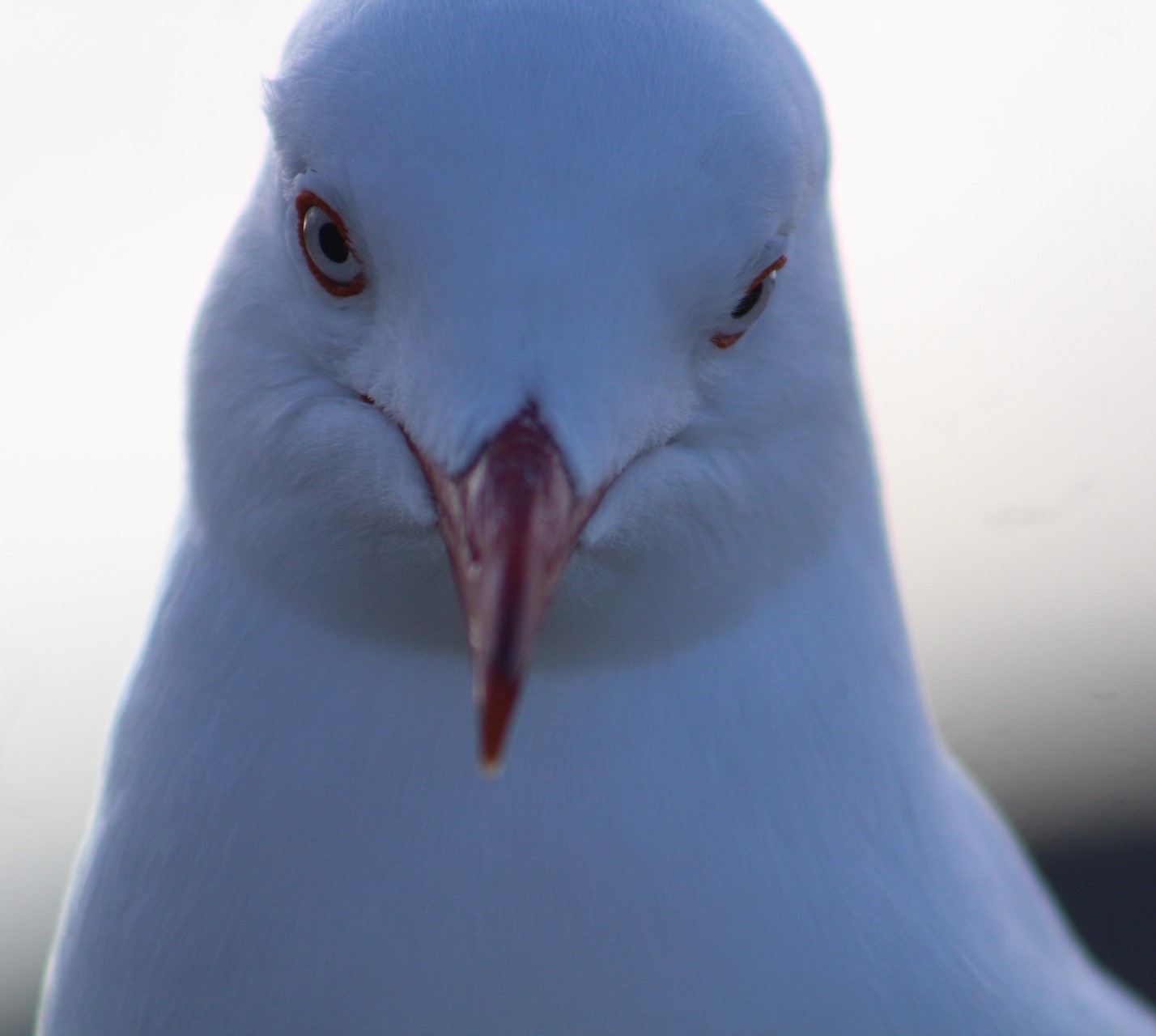
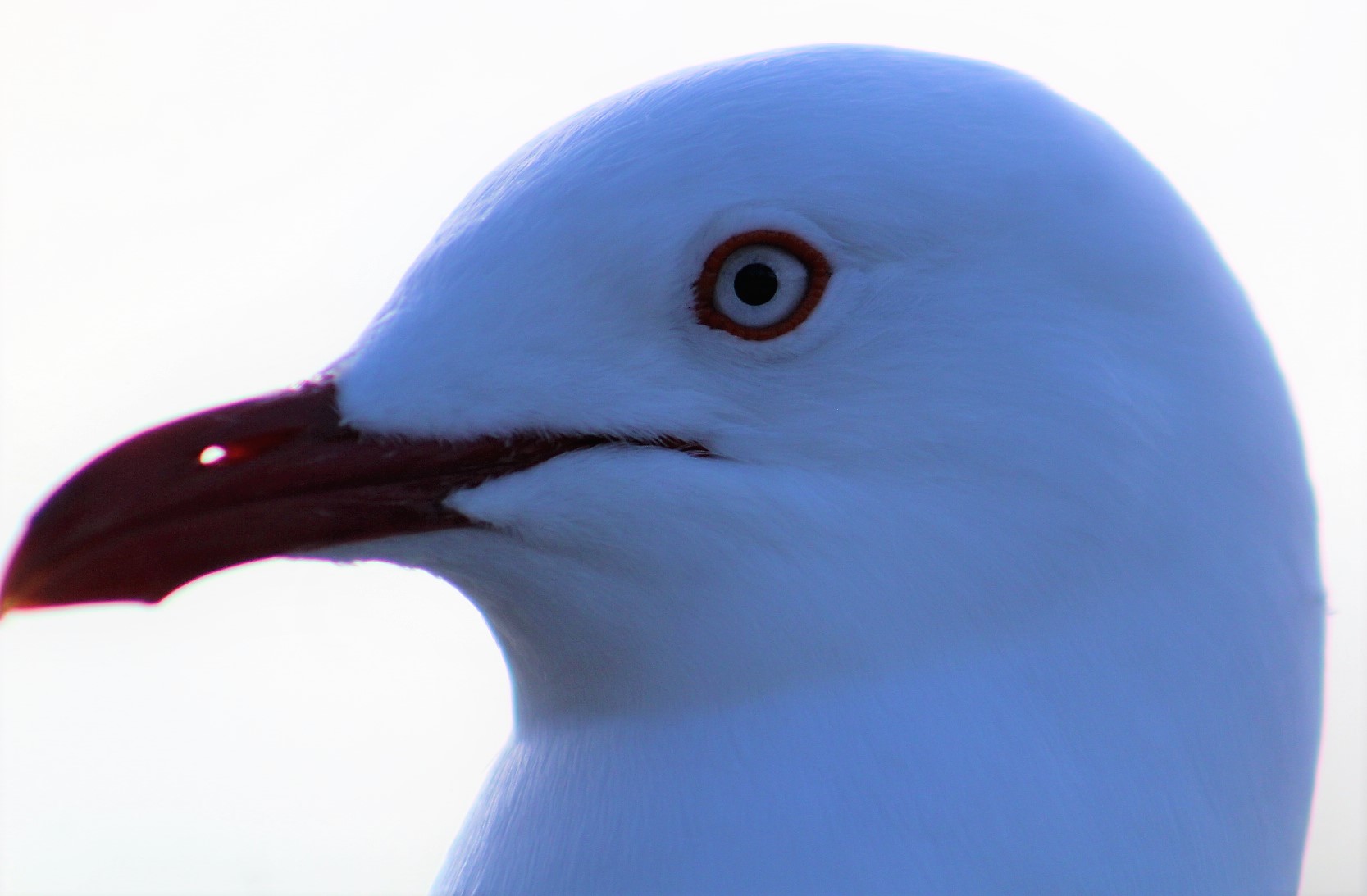
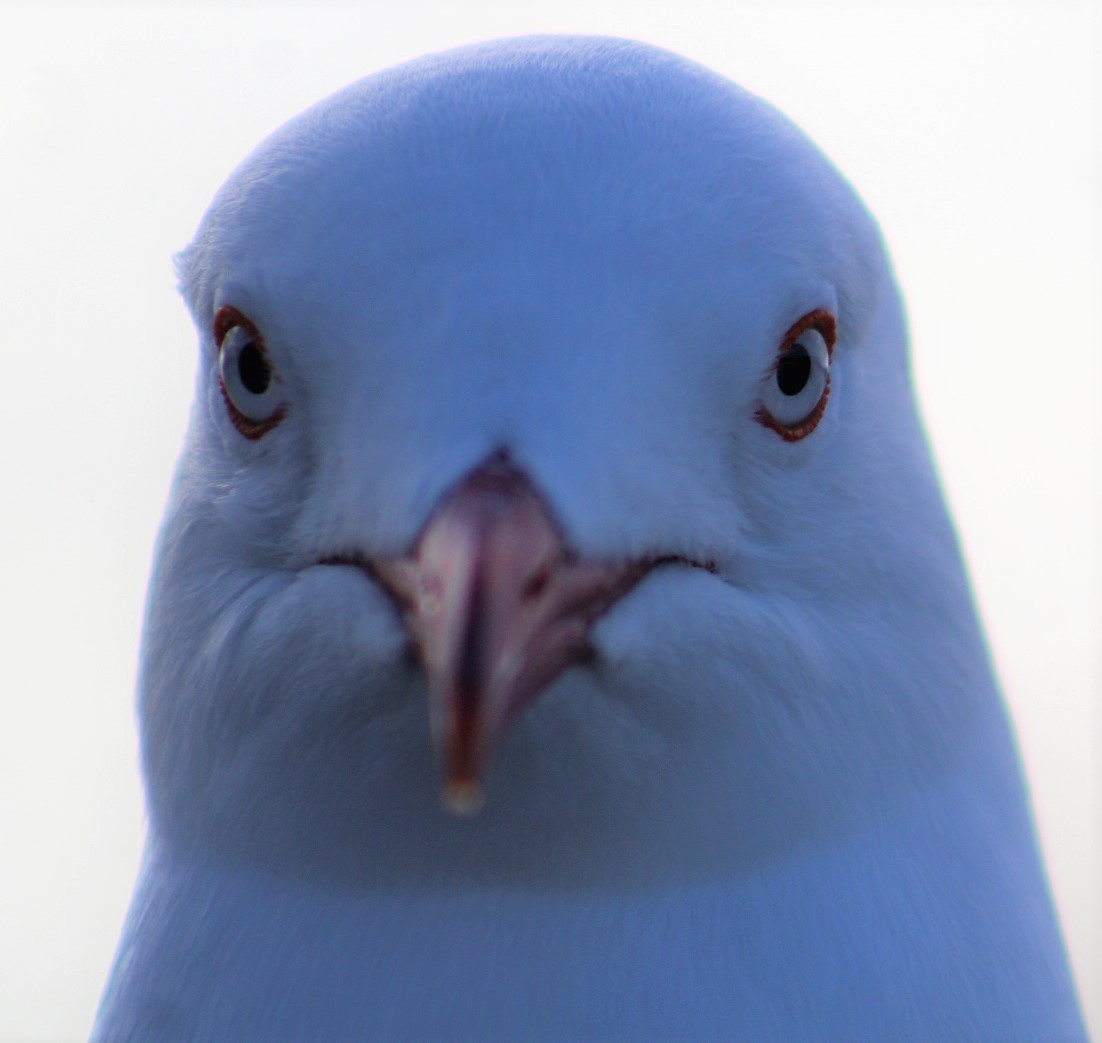
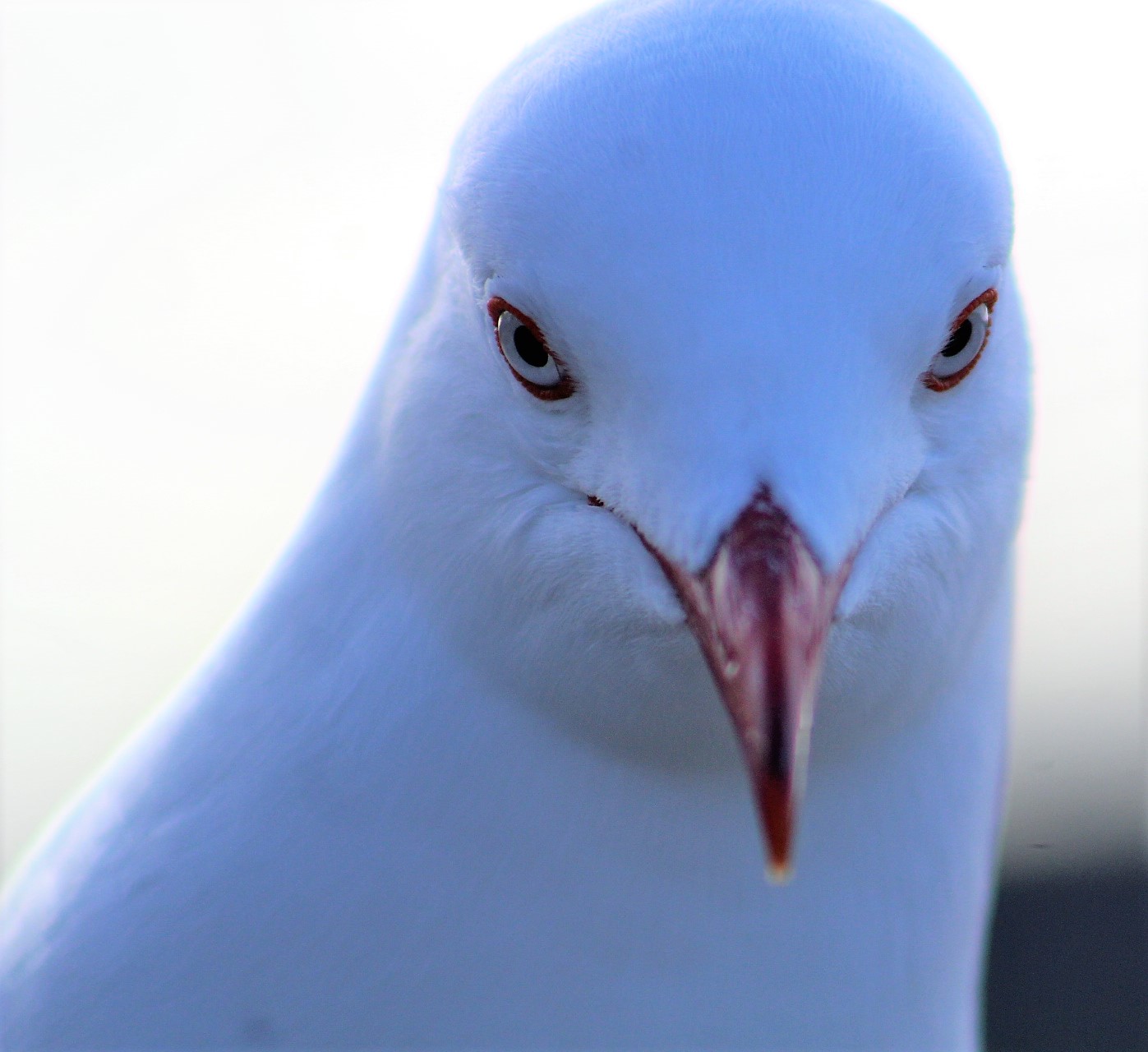
Unfinished Business: Australian Diamonds Netball World Cup 2023
Parli-Flicks Short Film Award 2023
Lights, camera, action!
NSW high school students, it’s time to shoot your shot for the 2023 Parli-Flicks Short Film Award.
The brief? Create a one-minute short film that takes a stand on whether the voting age should be lowered or kept at 18 in NSW.
Animation, music, comedy, drama, what’s your angle? This is your chance to be creative!
The winner will take home a $250 cash prize, with the finalists invited to an exclusive awards night at the Parliament of NSW.
Entries are open to Year 7 – 12 NSW high school students and close Friday August 11th 2023.
Want your school to participate? Visit our Education website for entry details and more information to share with your school administration.

Your First Speech To The Australian Parliament
Your first speech is a great way to speak about issues you are passionate about. You could enter as an individual or get your whole school involved!
Australian students enrolled in years 10 to 12 are invited to enter the 'My First Speech' competition.
You can enter as a school or as an individual.
Imagine yourself as a newly elected Member of the House of Representatives. Your task is to write a 90 second speech about issues you are passionate about then record yourself presenting the speech on video.
The video should be in MPG, MPEG, M4V, MPEG 4, AVI, WMV or MOV format with a resolution of 640 x 480 pixels or above and no longer than 90 seconds in length. Opening titles or end credits are not required.
A winner from each year, 10, 11 and 12, will be invited to Canberra to deliver their speeches live and undertake a program of meetings at Parliament House.
To enter the competition, submit your video via email, along with a written transcript of your speech and completed competition forms. The scanned forms can be pdf or jpg format.
If your video is too large to be emailed (over 30mb) send it via Dropbox, Google Drive or even a USB along with a transcript of your speech and completed competition forms.
For mailed entries send to:
My First Speech competition
House of Representatives
PO Box 6021
Parliament House
Canberra ACT 2601
Entries must be received by Friday, 11 August 2023
Competition forms and more here: https://www.aph.gov.au/myfirstspeech/enter
Spring Netball Competition Coming Soon: Registration Opens July 31st

The Water Dwellers
School Leavers Support
- Download or explore the SLIK here to help guide Your Career.
- School Leavers Information Kit (PDF 5.2MB).
- School Leavers Information Kit (DOCX 0.9MB).
- The SLIK has also been translated into additional languages.
- Download our information booklets if you are rural, regional and remote, Aboriginal or Torres Strait Islander, or living with disability.
- Support for Regional, Rural and Remote School Leavers (PDF 2MB).
- Support for Regional, Rural and Remote School Leavers (DOCX 0.9MB).
- Support for Aboriginal and/or Torres Strait Islander School Leavers (PDF 2MB).
- Support for Aboriginal and/or Torres Strait Islander School Leavers (DOCX 1.1MB).
- Support for School Leavers with Disability (PDF 2MB).
- Support for School Leavers with Disability (DOCX 0.9MB).
- Download the Parents and Guardian’s Guide for School Leavers, which summarises the resources and information available to help you explore all the education, training, and work options available to your young person.
School Leavers Information Service
- navigate the School Leavers Information Kit (SLIK),
- access and use the Your Career website and tools; and
- find relevant support services if needed.
Word Of The Week: Troubadore
Noun
1. a French medieval lyric poet composing and singing in Provençal in the 11th to 13th centuries, especially on the theme of courtly love. 2. a poet who writes verse to music. 3. one of a class of lyric poets and poet-musicians often of knightly rank who flourished from the 11th to the end of the 13th century chiefly in the south of France and the north of Italy and whose major theme was courtly love compare trouvère. 4. a singer especially of folk songs.
French, from Provençal trobador, from trobar ‘find, invent, compose in verse’. 1727, from French troubadour (16c.) "one of a class of lyric poets in southern France, eastern Spain, and northern Italy 11c.-13c.," from Old Provençal trobador, from trobar "to find," earlier "invent a song, compose in verse," perhaps from Vulgar Latin *tropare "compose, sing," especially in the form of tropes, from Latin tropus "a song" (from PIE root *trep- "to turn"). The alternative theory among French etymologists derives the Old Provençal word from a metathesis of Latin turbare "to disturb," via a sense of "to turn up." Meanwhile, Arabists posit an origin in Arabic taraba "to sing." General sense of "one who composes or sings verses or ballads" first recorded 1826.
The English word troubadour was borrowed from the French word first recorded in 1575 in an historical context to mean "langue d'oc poet at the court in the 12th and 13th century" (Jean de Nostredame, Vies des anciens Poètes provençaux, p. 14 in Gdf. Compl.). The first use and earliest form of troubador is trobadors, found in a 12th-century Occitan text by Cercamon.
The French word itself is borrowed from the Occitan trobador. It is the oblique case of the nominative trobaire "composer", related to trobar "to compose, to discuss, to invent" (Wace, Brut, editions I. Arnold, 3342). Trobar may come, in turn, from the hypothetical Late Latin *tropāre "to compose, to invent a poem" by regular phonetic change. This reconstructed form is based on the Latin root tropus, meaning a trope. In turn, the Latin word derives ultimately from Greek τρόπος (trópos), meaning "turn, manner". Intervocal Latin [p] shifted regularly to [b] in Occitan (cf. Latin sapere → Occitan saber, French savoir "to know"). The Latin suffix -ātor, -ātōris explains the Occitan suffix, according to its declension and accentuation: Gallo-Romance *tropātor → Occitan trobaire (subject case) and *tropātōre → Occitan trobador (oblique case).
There is an alternative theory to explain the meaning of trobar as "to compose, to discuss, to invent". It has the support of some historians, specialists of literature, and musicologists to justify the troubadours' origins in Arabic Andalusian musical practices. According to them, the Arabic word ṭaraba "music" (from the triliteral root ṭ–r–b ط ر ب "provoke emotion, excitement, agitation; make music, entertain by singing" as in طرب أندلسي, ṭarab ʾandalusī) could partly be the etymon of the verb trobar. Another Arabic root had already been proposed before: ḍ–r–b (ض ر ب) "strike", by extension "play a musical instrument".
In archaic and classical troubadour poetry, the word is only used in a mocking sense, having more or less the meaning of "somebody who makes things up". Cercamon writes:
Ist trobador, entre ver e mentir,
Afollon drutz e molhers et espos,
E van dizen qu'Amors vay en biays
(These troubadours, between truth and lies/corrupt lovers, women and husbands, / and keep saying that Love proceeds obliquely).
Peire d'Alvernha also begins his famous mockery of contemporary authors cantarai d'aquest trobadors, after which he proceeds to explain why none of them is worth anything. When referring to themselves seriously, troubadours almost invariably use the word chantaire ("singer").
A troubadour (Occitan: trobador) was a composer and performer of Old Occitan lyric poetry during the High Middle Ages (1100–1350). Since the word troubadour is etymologically masculine, a female troubadour is usually called a trobairitz.
The troubadour school or tradition began in the late 11th century in Occitania, but it subsequently spread to the Italian and Iberian Peninsulas. Under the influence of the troubadours, related movements sprang up throughout Europe: the Minnesang in Germany, trovadorismo in Galicia and Portugal, and that of the trouvères in northern France. Dante Alighieri in his De vulgari eloquentia defined the troubadour lyric as fictio rethorica musicaque poita: rhetorical, musical, and poetical fiction. After the "classical" period around the turn of the 13th century and a mid-century resurgence, the art of the troubadours declined in the 14th century and around the time of the Black Death (1348) it died out.
The texts of troubadour songs deal mainly with themes of chivalry and courtly love. Most were metaphysical, intellectual, and formulaic. Many were humorous or vulgar satires. Works can be grouped into three styles: the trobar leu (light), trobar ric (rich), and trobar clus (closed). Likewise there were many genres, the most popular being the canso, but sirventes and tensos were especially popular in the post-classical period.
The trobairitz were the female troubadours, the first female composers of secular music in the Western tradition. The word trobairitz was first used in the 13th-century Romance of Flamenca and its derivation is the same as that of trobaire but in feminine form. There were also female counterparts to the joglars: the joglaresas. The number of trobairitz varies between sources: there were twenty or twenty-one named trobairitz, plus an additional poet known only as Domna H. There are several anonymous texts ascribed to women; the total number of trobairitz texts varies from twenty-three (Schultz-Gora), twenty-five (Bec), thirty-six (Bruckner, White, and Shepard), and forty-six (Rieger). Only one melody composed by a trobairitz (the Comtessa de Dia) survives. Out of a total of about 450 troubadours and 2,500 troubadour works, the trobairitz and their corpus form a minor but interesting and informative portion. They are, therefore, quite well studied.
The trobairitz came almost to a woman from Occitania. There are representatives from the Auvergne, Provence, Languedoc, the Dauphiné, Toulousain, and the Limousin. One trobairitz, Ysabella, may have been born in Périgord, Northern Italy, Greece, or Palestine. All the trobairitz whose families we know were high-born ladies; only one, Lombarda, was probably of the merchant class. All the trobairitz known by name lived around the same time: the late 12th and the early 13th century (c. 1170 – c. 1260). The earliest was probably Tibors de Sarenom, who was active in the 1150s (the date of her known composition is uncertain). The latest was either Garsenda of Forcalquier, who died in 1242, though her period of poetic patronage and composition probably occurred a quarter century earlier, or Guilleuma de Rosers, who composed a tenso with Lanfranc Cigala, known between 1235 and 1257. There exist brief prose biographies—vidas—for eight trobairitz: Almucs de Castelnau (actually a razo), Azalais de Porcairagues, the Comtessa de Dia, Castelloza, Iseut de Capio (also a razo), Lombarda, Maria de Ventadorn, and Tibors de Sarenom.
Compare minstrel (n.)
c. 1200, "a servant, a functionary;" c. 1300, "instrumental musician, singer or storyteller;" from Old French menestrel "entertainer, poet, musician; servant, workman;" also "a good-for-nothing, a rogue," from Medieval Latin ministralis "servant, jester, singer," from Late Latin ministerialem (nominative ministerialis) "imperial household officer, one having an official duty," from ministerialis (adj.) "ministerial," from Latin ministerium (see ministry). The connecting notion to entertainers is the jester, musician, etc., as a court position.
Specific sense of "musician" developed in Old French, and the Norman conquest introduced the class into England, where they assimilated with the native gleemen. But in English from late 14c. to 16c. the word was used of anyone (singers, storytellers, jugglers, buffoons) whose profession was to entertain patrons. Their social importance and reputation in England deteriorated and by Elizabethan times they were ranked as a public nuisance. Only in 18c. English was the word limited, in a historical sense, to "medieval singer of heroic or lyric poetry who accompanied himself on a stringed instrument."

Trobadours, 14th century
Friday essay: how philosophy can help us become better friends

Friends, family, lovers – these are three mainstays in our intimate lives. We typically expect familial relationships to be solid, essentially for life. In our romantic lives, we search for the “one” to be with for life.
Friendships seem less important, at least in comparison. It is easy to think about friends as people who come and go with the seasons of life. This could be a massive miscalculation. There is a case to be made that friendship is not the third wheel to these other, more significant relationships.
Losing friends can be extremely painful. I was working as an ordained minister in the Anglican Church when I gave up my faith and ran off with a fellow church worker (who is still the love of my life). This had profound consequences, as you can well imagine. One of the most painful was that, almost overnight, I lost almost all of my friends.
I remember having lunch with one of them in the months after my sudden fall from grace. We had been best friends since high school. We had moved out of home together, shared a room together, played guitar together. We had been inseparable.
I tried to explain to him what I was thinking, why I could not believe what I used to believe. He looked me in the eyes and said, by way of conclusion, that the problem was not Christianity. “The problem is you.”
He refused to come to my wedding. That was 17 years ago and I don’t think we have spoken since.
Philosophers – both ancient and modern – have a lot to say about friendship. Aristotle theorised about friendship and has influenced our thinking about it ever since. In contemporary times, philosophers such as A.C. Grayling have written entire books about it.
But friendship remains perplexing – not least because it is hard to separate it from other kinds of love relationships. This is where my favourite philosopher – Friedrich Nietzsche – is helpful. From his work, we can see that friendship does not simply stand alongside these other kinds of relationships – it can be part and parcel of them.
The Importance Of Being Different
So what are the ingredients for durable, great friendships?
Nietzsche’s first insight is about difference: great friendships celebrate real differences between individuals.
This can be contrasted with a common ideal that people have about romance. We seem to be obsessed with romantic love as the key to a fulfilling life. Falling in love, and falling in love for life, is supposed to be the highest relationship goal. We see it in films (almost every romantic comedy and sitcom riffs on this idea), music (which is often to do with the personal catastrophe of not finding true love), and art.
Nietzsche is not so big on romantic love. One of his objections is that romantic love can manifest as a desire to disappear into the other person, a kind of mutual self-dissolution. In a short text called “Love makes the same”, he writes:
Love wants to spare the person to whom it dedicates itself every feeling of being other […] there is no more confused or impenetrable spectacle than that which arises when both parties are passionately in love with one another and both consequently abandon themselves and want to be the same as one another.
Putting aside whether all romantic love is like this (or only unhealthy versions of it), I think there is some truth here. People who are “in love” can fall into the trap of being possessive and controlling. It is not a stretch to understand this as a desire to erase difference.
By way of contrast, Nietzsche is big on friendship as a kind of relationship that maximises difference. For him, a good reason to invite someone into your personal life is because they offer an alternative and independent perspective. In Thus Spoke Zarathustra, he writes:
In one’s friend one should have one’s best enemy. You should be closest to him in heart when you resist him.
Obviously, not all friendships are like this. I think of the Aussie ideal of the “mate”: someone who always has your back, who always defends and protects, who always helps, no questions asked. According to Nietzsche, however, great friendship includes an expectation that the other person will pull away, push back, critique. A good friend will, at times, oppose you – become your enemy.
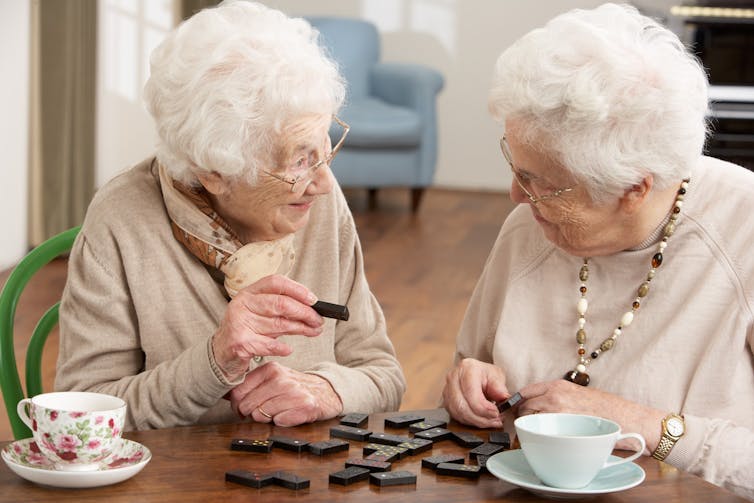
Intimate Knowledge
It might not seem feasible to include genuine enmity and opposition in your intimate life, but I would argue it is both possible and useful to have personal enmity in an intimate relationship. Only someone who knows you intimately can know how best to oppose you if they see you making mistakes or acting out; only someone with a deep and personal appreciation of your inner workings is able to be your enemy to help you.
This is the essence of great friendship. And we can see here how to solve the problem of bad romance. A.C. Grayling, an eminent British philosopher, has reflected on the problem of romance and friendship in his book Friendship (2013). Grayling can’t escape the basic assumption that friendship and romance are separate kinds of experiences, that one can’t mingle with the other. And, for him, friendship “trumps” all other types of relationship.

But for a romantic attraction to last and to be supportive and fulfilling, it must be based on great friendship – friendship that includes a celebration of difference, even to the point of welcoming critical reflection and opposition.
The difficulty we have with this idea reflects a general trend towards sameness in our social lives. This is exacerbated by our online existence. We live in a digital world that is fuelled by algorithms designed to push at us a million people who think and feel the same way we do.
Having a useful social circle, and maybe even a well-functioning society, cannot be about sameness – the same values, ideas, beliefs, directions, lifestyles. Difference is essential. But for this to work we must be able to occupy the same space with people who are wildly different to us, without taking offence or running away or getting aggressive or violent.
In fact, appreciation of profound difference is one of the signs of true intimacy. This is the art of great friendship, an art we seem to have lost. Recapturing it will produce larger social benefits.
I dream of a search engine I call “Gaggle”. It takes all the rejects from a Google search, the things that do not fit your profile, and sends you those results. That way, we could breathe the fresh air of new and unexpected ideas, and encounter strange people with weird approaches to life and confronting ethical and moral systems.
Giving And Taking
Another insight from Nietzsche has to do with giving and taking. His idea of great friendship suggests it is OK to be selfish in our most intimate relationships.
Selfishness has a terrible reputation. Our society demonises it, fetishising selflessness instead. This has the effect of making us feel bad about being selfish. As Nietzsche puts it:
The creed concerning the reprehensibility of egoism, preached so stubbornly and with so much conviction, has on the whole harmed egoism […] by depriving egoism of its good conscience and telling us to seek in it the true source of all unhappiness.
The idea that self-sacrifice is moral and selfishness is immoral has a long tradition. It can be traced to our society’s roots in the Christian faith. The idea that sacrificing yourself for someone else is somehow godlike is enshrined in Christian belief: Jesus died to save us from our sins, God the Father gave up his only Son, and so on.

This comes back to our obsession with love, but not romantic love this time. It is, rather, the kind of love where you put other people ahead of yourself as a kind of relationship goal. Sacrificing yourself for others is often celebrated as a great moral achievement.
I think this idea of sacrifice is especially true of our familial relationships. There is an expectation that mothers and fathers (but especially mothers) will sacrifice themselves for the wellbeing of their children. As parents age, there is an expectation that their children will make sacrifices. When financial or other trouble hits – siblings step in to help.
This morality of selflessness is, in my opinion, bereft. But so is a reaction against it. You see the latter everywhere in the world of “inspo quotes”, where selfishness is king: self-compassion, self-love, self-care. It’s everywhere.
To react vigorously against something vacuous is itself vacuous. The paradigm is wrong. Nietzsche offers us an alternative:
This is ideal selfishness: continually to watch over and care for and to keep our souls still, so that […] we watch over and care for to the benefit of all.
Think about it this way. Self-concern and concern for others are only mutually exclusive if there is a limited amount of “concern” to spread around. If that were true, you would have to choose whether to lavish it on yourself or give it to others.
But how do we get an infinite amount “concern” to spread around? We are looking for a kind of psychological nuclear fusion: an infinitely self-sustaining and self-generating source of concern for others.
This is not as hard as it sounds. There is a kind of relationship that allows for this. You guessed it: great friendship.
Because friendship insists on difference, it creates the space for two individuals to nurture themselves so each has something to give the other person. Because you don’t try to assimilate a true friend into a version of yourself, you are free to do whatever is needed to build their personal resources.
This means it is OK to be in a relationship for what you can get out of it. You can be in a friendship – a truly great one – selfishly.
Virtue, Pleasure, Advantage
This might be difficult to absorb, primarily because it challenges that dearly held moral conviction about selflessness. And it’s not just our Christian heritage that leads us down this path. You can see something like this in Aristotle, who thought friendships were based on one of three things: virtue, pleasure or advantage.
Virtue friendships are about recognising each other’s qualities or “goodness”. Pleasure friendships are about the enjoyment a person can derive from an intimate connection. Friendships of advantage are based on what each person can gain from the other.

For Aristotle, virtue friendships are the most perfect, because they are truly reciprocal. The other two types do not lead to ideal friendship, because they easily become one-sided. In other words, the highest form of friendship is one in which you don’t use your friend for some other (selfish) goal. You value them for who they are in themselves.
I am not an expert in Aristotelian philosophy, but I have many questions about this approach. What if the “good” in someone gives you pleasure? What if someone’s chief virtue is compersion – the ability to take pleasure in someone else’s pleasure? What if someone wants you be their friend so they can provide you with some sort of advantage?
I think Nietzsche’s concept of ideal selfishness works well with his ideal of friendship. Instead of seeing relationships as snapshots – you are either in it for yourself, or you are in it to help the other – we can see them as a cycle that repeats over time.
In great friendships, you give but you also take. There is space for you to be selfish – to top up, so to speak. You do this either in solitude or you draw on your friends. This might happen for a season, but then, having “topped up”, you have the personal and emotional resources to give back.
The key idea is that caring for yourself and caring for others are intertwined. One of the most important ways to look after yourself is to foster great friendships.
Contest
It is in this limited sense that I think we can see good familial relationships as also underpinned by great friendship. It is not about being best mates with your kids or your parents or your siblings. Even as parents and children, we can think carefully about how much we give, and how much we take, and be OK with both.
This idea about friendship has a broader context, which can be seen in Nietzsche’s way of thinking about relationships in general. He starts with the ancient Greeks, for whom contest was an essential part of their social lives.
Contests established a common baseline for excellence. They were central to sport (as in the Olympics), as well as artistic and cultural life. Poets, public speakers, guitar players – all participated in publicly adjudicated contests. The winners established standards of excellence for everyone to celebrate, including the losers.
Nietzsche adapts this idea into his ethics. For him, contest is at the centre of every intimate human connection. It is entirely natural for human beings to strive for self-expression. And if everyone is doing this all the time, we will inevitably strive against each other in some way. This is not out of animosity or ill will, nor even from competitiveness, in which the goal is simply winning. For Nietzsche, it is just the way we are.
This is why friendship is so important. It is the form of relationship best suited to sustaining contest between individuals, without rancour or domination. The startling implication of his approach is that for any kind of human relationship to work, it must have great friendship at its core.![]()
Neil Durrant, Adjunct fellow, Macquarie University
This article is republished from The Conversation under a Creative Commons license. Read the original article.
Fusing traditional culture and the violin: how Aboriginal musicians enhanced and maintained community in 20th century Australia

Aboriginal and Torres Strait Islander readers are advised this article contains names and images of deceased people.
The European violin was initially an imposition on Indigenous culture. But Aboriginal engagement with the violin cannot be exclusively seen as a means of cultural loss.
To only report the brutality and destruction of the British empire in Australia is to miss seeing how Indigenous people engaged, influenced, rejected and survived the forces of empire.
As my new research shows, Indigenous violin playing throughout 20th century Australia saw Aboriginal people adapting the European violin to fit within ongoing cultural practices.
As an Aboriginal violinist, I have always been fascinated by the way Western instruments have been adapted to become an expression of culture and Indigenous identity.
By studying the ways Aboriginal people of this era played the violin, we can better understand how Aboriginal people have responded to interventions in their lives with varying degrees of accommodation and resistance.
Cultural Continuation
As colonial governments made more concerted efforts to “civilise” Aboriginal people in 20th century Australia, many were segregated from society on missions or reserves.
Missionaries taught European activities and regularly forbade Aboriginal people from practising traditional customs. Western music was often taught to Aboriginal people as a means of demonstrating civility and as preparation for assimilation into white Australian society.
One of the first missions to explicitly use the violin in attempts to “civilise” Aboriginal people was on the New Norcia Mission, north of Perth, in operation from 1848 until 1974.

Aboriginal people continued to play the violin even when not prescribed. This does not mean the “civilising” mission was a success. Aboriginal people used music in the creation and preservation of individual, cultural and collective identities.
The violin was used on their own terms.
Peter Jetta was a Nyungar man born around 1872 who lived on the New Norcia Mission. Jetta used the violin as a hybrid expression of his own traditional culture.

As historian Anna Haebich writes, Jetta played the violin for local dances, weddings and Nyungar-only campfire gatherings in the bush.
“Old and new songs and dances mingled together reviving flagging spirits with the healing joy of being together as they had for millennia,” she says.
With this fusion of music, Jetta used the violin to enhance and maintain a sense of community.
The need for community would have been particularly acute on missions where many aspects of traditional life had been removed. Community and connection is an intrinsic element of Indigenous culture and its continuity.
An Aboriginal Jazz Band
In 1933, the Singleton Argus published a story on the wedding of Robert Silva and Mildred Bartholomew. The couple were living at Yellow Rock, a reserve at the base of the Blue Mountains near Sydney.
Music was provided by an Aboriginal jazz band playing locally made violins, banjos, steel guitars and gum leaves.
This couple walking down the aisle as these musicians played the Wedding March provides a rich evocation of the way western instruments were incorporated into Aboriginal music and events on their own terms.
Violins At A Corroboree
An article from the Northern Champion in 1934 recounts a concert and corroboree that occurred in Purfleet, New South Wales, for the local “townspeople”. We can assume many in the audience were white.
The first part of the program was devoted to songs and native dances, followed by a corroboree which illustrated elements of native lore. A gumleaf band and orchestra concluded the program. Each instrument was homemade and included single-string fiddles, violins and ukuleles made from tea chests.
These musicians combined their familiar traditions and cultures with European instruments. They were not only keeping cultural practices alive and carrying traditional knowledge forward, but also educating the broader population.
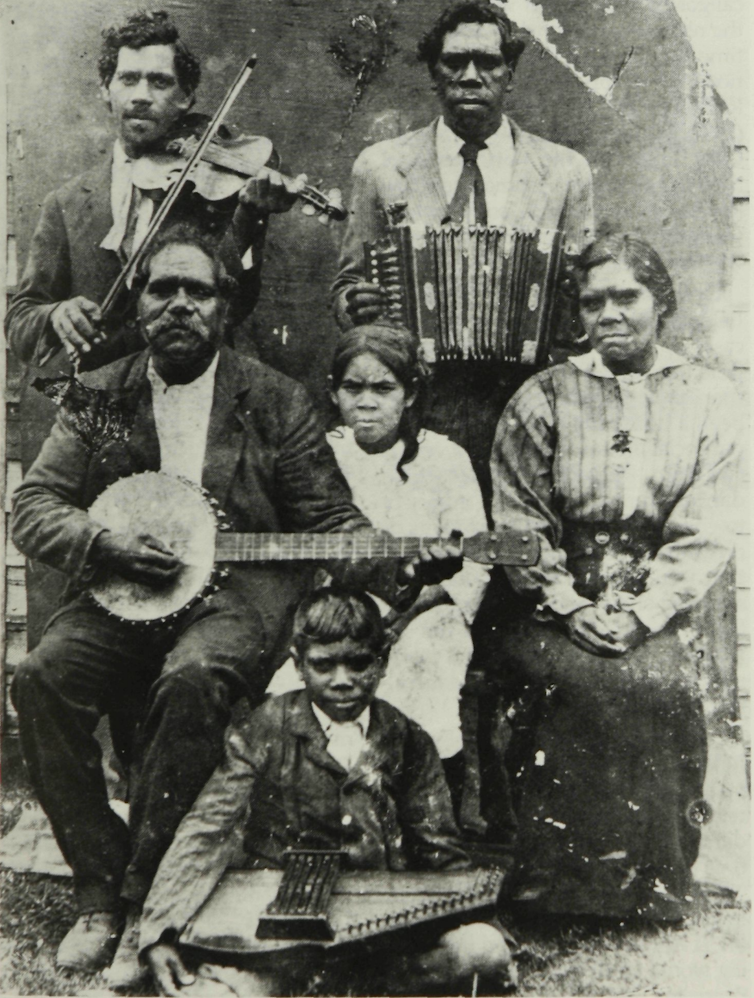
While some performances by Aboriginal people were organised to protest the repressive governmental policies of 20th century Australia, other performances were organised as a willingness to share cultural diversity to both educate and engage non-Indigenous audiences.
These performances acted as a channel for cultural continuation within changing social and political agendas.
Indigenous Players Today
These historical violinists are the predecessors of creative and innovative Indigenous string players who enrich our contemporary cultural life today.
Noongar violist, composer and conductor Aaron Wyatt made history in 2022 as the first Indigenous conductor of a state orchestra.
Wyatt’s compositions draw on the tone colour of Western string instruments and Didgeridoo to reflect the beauty of Australian landscapes and convey an Indigenous connection to Country.
Ngiyampaa, Yuin, Bandjalang and Gumbangirr violinist Eric Avery creates starkly original pieces for voice and violin that evoke a powerful connection to his ancestors, culture and identity.
Both Wyatt and Avery exceed and surpass the archetype of classical string playing to create immensely original and modern compositions. ![]()
Laura Case, PhD Candidate, Sydney Conservatorium of Music, University of Sydney
This article is republished from The Conversation under a Creative Commons license. Read the original article.
Tony Bennett: the timeless visionary who, with a nod to America’s musical heritage, embraced the future

In the history of American popular music, there have been few luminaries as enduring and innovative as Tony Bennett.
With a career that spanned almost 80 years, Bennett’s smooth tones, unique phrasing and visionary musical collaborations left an indelible mark on vocal jazz and the recording industry as a whole.
That his death at the age of 96 on July 21, 2023, was mourned by artists as varied as Keith Urban, Ozzy Osbourne and Harry Connick Jr. should come as no surprise. Yes, Bennett was a jazz crooner. But if his voice was always a constant – even late into his 80s, way past an age when most other singers have seen their vocal abilities diminish – then his embrace of the contemporary was every bit a facet of Bennett’s appeal.
Vocal Innovator
Bennett’s journey is a testament to the power of daring innovation.
From the early days of his career in the 1950s to his final recordings in the early 2020s, he fearlessly explored new musical territories, revolutionizing vocal jazz and captivating audiences across generations.
His vocal style and phrasing were distinctive and set him apart from other artists of his time. He utilized a delayed or “laid-back” approach to falling on the note, a technique known as “rubato.” This created a sense of anticipation in his phrasing, adding an element of surprise to his performances. Through Bennett’s skilled use of rubato, he was able to play with the tempo and rhythm of a song, bending and stretching musical phrases to evoke a range of emotions. This subtle manipulation of timing gave his songs a natural and conversational quality, making listeners feel as though he was intimately sharing his stories with them.
Armed with this silky, playful voice, Bennett found fame fairly early on in his career, delivering jazz standards alongside the likes of Mel Tormé and Nat King Cole. By the mid-1960s, he was being touted by Frank Sinatra as “the best singer in the business.”

But his musical style fell out of fashion in the 1970s – a lean period during which Bennett almost succumbed to a drug overdose. Then, in the 1990s, Bennett found a new audience and set off a series of collaborations with contemporary musical stars that would become the standard for his later career.
No genre of artistry was deemed off-limits for Bennett. “Duets: An American Classic,” released to coincide with his 80th birthday in 2006, saw collaborations with country stars such as k.d. lang and the Dixie Chicks – now known as the Chicks – and soul legend Stevie Wonder, alongside kindred jazz spirits such as Diana Krall. “Duets II,” a 2011 follow-up, saw further explorations with the likes of Aretha Franklin, Queen Latifah, Willie Nelson and Amy Winehouse, in what would become the British singer’s last recording.
But his cross-generational, cross-genre and cross-cultural appeal is perhaps best exemplified by his collaborations with Lady Gaga, first on the 2014 Grammy-winning album “Cheek to Cheek.” The recording brought together two artists from different generations, genres and backgrounds, uniting them in a harmonious celebration of jazz classics. The collaboration not only showcased each one’s vocal prowess, but also sent a powerful message about the unifying nature of music.
Lady Gaga, a pop artist with avant-garde leanings, might have seemed an unlikely partner for Bennett, the quintessential jazz crooner. Yet their musical chemistry and mutual admiration resulted in an album that mesmerized audiences worldwide. “Cheek to Cheek” effortlessly transcended musical boundaries, while the duo’s magnetic stage presence and undeniable talent enchanted listeners.
The successful fusion of jazz and pop encouraged artists to experiment beyond traditional boundaries, leading to more cross-genre projects across the industry – proving that such projects could go beyond one-off novelties, and be profitable at that.
Timeless Artistry
Bennett’s embrace of contemporary artists did not mean that he abandoned his own musical self. By blending traditional jazz with contemporary elements, he managed to captivate audiences across generations, appealing to both longtime fans and new listeners.
One key aspect of Bennett’s success was his ability to embody the sentiment of old America, reminiscent of artists like Sinatra, Billie Holiday and Louis Armstrong, while infusing contemporary nuances that resonated with the human condition of a more modern era. His approach to music captured both the essence and struggle of America, giving his songs a timeless and universal appeal. Moreover, his voice conveyed familiarity and comfort, akin to listening to a beloved uncle.
Bennett’s albums stood out not only for his soulful voice and impeccable delivery but also for the way he drew others from varied musical backgrounds into his world of jazz sensibilities. As a producer, he recognized the importance of nurturing creativity and bringing out the best in artists.
Meanwhile, Bennett’s approach to evolving his own sound while preserving its essence sets him apart as an artist. Fearless in his pursuit of innovation, he delved into contemporary musical elements and collaborated with producers to infuse new sonic dimensions into his later albums. The result drew listeners into an intimate and immersive, concert-like acoustic journey.
Depth Of Emotion
The greats in music have an ability to speak to the human experience. And either in collaboration with others or on his own, Bennett was able to achieve this time and time again.
His albums were successful not only due to their technical brilliance and musicality but also because Bennett’s voice conveyed a depth of emotion that transcended barriers of time and culture, touching the hearts of listeners from various backgrounds. There was a universality in his music that made him a beloved and revered artist across the globe.
Bennett’s life spanned decades of societal upheavals in the United States. But in his music, listeners could always find beauty in challenging times. And as the 20th- and 21st-century American music industry went through its own revolutions, Bennett’s artistic evolution mirrored the changes, cementing his place as a music icon who defies the boundaries of time and trends.![]()
Jose Valentino Ruiz, Program Director of Music Business & Entrepreneurship, University of Florida
This article is republished from The Conversation under a Creative Commons license. Read the original article.
National pride and sorrow: attending the 150th Latvian Song and Dance Festival as the daughter of refugees

“With song we have achieved freedom. With song we have gone to war. With song we have been victorious.”
These were the words of the newly elected president of Latvia, Edgars Rinkēvičs, at the closing ceremony of the 150th Latvian Song and Dance festival, held from June 30 to July 9.
Rinkēvičs was greeted by an audience of 50,000 members of the public and 21,000 performers who cheered and waved Latvian flags. He spoke about the power of song to unite and give hope to the Latvian people and to reinforce its centuries old cultural traditions.
Upward Together, the five-hour finale of this ten-day festival, was held in Silver Grove: an enormous, brand new, crescent-shaped arena amid tall pines in Mežaparks forest on the outskirts of Latvia’s capital, Rīga.
Upward Together was not just a celebration of Latvia’s rich culture: it was an emotional outpouring of both individual and collective national pride and sorrow. It reflected Latvia’s strong pagan roots and its deep love of nature which features in most of its folk songs. Here, the gods reside in trees, rivers, the sun, the moon and the stars.
But more significantly, the festival asserted the power of song as a peaceful form of protest against a long history of occupation by Germans, Poles, Swedes and Russians, culminating last century in almost 45 years of Soviet rule.
Joy About Culture; Sadness About History
As the daughter of refugees who escaped the Soviet occupation of Latvia during the second world war, I fought back tears as I listened to a choir of 17,000 champion the sun, the Daugava river and thunder – Latvia’s guardians against evil and oppression.
Next to me, two Ukrainian journalists wept as the orchestra played their national anthem. In the televised replays of the festival, cameras zoomed in on teary singers, dancers and musicians of all ages.
“Why does everyone cry?” I asked one of the participants.
“Because we feel great joy about our culture,” she said, “but also great sadness about our history.”
With the war in Ukraine on Latvia’s doorstep echoing its own battle with Russia during the second world war, the performances I saw over the ten day festival took on an added poignancy, offering a reminder of the Singing Revolution of 1987-91, when the three Baltic States raised their voices in song against their Soviet occupiers.
On August 23 1989, two million people from Latvia, Lithuania and Estonia formed a human chain over 600 kilometres long to join their capital cities. They held hands, sang folk songs and waved flowers, in a peaceful demonstration of solidarity that saw each state finally gain independence in the early 1990s.
A Free Latvia
Latvia’s Song and Dance festival was first held in 1873 with 1,000 performers, and was recognised by UNESCO in 2003.
After the second world war, when Latvia was part of the USSR, the festival was used to promote Soviet ideology. Certain songs particularly dear to Latvians could not be performed because they proclaimed the nation’s longing for independence. Gaismas Pils (The Castle of Light), composed in 1899 by Jāzeps Vītols, tells of a sunken castle that rises to announce the rebirth of a free Latvia. Despite being banned from the program, it was sung with defiance at the 1985 festival.
This year, 32 years after Latvia’s independence, the festival boasted over 40,000 participants including almost 3,000 from Latvia’s diaspora.
Participants from Latvia and from abroad paraded in national costume along Freedom Boulevard, cheered on by enthusiastic crowds and unfazed by downpours of rain. They performed in over 60 events in sport stadiums, theatres, churches and parks as well as the new arena in Mezaparks. They sang, danced and played the kokle, a traditional wooden instrument.
Ethnic groups from Ukraine, Russia, Belarus, Germany, Poland, the Jewish community and smaller regions of Latvia were featured in a special concert in the beautiful Chekhov Theatre; seniors gave a moving performance in the circus; 17,000 dancers formed constantly moving patterns of traditional Latvian symbols in a football stadium.
Riga’s central parks were transformed into art and craft markets selling silver, bronze and amber jewellery, hand-woven textiles, woodcarving, ceramics and leatherwork. Food stalls sold rye bread, sauerkraut and traditional pastries. Choirs, bands and theatre groups performed well into the night on outdoor stages and two giant traditional skirts spun continuously in the Esplanade as if unable to stop dancing.
The whole of Riga was alive.
Although I have been to Latvia many times, this was my very first experience of the Song and Dance Festival. I cried at every performance because every performance manifested the joy and the sorrow of what it is to be Latvian. When I was there, I truly understood the festival’s motto, Kopā būt, kopā just. Being together, feeling together. ![]()
Brigita Ozolins, Adjunct Senior Lecturer, Fine Arts, University of Tasmania
This article is republished from The Conversation under a Creative Commons license. Read the original article.
How does ice cream work? A chemist explains why you can’t just freeze cream and expect results
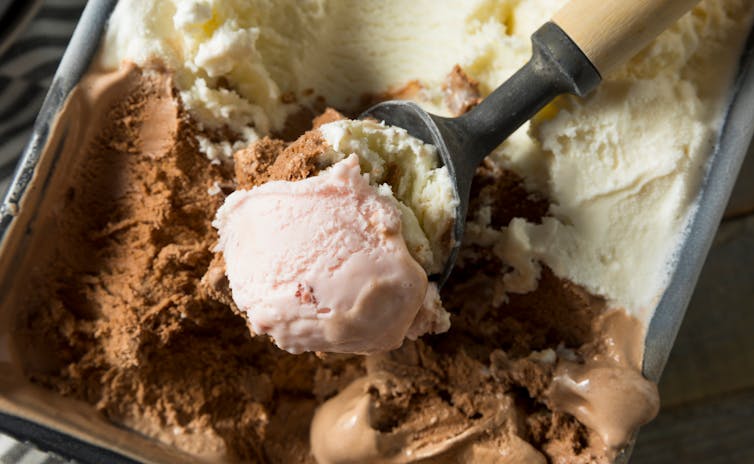
Ice cream seems like a simple concept. Take some dairy, add some sugar and flavours, and freeze.
But to get a perfectly creamy, smoothly textured frozen treat, we need more than just a low temperature – it takes a careful interplay of chemistry and three states of matter: solid, liquid and gas.
What’s In The Box?
Commercial ice cream includes many ingredients: air, water, milk fat, so-called milk solids (mainly milk proteins and lactose), sweeteners, stabilisers, emulsifiers and flavours. The ingredients are mixed and pasteurised for food safety.
Homemade ice creams tend to use milk, heavy cream, sugar and flavourings, such as fruit, berries, or chocolate. The exact quantities vary with the recipe, but the processing steps are similar.
Milk is composed of everything a young cow needs to grow and develop – water, fats, carbohydrates, proteins, minerals and vitamins. These components respond in different ways when they are frozen.
First, The Crystals
As the mixture of ice cream ingredients is cooled down, small clusters of water molecules assemble to form tiny ice crystals. The size of the ice crystals is responsible for the mouth feel of the ice cream – the smaller the crystals, the smoother the feel.
If the crystallisation is not well controlled, these crystals can get very large. Ice cream makers (commercial or for home use) ensure small ice crystals by agitating or beating the liquid as it freezes. This keeps the water molecules moving and prevents the crystals from growing larger.
The mixing process also incorporates air, which is the secret ingredient to give ice cream a lighter texture.

Next, The Fat
The fat in the milk exists as globules surrounded by proteins. These proteins bridge the fat and the water, helping to keep the fats suspended. (Milk looks white because light scatters off these fat globules.)
These dairy fat molecules have different properties at different temperatures. At room temperature they are semi-solids (like butter), and are about two-thirds solid when at 0℃.
The fat globules can stick together – that’s why you get a layer of cream on top of unprocessed milk. A process called homogenisation forces the milk through a small opening under very high pressure, breaking large fat globules down into smaller ones. This process makes many small fat globules – as many as a trillion per litre. Homogenised milk ensures the mixture will freeze evenly, and separated fats won’t get stuck to the mixing machinery.
Freezing the fat globules makes them clump together, with the surrounding proteins acting as bridges to other fat molecules and to the ice crystals. These fats melt in your mouth, giving a creamy feel and taste.
Then, The Sugar
The sugar and other dissolved ingredients in milk are also essential to the final texture of ice cream. The presence of sugars in the water lowers the mixture’s freezing temperature to below 0℃.
Here’s why that’s important. As ice crystals start to form, the concentration of sugars and other dissolved materials in the unfrozen liquid increases, which further lowers its freezing point. By the time the majority of the ice crystals have formed, the resulting liquid is very concentrated in sugars.
This concentrated liquid, known as the “serum”, bridges between the ice crystals, solid fat globules and air bubbles. The serum remains a liquid well below 0℃ and adds enough flexibility to the mixture so the ice cream can still be scooped or shaped.
In this way, the unique chemical properties of water, fats, proteins and sugars come together with air to give the solid, liquid and gas mixture we know and love.
Not Everything Is ‘Ice Cream’
What’s called “ice cream” is actually governed by a food standards code. That’s why not all frozen desserts can be legally called ice cream, because they don’t contain enough milk fat.
There are lots of variations on the standard ice cream recipe. Gelato uses more sugar, incorporates less air, and typically has less fats and other solids. Sorbets do away with the dairy and typically contain more sugar, but have historically used egg or gelatin as a protein source.
Regardless of the exact recipe, the fundamental ice crystal formation, fat solidification, and serum phase separation steps are the same.
Product names like “soft serve”, “dairy dessert”, or “ice confection” are often an indication the ingredient list includes vegetable fats rather than more expensive milk fats.

Soft serve products are also formed by agitation as the mixture freezes, but tend to contain less air than ice cream you’d buy in a tub, due to the constant agitation inside the dispensing machine.
Icy poles, ice blocks, freezies, or freeze pops (depending on your local phraseology) and other “water ices” are frozen inside a mould or plastic tubing. The shape of the mould limits the ability to stir the mixture, so the freezing process is typically done “quiescently”, meaning at rest. The crystallisation of the ice is not well controlled, and you may have experienced large crystals that have grown (technically “seeded”) from the popsicle stick.
Humanity has enjoyed ice cream for centuries. It’s a marvellously versatile food with endless variations of flavours, additives, and toppings coupled with memories of happiness, comfort, indulgence and nostalgia. And plenty of chemistry, too.![]()
Nathan Kilah, Senior Lecturer in Chemistry, University of Tasmania
This article is republished from The Conversation under a Creative Commons license. Read the original article.
In a Stone Age cemetery, DNA reveals a treasured ‘founding father’ and a legacy of prosperity for his sons
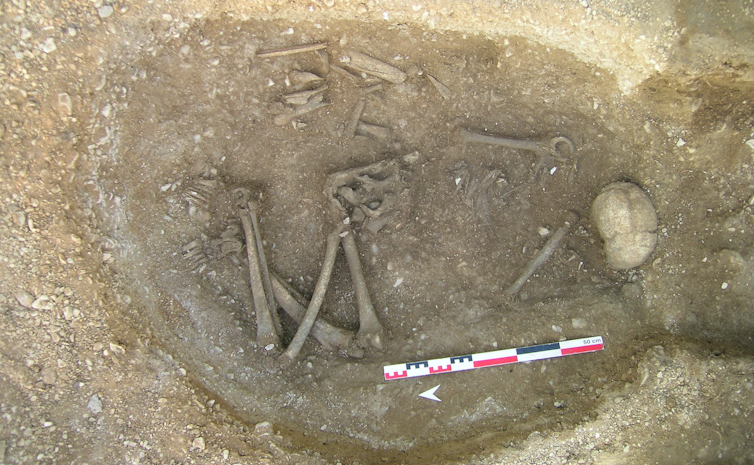
From the remains of nearly 100 ancient individuals, we have reconstructed two extensive prehistoric family trees from a 6,700-year-old cemetery in France, revealing fresh insights into a Stone Age community.
Our new results, published today in Nature, show a group of prehistoric farmers who lived within a network of other communities. This group even brought with them the bones of a “founding father”, establishing a lasting, male-dominated lineage.
Difficulties Looking Into The Past
Around 9,000 years ago, during the late Stone Age period, the “Neolithic way of life” spread from Anatolia (the large peninsula made up mostly of today’s Türkiye) into Western Europe.
Instead of hunting and gathering, people began farming. With the ability to produce and store extra food, Neolithic people developed new social customs built on wealth, land ownership and access to resources, therefore forming social hierarchies.
Ancient burials can tell us a lot about how prehistoric people treated their dead. But figuring out how these societies behaved on a day-to-day basis has always been challenging for researchers. These challenges are due to a lack of written records, and physical data that can be hard to interpret.
These problems are even more complicated during the Neolithic in the Paris Basin in Northern France, where the French cemetery site of Gurgy “les Noisats” was discovered.
Why? The Paris Basin is well known for its massive Stone Age funerary monuments (large objects celebrating important people after their death). These grand monuments functioned like the ancient Egyptian pyramids or the Taj Mahal of their day, in that they were built for the “elite” people in society.
But only a few, much smaller burials have been found that would likely represent the everyday people of the region. Studying these “normal” burials might be the only way to understand the “non-elite”, regular people of the time.
Using new methods for obtaining and comparing ancient DNA, and by sampling nearly every individual from this non-monumental cemetery, our new results reveal two large family trees which open a window into the lives of the people of this prehistoric community.
A Network Of Communities
At the cemetery of Gurgy, graves didn’t overlap, meaning there may have been some markings on top of the ground (perhaps like gravestones are used today). This also suggests closely related individuals knew where people were buried.
Using specialised ancient DNA techniques and several sources of evidence from the burials, we reconstructed two of the largest ever family trees from a prehistoric cemetery. One family tree connected 63 individuals over seven generations, while another connected ten individuals over four generations.

Exploring these family trees revealed a strong pattern of descent through the male line (called patrilineality). This is a practice where each generation is almost exclusively linked to the previous generation through their biological father.
Our results also suggested the practice of virilocality at Gurgy. This means the sons stayed where they were born, and produced children with women from outside of Gurgy.
Using strontium isotope analyses we confirmed these results by analysing the chemicals in the teeth of these individuals. Interestingly, some of the “new incoming” female individuals were distantly related to each other, meaning they may have come from a network of nearby communities, and even from the same communities.
Lastly, we also observed the adult daughters from Gurgy were not buried at the site, meaning they had likely left Gurgy to join other nearby communities themselves (once they had reached a certain age).
A Founding Father
We also discovered the grave of the “founding father” at the cemetery: a male individual from whom everyone in the largest family tree was descended.
We noticed this individual was actually brought from wherever he had originally died and was reburied at Gurgy (alongside a female individual we could not get DNA from). Only his long bones – thigh, leg, arm and forearm bones – were brought, and he must have represented an important ancestor to the founders of the new burial place of the community.
We observed an entire group, made up of several generations (children, parents and grandparents), arrived at Gurgy together from the beginning. This group must have left a previous site, leaving behind any previously deceased children (but yet still brought and reburied the founding father).
Similarly, in the final generations of Gurgy we observed many children without parents buried there. Hence, like the founding group, these last generations abruptly departed Gurgy together, leaving behind their own buried children. Hence, Gurgy was probably only used for three or four generations, or approximately 84–112 years.
This research represents a starting point for multidisciplinary studies of the social organisation of prehistoric societies, as these large family trees allow for new interpretations of the lives and practices of ordinary people from prehistoric communities.
As we discover and analyse more and more of these cemeteries, we may be able to compare and contrast social practices across regions and time periods, truly opening the window into our ancient past.![]()
Adam "Ben" Rohrlach, Mathematics Lecturer and Ancient DNA Researcher, University of Adelaide and Maïté Rivollat, Archaeologist, Université de Bordeaux
This article is republished from The Conversation under a Creative Commons license. Read the original article.
Who lived at Machu Picchu? DNA analysis shows surprising diversity at the ancient Inca palace

Standing atop the mountains in the southern highlands of Peru is the 15th-century marvel of the Inca empire, Machu Picchu. Today, the citadel is a global tourist attraction and an icon of precolonial Latin American history – but it was once the royal palace of an emperor.
Our international team of researchers has uncovered the incredible genetic diversity hidden within the ancient remains of those who once called Machu Picchu home. We detail our findings in a study published today in Science Advances.
The Puzzling Remnants Of A Royal Site
The Inca empire once ruled a vast 2 million square km across the breathtaking Andes mountain range in South America. It was formed in 1438 by the first ruler, Pachacuti Inca Yupanqui, and reached its height in 1533, before colonisation by the Spanish.
At the heart of the empire was the capital city of Cusco, and nearby was Pachacuti’s majestic palace, Machu Picchu.
Machu Picchu was visited by the royal family and guests during the dry season of May to October as a place to feast, dance, sing and hunt. Although these elite Incas were buried in Cusco upon their death, the palace was maintained year-round by a few hundred servants who lived on site. These servants were buried in cemeteries outside the palace walls.
Following Spanish colonisation, knowledge of Machu Picchu was lost to the Western world – only to be rediscovered by adventurers in the early 20th century.
In 1912, the Yale Peruvian Scientific Expedition documented a staggering count of 174 individuals buried on site. These burials were often shallow graves, or were concealed under large boulders or natural rocky overhangs.
While many lacked grave goods, ceramic artefacts were discovered buried alongside some people. These paint a vivid picture of cultural diversity, with styles from coastal and northern regions of Peru, as well as from the highlands of Bolivia near Lake Titicaca.
This was the first clue that Machu Picchu drew people from all reaches of the Inca empire. It suggested the servants who lived at Machu Picchu came from a variety of places, bringing ceramics from their homelands.
However, the artefacts could have also ended up in the area through trade. To find out where these people had come from, we would have to analyse their DNA.
New Findings From Ancient DNA
We sequenced ancient DNA from the remains of 68 individuals – 34 buried at Machu Picchu and 34 buried in Cusco. Using carbon dating, we dated the remains and found some of these people were buried before the rise of Pachacuti and the Inca empire.
We then compared their DNA with that of Indigenous peoples living in the Andes today (past research has found these genetic lines have continued undisturbed for the past 2,000 years) – as well as to ancestries from more distant regions of South America.
It’s worth noting these “ancestries” are based on DNA and don’t necessarily overlap with the peoples’ cultural identities, although they sometimes would.

Were the people buried at Machu Picchu genetically similar to those who had lived in the area since before Pachacuti’s reign? Or were they related to ancestries from more distant regions?
If the latter was true, we could safely assume they (or their parents) had come to Machu Picchu from faraway lands.
Journeying To A Life Of Servitude
Of all the DNA samples we analysed, we found 17 individuals had ancestry from one of the distant sources tested (coloured on the map below). These included all regions of the Peruvian coast and highlands, as well as the Amazon regions of Peru, Ecuador and Colombia.
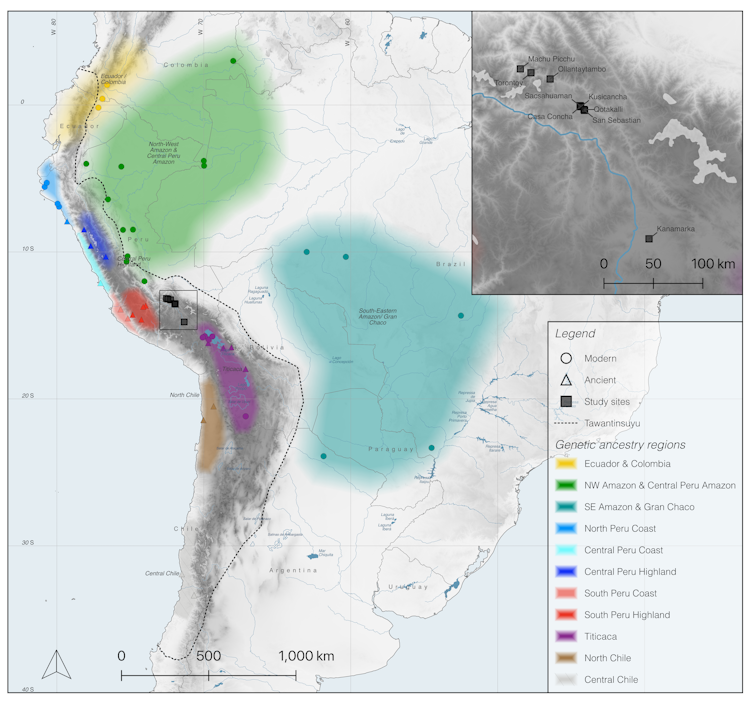
Only seven of the buried individuals had ancestry that could be linked to Peru’s vast southern highlands where Machu Picchu and Cusco reside. However, we can’t confirm they were local to Machu Picchu itself.
The remaining 13 individuals had blended ancestry, including from as far away as Brazil and Paraguay. They might have been the offspring of individuals from different lands who met at Machu Picchu – or could be linked to yet unknown South American ancestries.
As for close family relationships, we only discovered one pair: a mother and daughter.
Remarkably, all the individuals were buried together in the major cemeteries, irrespective of their ancestry. This could imply they were considered equal in status to one another, which in turn would suggest they were born elsewhere and arrived at Machu Picchu independently, occasionally forming relationships and having children.
It’s likely these people were from a class of “chosen women” called acllacona, and a similar class of men called yanacona. Individuals in these groups were selected from their homes at a young age and permanently assigned to state, aristocratic or religious service.
After arriving at Machu Picchu, they would have spent the rest of their lives serving the royal estate.
Although we don’t know how much (if any) coercion was involved in the process of these people coming to Machu Picchu, analyses of the bones suggest they lived comfortable lives. Many lived to old age and showed no signs of malnutrition, disease, or injury from warfare or heavy labour.
A Diversity Hotspot
Importantly, the human remains we found that predated the Inca empire did not exhibit high levels of diversity. This suggests it was indeed the establishment of the Inca empire that led people from far and wide to Machu Picchu.
Further, our examination of individuals from Cusco showed less diversity than at Machu Picchu, but more than other regional sites. This is probably because the extensive highland area had a long history of interactions between different peoples before the rise of the Inca empire.
Our findings paint a captivating picture of Machu Picchu as a true hotspot of diversity within the Inca imperial realm – setting it apart as a culturally rich hub within the ancient landscape.![]()
Roberta Davidson, PhD candidate in Genetic Anthropology, University of Adelaide
This article is republished from The Conversation under a Creative Commons license. Read the original article.
Australian ant honey inhibits tough pathogens, new research shows
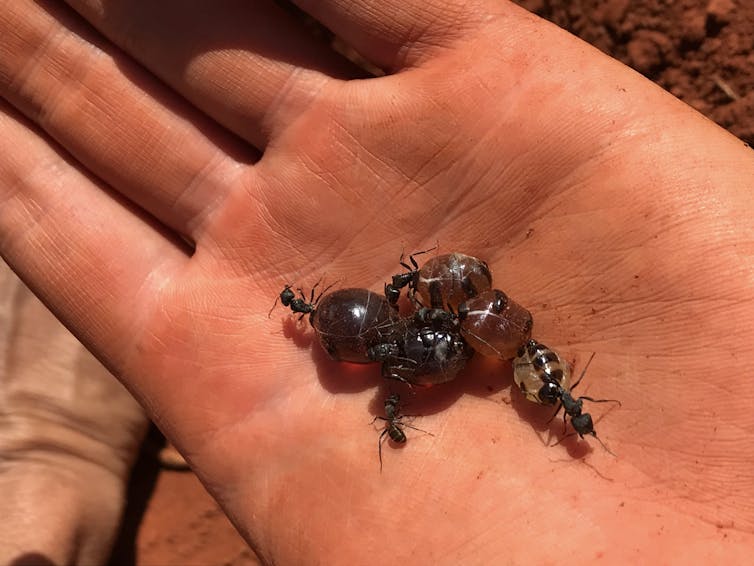
The medicinal value and potent antimicrobial activity of honey has been a topic of considerable interest in recent years, particularly in light of the alarming rise in antibiotic resistance.
While most honey comes from honey bees (Apis mellifera), other insects such as stingless bees, wasps and even ants can produce honey-like products from plant nectar.
One of these insects is the honeypot ant Camponotus inflatus, found throughout the central desert region of Australia. We set out to determine whether its honey might be medically useful.
Our results, published in PeerJ, show the honey has powerful anti-microbial effects, particularly against certain heat-tolerant yeasts and moulds which resist most current antifungal drugs.
Pots Of Gold
Honeypot ants are social ant species that develop large nests in the soil. Within these colonies, certain worker ants known as “repletes” serve as living food stores.
The repletes are fed by other members of the colony, who forage for nectar and honeydew in the environment. The repletes accumulate a golden honey-like substance in their flexible abdomens.
The repletes become so engorged with honey they are rendered almost immobile. They hang together from the ceiling of the nest, forming a sort of ant pantry.
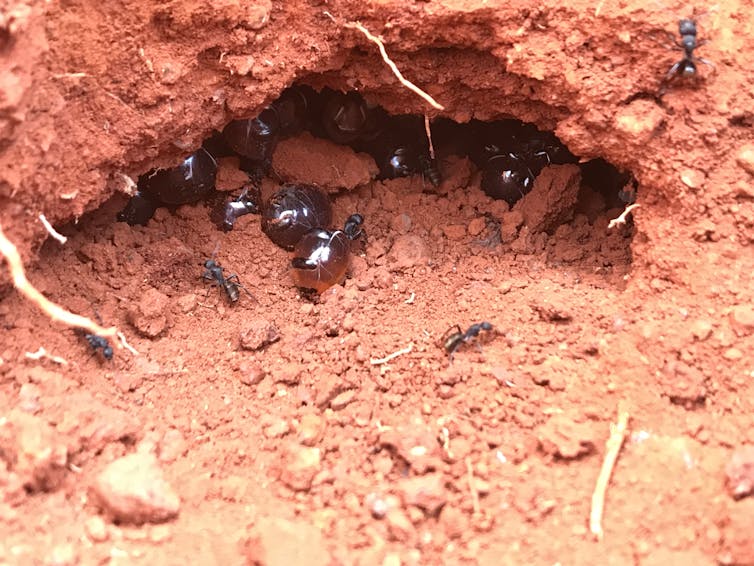
In times of need, other worker ants visit the repletes and stroke their antennae. The repletes cough up some honey in response, and the other workers then distribute it throughout the colony.
Most honeypot ants live in very dry environments. Their unusual lifestyle has been so successful it has evolved multiple times.
Honeypot Ants In First Nations Culture
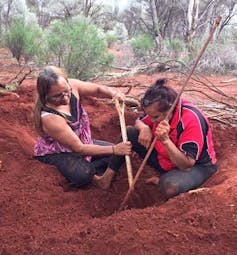
In Australia, Camponotus inflatus is found throughout the central desert region and holds cultural and nutritional significance to local Indigenous people.
Danny Ulrich of the Tjupan language group, operator of Goldfields Honey Ant Tours in Kalgoorlie, Western Australia, says
For our people, honey ants are more than just a food source. Digging for them is a very enjoyable way of life. It’s a way of bringing the family together, to connect with each other and nature.
There are also reports of traditional use of honeypot ant honey for treating ailments like colds and sore throats, and possibly as a topical ointment to help keep infections at bay, suggesting potential antimicrobial properties.
Not Your Usual Honey Activity
To investigate further, we obtained honeypot ant repletes from Goldfields Honey Ant Tours, collected and pooled the honey from the ants and tested its ability to inhibit various pathogenic bacteria, yeasts and moulds.
We compared this to two well-studied bee honeys with anti-microbial properties: manuka honey from New Zealand, and jarrah honey from Western Australia.
Our results revealed striking differences between the honeypot ant honey and the bee honeys.
Both bee honeys showed broad activity and were able to inhibit every pathogen tested at similar levels. However, the honeypot ant honey showed remarkable potency against certain microbes, but little against others.
Important factors that contribute to the antimicrobial power of bee honey are its high sugar and low water content, which sucks the water out of microbial invaders.
We found honeypot ant honey to have a much higher moisture content than the bee honeys, however, putting it in a range that could support the growth of some microorganisms.
Most bee honeys also contain enzymes that produce hydrogen peroxide, a known antimicrobial compound. However, honeypot ant honey retained most of its activity even after we removed all the hydrogen peroxide.
Finally, some honeys contain antimicrobial proteins and peptides that are derived from the honey bee. These can be destroyed by heat, and when we heated the honeypot ant honey to 90℃ for 10 minutes it lost most of its antimicrobial activity.
We therefore think this unique antimicrobial activity is likely due to proteins or peptides, and these are probably derived from the honeypot ant.
Evolution Of Antimicrobial Activity In The Insect World
In the natural environment, animals, plants, and the products they make are exposed to a huge range of microorganisms looking for their next meal. Sweet, nutritious honey is an enticing food source for these microbial scavengers and must be vigorously protected, both to prevent its spoilage and to stop invasion of the hive or nest by rapidly growing moulds.
Intriguingly, we found honeypot ant honey was particularly effective against some pathogens we consider to be quite “tough”. These pathogens are well adapted to living in soils and dry conditions, and can also cause very serious infections in people with severely weakened immune systems.
In particular, the ant honey was able to inhibit heat-tolerant yeasts and moulds that are likely to be present in the honey ant nest and surrounding environment. Importantly, these can be very difficult to kill with most currently available antifungal drugs.
We suggest the evolutionary pressure imposed by these soil microorganisms has resulted in the potent, selective antimicrobial activity of honeypot ant honey.
Science Catches Up With Indigenous Knowledge
Our results clearly support the medicinal use of honeypot ant honey by Australian Indigenous communities and provide a new understanding of the intricate relationship between honeypot ants, their environment, and the remarkable antimicrobial activity exhibited by their honey.
Due to the cultural significance of the ants, and challenges with rearing them at a commercial scale, it is not feasible to domesticate honeypot ants for honey production.
However, honeypot ant honey may provide valuable insights for the development of useful new antimicrobial peptides. These may help expand our arsenal of effective antibacterial and antifungal treatments, which are increasingly needed to combat emerging challenges in healthcare.![]()
Dee Carter, Professor of Microbiology, University of Sydney; Andrew Dong, Research Affiliate, Microbiology, University of Sydney; Danny Ulrich, Operator, Goldfields Honey Ant Tours, Indigenous Knowledge; Kenya Fernandes, Postdoctoral Researcher, University of Sydney, and Nural Cokcetin, Research scientist, University of Sydney
This article is republished from The Conversation under a Creative Commons license. Read the original article.
Why the media aren’t helping to solve the ‘youth crime crisis’ they’re reporting

Media outlets across Australia have carried headlines about a “youth crime crisis” in recent months. While drawn from actual events, often involving serious criminality and antisocial behaviour, these often sensational reports have the same narrative subtext. The story is one of “bad kids” doing bad things in otherwise “good communities”.
Our understanding, as a society, of who we are is informed in part by the media. What the youth crime crisis is and who we understand young offenders to be corresponds with media framings of these individuals and their actions.
More often than not, the reports present a “good-bad” binary: where “bad” young people who do bad things should be locked up to protect “good” people. It’s a basic, albeit understandable, reaction that makes sense in terms of a logic of punishment and retribution.
For the Youth Community Futures research project, we have been working with groups of young people to explore how they engage with the community and how they feel about it. Our young people have said they are increasingly fearful and are conscious of being perceived negatively. They do not feel accepted by others or their communities.
In short, these young people feel they are viewed as “bad” because they are young. And when young people feel marginalised, the outcomes include withdrawing and becoming socially isolated. It also increases the potential for problematic anti-social behaviour – including crime.

Fuelling The Fear Of'folk Devils’
There is, of course, far more to the situation. Research shows young people who engage in criminal activity are likely to have been victims themselves. The lives of many young offenders are complicated. Yet rarely are these situations and backgrounds factored into the media reports.
Beyond the circumstances of young offenders themselves, a further problem exists. When young people, as a defined social category, are presented in the media in such narrow terms, it becomes difficult to see them as anything other than threatening and dangerous.
Stanley Cohen’s seminal sociology of British youth from the 1960s demonstrates the ways that public sentiment often divorces from the facts of situations to create “folk devils”. When portrayals of young people, including those in the media, present them as threatening and menacing, it follows that public sentiment will be cast in similar ways.
Blinding Us To The Complexities
The challenge then is that it becomes difficult to understand the complexities of the situation and show empathy. This applies not only to “bad” young people, but to others who aren’t engaged in such problematic behaviour but who are caught within the narrow perceptions of who young people are.
This forms the central claim in our argument: the current youth crime crisis is as much a media-generated problem as it is a criminological problem. The way we understand and position young people as “folk devils” runs the risk of invoking fear and trepidation. Such fears lead the public to categorise all young people in problematic ways while failing to understand the complex challenges young people encounter.
More complex social narratives are required if we are to avoid a situation in which young people feel marginalised.
So, What Is The Solution?
We need to develop deeper and more accurate understandings of who our young people are. This applies particularly to those who are caught up in criminality and anti-social behaviour.
Most young people do not set out in life to be “bad”. Their problematic behaviours are likely to be the result of complex challenges. Once we accept that, we have a responsibility to seek deeper understandings of the situations our young people face.
Sensationalist headlines that feed on public fears are not helpful. These might sell newspapers, but they do not make us stronger as a society. They create folk devils out of young people who probably require support, and they produce a fearful community.
We need to move beyond easy explanations and simple distinctions. While it is horrendous that homes are being broken into and cars stolen, understanding that the young people engaged in these activities are likely also victims themselves is important for realising that we, as a society, have an obligation to all individuals.
We need to ask why young offenders are in this situation. Once we acknowledge the importance of a better understanding of their circumstances, we can start to meaningfully resolve these social problems before they occur.![]()
Andrew Hickey, Professor of Communications and Cultural Studies, University of Southern Queensland and Rachael Wallis, Research Assistant, Youth Community Futures, University of Southern Queensland
This article is republished from The Conversation under a Creative Commons license. Read the original article.
Long before women police officers came police ‘matrons’: who were they and what did they do?

This year marks a significant milestone for women in policing: the 125th anniversary of the first official recognition of a police matron in Australia.
However, women worked in this role for at least 50 years before receiving official recognition.
Known as “police matrons”, these women opened the door for other women to move into the police force as officers, yet their role is still unrecognised or dismissed as an extension of her husband’s policing duties.
While many Australians will have never heard of them, they were trailblazers for women in law enforcement.
The Female Touch In Policing
During the Victorian era, it was considered inappropriate for men to touch a woman who was not their wife or an immediate family member. This made men policing women (at least of certain social classes) difficult, particularly if they needed to search a female suspect. To get around this, police began to call on women to search arrestees for them.
Initially, these might have been whoever was nearby – a woman living near the police station, for example. But quickly it was recognised that a “female touch” was also helpful for comforting lost children, talking to female victims of crime, and occasionally soothing an unruly male arrestee. Neighbourhood women were not viewed as entirely suited for these more complex roles, but the wives of police officers were.
In Australia, the United States and the United Kingdom, early police stations had both temporary holding cells (a lock-up) and a residence for a police officer. The officer living on site was frequently married – these women became police matrons.
Police matrons in the Victorian era searched female offenders, were responsible for lost or arrested children, kept watch over mentally unwell inmates, and occasionally allowed families facing violence at home to stay in the station.
They also performed tasks we would not generally associate with the work of a police officer. They cleaned and maintained the cells, mended clothes, and hosted clothing drives for the poor. The police stations sometimes doubled as neighbourhood medical centres. These were all tasks that fell to the police matron. They fit within assumptions of the period regarding the natural, nurturing role of women.

Discrimination Leading To Innovation
Because these tasks were viewed as “naturally” women’s work, questions regarding compensation were skirted. For decades, these were not formal appointments. The matrons were not sworn in, they did not have access to a police pension, and they did not have any authority over male inmates (or male officers).
A few received a modest stipend based on the number of searches they conducted or if they performed an extended psychiatric watch. These matrons would be on-call 24 hours a day, and diaries kept by early matrons show the long hours they kept. Yet their activities were viewed as an extension of their husband’s role, not requiring separate pay.
These women did not go on patrol or have powers to arrest. But there is evidence that police matrons performed tasks that align with current approaches to policing.
For example, a key role of male police in the early Victorian era was to prevent crime by being out in the community: an officer’s presence alone would often deter offending.
Police matrons rarely worked outside of the station, but they did get to know the needs of their community and tried to identify causes of crime. They became advocates, trying to address what they saw as the root causes of crime: excessive consumption of alcohol leading to the violent breakdown of families. Matrons advocated for increased regulation of alcohol and for stations to provide sanctuary for domestic violence victims.
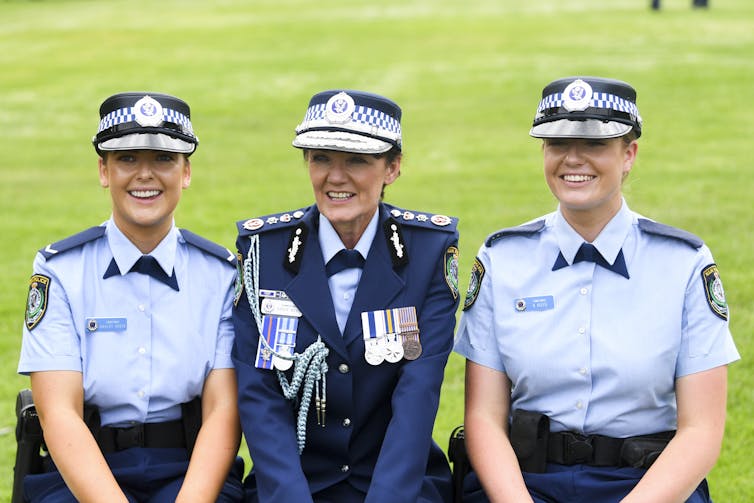
Today, these efforts would be understood as forms of problem-orientated policing: identifying a problem in a community and working with the community to devise solutions for the underlying causes of crime. We cannot go as far as claiming that police matrons started the movement towards problem-orientated policing. But we can recognise that they predated today’s “best practice in policing” model by roughly 150 years.
Though we know police matrons were working in this field in the mid-1800s, and gained a degree of official recognition in the 1890s, it was not until 1915 that the New South Wales Police Department advertised two positions for women police officers.
These two positions attracted nearly 500 applications. The first two female police officers in NSW were not allowed to wear a uniform and had to sign a waiver releasing the police department of any responsibility for their safety. Their tasks were similar to police matrons – they were responsible for women and children that came in contact with the criminal justice system. It wasn’t until 1979 that female officers in Australia could carry a firearm, though they were required to keep it in their handbag.
Today, women make up over 30% of police in Australia and have reached the highest ranks as police commissioners. Although Australians may not know much about the early police matrons, it was they who, more than 100 years ago, paved the way for all this to happen.![]()
Alice Neikirk, Lecturer, Criminology, University of Newcastle
This article is republished from The Conversation under a Creative Commons license. Read the original article.
VP Day + Vietnam Veterans Day (Northern): 2023 Services
Upcoming Manly-Warringah Choir Concert


History Of Mona Vale Talk
%20for%20NBC.jpg?timestamp=1690612167875)
Wyvern Music Forestville: Delightful Discoveries

Korea 70 Years On – How RSL NSW Members Remember The Korean War

 Ernest Holden – St Marys RSL sub-Branch
Ernest Holden – St Marys RSL sub-Branch “These years were both sad and satisfying, experiencing the comradeship of great mates, being scared and frightened of the unknown, not knowing if they would survive, being homesick but delighted to receive mail and packages from home, witnessing death and injuries but also a feeling of satisfaction and accomplishment in the end.”
“These years were both sad and satisfying, experiencing the comradeship of great mates, being scared and frightened of the unknown, not knowing if they would survive, being homesick but delighted to receive mail and packages from home, witnessing death and injuries but also a feeling of satisfaction and accomplishment in the end.”  All I can say is I’m pleased that I joined and I’m pleased that the skills I learned helped me when I got out of the service.”
All I can say is I’m pleased that I joined and I’m pleased that the skills I learned helped me when I got out of the service.”  It got down to minus 27 degrees. It was one of the worst winters they had. We were fitted with special winter gear. It was very heavy, American gear but it was very good.”
It got down to minus 27 degrees. It was one of the worst winters they had. We were fitted with special winter gear. It was very heavy, American gear but it was very good.”  “Well, when you’re down below decks, you don’t really know what’s going up there. The only thing you are conscious of is that something is about to happen when you get called up for Action Stations. You know where you are supposed to go and what you’re supposed to do if anything happened.”
“Well, when you’re down below decks, you don’t really know what’s going up there. The only thing you are conscious of is that something is about to happen when you get called up for Action Stations. You know where you are supposed to go and what you’re supposed to do if anything happened.”  “I treasured my time with the very capable diggers of B Company 6 Platoon. I enjoyed my liaison duty with vehicle and radio operation at the Republic of Korea unit alongside Hill 355.”
“I treasured my time with the very capable diggers of B Company 6 Platoon. I enjoyed my liaison duty with vehicle and radio operation at the Republic of Korea unit alongside Hill 355.”  “Late in November the frozen winds arrived, and the temperature dropped below zero. Our hands would freeze to the bare metal of our weapons, so we slept with them tucked against our bodies to stop them freezing up.”
“Late in November the frozen winds arrived, and the temperature dropped below zero. Our hands would freeze to the bare metal of our weapons, so we slept with them tucked against our bodies to stop them freezing up.” Wanderers Walking Monthly Walk - September: Warriewood Valley
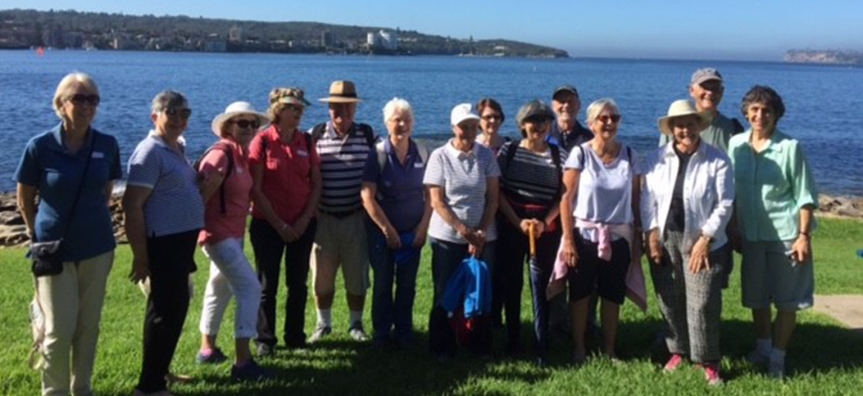
AvPals Term 3 At Newport

Two Charged Over Alleged $349,000 Defrauding Of Elderly Woman: Watsons Bay
Not Eating Enough Of These Six Healthy Foods Is Associated With Higher Cardiovascular Disease And Deaths Globally
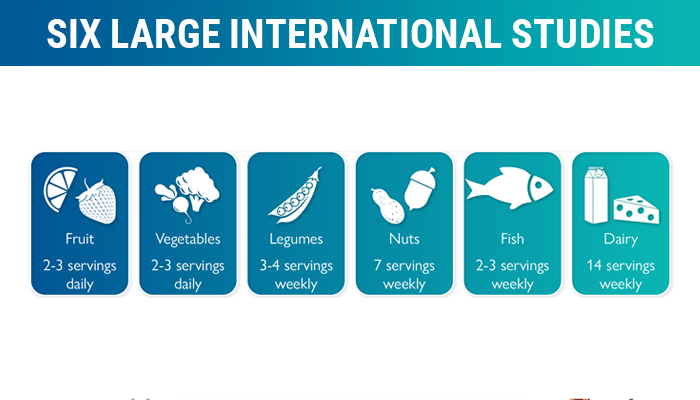

Pittwater-Narrabeen Parkinson’s Support Group
2024 NSW Seniors Festival Grants Program Applications Open

- supporting a broad range of local community organisations
- supporting programs and activities in regional NSW
- fostering partnerships with community groups and services
- providing programs and activities for diverse communities in NSW
- supporting projects that empower older people to stay connected
- assisting organisations to increase capacity of current programs and activities.
- Up to $5,000 for local community programs and activities.
- $5,001 - $10,000 to local government organisations for large scale community and regional programs and activities – funding is available to local government organisations only.

Appointment Of Elizabeth Cosson AM CSC To RSL LifeCare Board

Jet V. Mull Of Kintrye

Jet, Jet, JetI can almost remember their funny facesThat time you told them you were going to be marrying soonAnd Jet, I thought the only lonely place was on the moonJet, Jet, JetWas your father as bold as the sergeant major?Well how come he told you that you were hardly old enough yet?And Jet, I thought the major was a lady suffragetteJet, JetAh Mater want Jet to always love me
Mull of KintyreOh mist rolling in from the sea,My desireIs always to be hereOh Mull of Kintyre
You're Never Too Old To Become An Artist!
Daily aspirin doesn’t prevent strokes in older, healthy people after all

The daily use of low dose aspirin has been a mainstay of preventing strokes for decades. While there has always been a risk of bleeding associated with aspirin use, the benefits were thought to outweigh the risk.
Now new research led by Monash University has shown daily, low-dose aspirin doesn’t prevent strokes in relatively healthy people aged over 70. And it increases their risk of bleeding on the brain after falls or other injuries.
But if you’re taking aspirin, it doesn’t mean you should abruptly stop. It may still have a role to play in treating people at high risk of stroke. Or, after talking to your doctor, there might be better options available.
Why Has Aspirin Been Used To Prevent Strokes?
Aspirin is an anti-platelet medicine, which is commonly known as a blood-thinner. Platelets are the component of blood primarily responsible for its clotting action. They are what stop you from continuously bleeding any time you have a cut or scrape on your skin.
A stroke is when oxygen can’t get into the brain because of a burst or blocked blood vessel. A blockage can occur when platelets in the bloodstream form a clot and it gets stuck in the artery.

Because aspirin acts on platelets, it can help prevent the clots that can lead to a stroke.
But because aspirin acts on platelets, it can also increase the risk of unwanted bleeding, usually in the stomach. It can also increase your risk of bleeding more when you have another injury, like hitting your head.
Aspirin isn’t just used for the prevention of strokes. It is also the first aid treatment for someone undergoing a heart attack.
Findings Of The Monash Trial
New research from Australia and the United States reports results from the Aspirin in Reducing Events in the Elderly (ASPREE) trial.
The researchers examined the protective use of daily low-dose aspirin (100 mg) in nearly 2,000 people who were aged 70 years and older and had no history of heart disease or stroke and whose blood pressure and cholesterol were well managed.
When compared with placebo, aspirin didn’t reduce or increase the risk of stroke. Of the participants who took the aspirin, 195 or 4.6% had a stroke. Of those who took the placebo, 203 people or 4.7% had a stroke.
But it did statistically increase the rate of non-stroke bleeding in the participants’ brains, for example when they injured their head. Those on aspirin showed a rate of bleeding in the brain of 1.1% (108 participants) compared with 0.8% (79 people) for those on placebo. This is a relatively, low but serious, risk.
These findings are not entirely new. Research published five years ago based on the same ASPREE trial showed a similar result: a higher rate of bleeding among those taking low-dose aspirin compared with placebo.
However as the study authors note, aspirin continues to be widely used for the prevention of stroke.
What Are The Study’s Limitations?
The researchers examined aspirin in mostly people of white European heritage.
So we don’t know whether the results are translatable to people with different ethnic backgrounds. Genetics and ethnicity can significantly impact the efficacy and safety of some drugs.
The clinical trial only included people who were not significantly at risk of a stroke, and had no history of heart disease.
Younger age groups were not studied either, so we cannot make any conclusions about their use of low dose aspirin to prevent stroke.
It’s also possible the potential benefits and risks are different for those who have underlying heart problems or who have previously had a stroke and are therefore at higher risk of another stroke.

I’m Taking Aspirin, What Should I Do?
If you’re taking daily low-dose aspirin and are concerned by the results of the study, it’s important you don’t just stop taking your medicine. Speak to your doctor or pharmacist.
For people who are at high risk of having a stroke, or have previously had one, low-dose aspirin may remain their treatment of choice despite the slight bleeding risk.
If you’re at high risk of bleeding, for example because of falls and other accidents due to advanced age, frailty, or another underlying condition, your doctor may be able to reduce the amount of aspirin you take by adding in dipyridamole or prescribing a different medicine completely, such as clopidogrel.![]()
Nial Wheate, Associate Professor of the Sydney Pharmacy School, University of Sydney and Tina Hinton, Associate Professor of Pharmacology, University of Sydney
This article is republished from The Conversation under a Creative Commons license. Read the original article.
Australian Study Backs AMA Calls For A Tax On Sugar-Sweetened Beverages
Improving Health Outcomes For People Living With Post-Acute Sequelae Of COVID-19 (Long COVID): New Expert Advisory Panel Announced By Australian Government
 A new research plan to improve health outcomes for people living with post-acute sequelae of COVID-19 (also called long COVID) will shape $50 million in funding from the Medical Research Future Fund. An independent Expert Advisory Panel formed the plan. Members tell us how it meets an urgent need.
A new research plan to improve health outcomes for people living with post-acute sequelae of COVID-19 (also called long COVID) will shape $50 million in funding from the Medical Research Future Fund. An independent Expert Advisory Panel formed the plan. Members tell us how it meets an urgent need.- what causes long COVID
- which factors affect prognosis
- people’s experience of living with long COVID
- the best therapeutics
- the best models of care
- the needs of vulnerable communities.
- Planning research to progress our knowledge
‘Is the doggy angry?’ Research hints children under 5 can easily confuse dog emotions
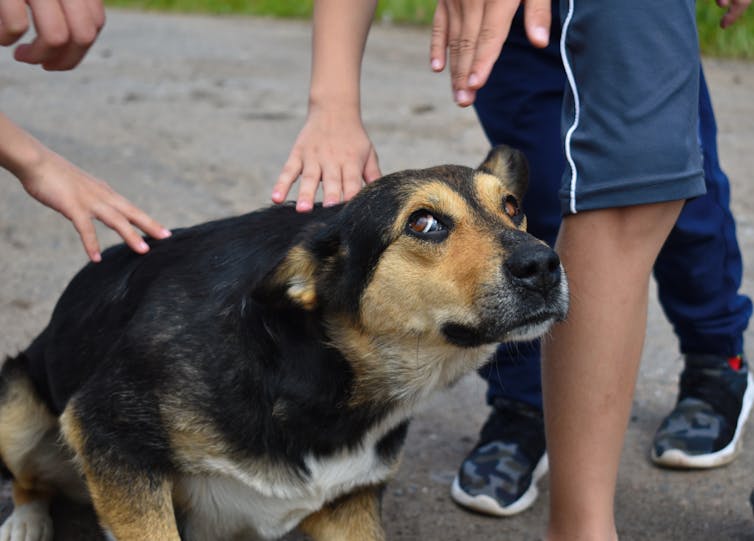
To most of us, a dog showing its teeth is a pretty clear signal of threat. In 1872, Charles Darwin first suggested animals showed emotions similar to ours in their body language, and we might be able to use this to better understand their behaviour and motivations.
There is perhaps no better species for investigating this idea than the domestic dog. We live alongside them, yet they have teeth that can inflict significant damage on a human. So we ought to be invested in knowing when they are happy, neutral or angry, at the very least.
Adult humans are good at identifying an angry dog visually or by sound, regardless of how much experience they have with dogs. However, young children do not show the same skill, and in fact may mistake a fierce dog for a happy dog.
A new study published in PLOS ONE, by University of Helsinki animal cognition researcher Heini Törnqvist and colleagues, has sought to identify when children start to develop dog-reading skills and what role their experience with dogs may play in this.
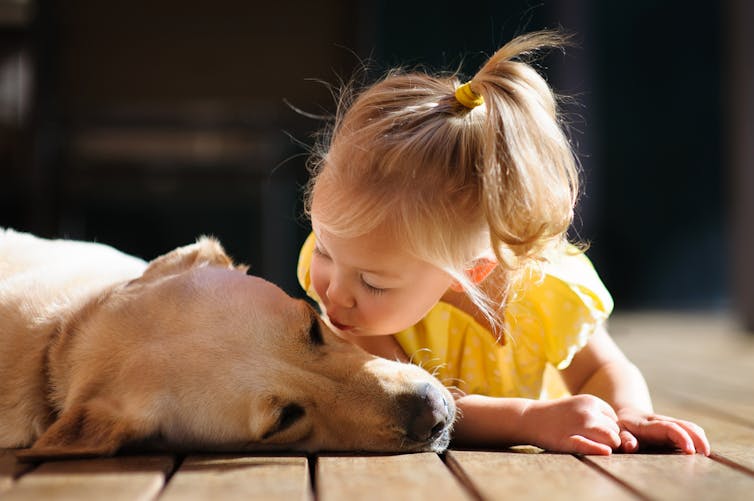
Rating Dog Faces
It is certainly useful to know when children become as good as an adult at reading dog body language. It helps us to make decisions about the level of supervision children need around dogs. It can also help to anticipate them making choices that we as adults would think are an obviously terrible idea when interacting with a dog.
However, dogs are also special. They have been with us for so long, we have influenced their evolution, and maybe they have influenced ours as well. This co-domestication hypothesis raises the possibility our long association with dogs may have led to both species being particularly quick to bridge the species divide and manage to communicate effectively with each other.
In the new study, 34 adults, 34 four-year-olds and 31 six-year-olds were presented with a series of photos of dog faces and human faces. They were asked to report how excited each dog or person was, how good or bad their mood was, and whether they were happy, neutral or angry.
The results revealed that four-year-old children rated angry dogs to be in a more positive mood than the older children and adults did, even if these youngest kids were experienced with dogs. The six-year-olds, if experienced with dogs, were as good as adults at identifying dog emotions from photos.

Adults were equally likely to correctly identify dog emotions whether they were experienced or inexperienced with dogs. Meanwhile, children were equally good at identifying human emotions from photos regardless of age.
These results show that age may indeed affect how accurately children can identify dog emotions from the animals’ facial expressions, with experience factoring into how early they develop these skills.
Children under the age of five are likely to interpret dog expressions by looking for similarities to human expressions. This is particularly troublesome when angry dogs show their teeth, as children may interpret this as a friendly smile.
By the age of six, children who have lived with a dog may have learned exposed teeth are an angry expression in dogs, whereas children who haven’t spent much time around dogs may continue to make interpretation errors.
Supervision Is Key
This highlights how important it is to closely supervise young children when they are around dogs.
According to a study from 2001, children 0-4 years in age are the most likely age group to suffer severe dog bites in Australia. Some of those bites may occur as a result of children misunderstanding dog threat displays, and their tendency to lean into dogs when interacting with them.
The results may have been influenced by a few additional factors. This study only presented images of dogs, whereas young children may be more attuned to auditory signals, such as a deep growl or bark.
Additionally, participants were considered “experienced” with dogs only if they had lived with one, whereas “inexperienced” individuals may have spent a lot of time with dogs in other contexts that was not captured.
What does this mean for the co-domestication hypothesis? The jury is still out. The results suggest children learn to read dogs through experience, but this is occurring at a young age. It’s difficult to tell whether children are primed to learn to read dogs, or if it is simply a species they have the most experience with from an early age.
But you likely do want to watch closely when your children interact with the family dog, even if they grew up together. Older children can make mistakes with dogs as well, and we shouldn’t rely on our dogs to always be highly tolerant of provocative things children may do.![]()
Melissa Starling, Postdoctoral researcher, University of Sydney
This article is republished from The Conversation under a Creative Commons license. Read the original article.
The $500 million ATO fraud highlights flaws in the myGov ID system. Here’s how to keep your data safe

The Australian Tax Office (ATO) paid out more than half a billion dollars to cyber criminals between July 2021 and February 2023, according to an ABC report.
Most of the payments were for small amounts (less than A$5,000) and were not flagged by the ATO’s own monitoring systems.
The fraudsters exploited a weakness in the identification system used by the myGov online portal to redirect other people’s tax refunds to their own bank accounts.
The good news is there’s plenty the federal government can do to crack down on this kind of fraud – and that you can do to keep your own payments secure.
How These Scams Work
Setting up a myGov account or a myGov ID requires proof of identity in the form of “100 points of ID”. It usually means either a passport and a driver’s licence or a driver’s licence, a Medicare card, and a bank statement.
Once a myGov account is created, linking it to your tax records requires two of the following: an ATO assessment, bank account details, a payslip, a Centrelink payment, or a super account.
These documents were precisely the ones targeted in three large data breaches in the past year: at Optus, at Medibank, and at Latitude Financial.
In this scam, the cyber criminal creates a fake myGov account using the stolen documents. If they can also get enough information to link to the ATO or your Tax File Number, they can then change bank account details to have your tax rebate paid to their account.
It is a sadly simple scam.
How Government Can Improve
One of the issues here is quite astounding. The ATO knows where salaries are paid, via the “single touch” payroll system. This ensures salaries, tax and superannuation contributions are all paid at once.
Most people who have received a tax refund will have provided bank account details where that payment can be made. Indeed, many people use precisely those bank account details to identify themselves to myGov.
At present, those bank details can be changed within myGov without any further ado. If the ATO simply checked with the individual via another channel when bank account details are changed, this fraud could be prevented. It might be sensible to check with the individual’s employer as well.
Part of the problem is the ATO has not been very transparent about the risks. If these risks were clearly set out, then calls for changes to ATO procedures would have been loud and clear from the cyber security community.
The ATO is usually good at identifying when a cyber security incident may lead to fraud. For example, when the recruitment software company PageUp was hacked in 2018, the ATO required people who may have been affected to reconfirm their identities. This was done without public commentary and represents sound practice.
Sadly, the millions of records stolen in the Optus, Medibank and Latitude Financial breaches have not led to a similar level of vigilance.
Another action the ATO could take would be to check when a single set of bank account details is associated with more than one myGov account.
A national digital identity would also help. However, this system has been in development for years, is not universally popular, and may well be delayed until after the federal election due in 2024.
Protecting Yourself
The most important thing to do is make sure the ATO does not use a bank account number other than yours. As long as the ATO only has your bank account number to transfer your tax rebate, this scam does not work.
It also helps to protect your Tax File Number. There are only four groups that ever need this number.
The first is the ATO itself. The second is your employer. However, remember you do not need to give your TFN to a prospective employer, and your employer only needs your TFN after you have started work.
Your super fund and your bank may ask for your TFN. However, providing your TFN to your super fund or bank is optional – it just makes things easier, as otherwise they will withhold tax which you will need to claim back later.
Of course, all the usual data safety issues still apply. Don’t share your driver’s licence details without good reason. Take similar care with your passport. Your Medicare card is for health services and does not need to be shared widely.
Don’t open emails from people you do not know. Never click links in messages unless you are sure they are safe. Most importantly, know your bank will not send you emails containing links, nor will the ATO.![]()
Rob Nicholls, Associate professor of regulation and governance, UNSW Sydney
This article is republished from The Conversation under a Creative Commons license. Read the original article.
Ancient pathogens released from melting ice could wreak havoc on the world, new analysis reveals
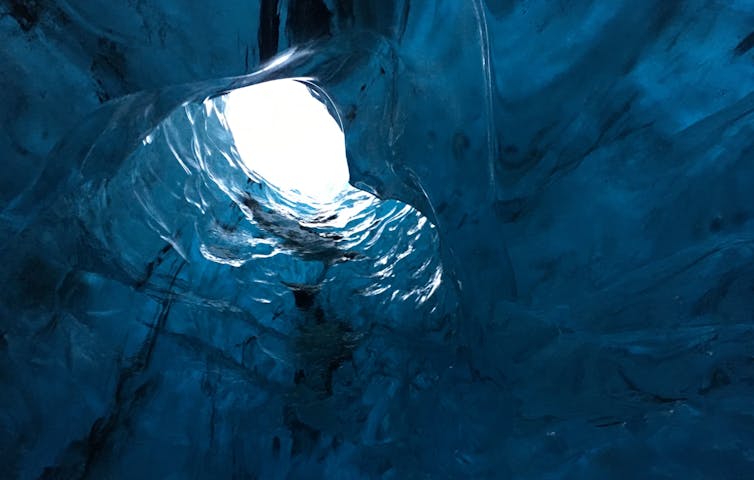
Science fiction is rife with fanciful tales of deadly organisms emerging from the ice and wreaking havoc on unsuspecting human victims.
From shape-shifting aliens in Antarctica, to super-parasites emerging from a thawing woolly mammoth in Siberia, to exposed permafrost in Greenland causing a viral pandemic – the concept is marvellous plot fodder.
But just how far-fetched is it? Could pathogens that were once common on Earth – but frozen for millennia in glaciers, ice caps and permafrost – emerge from the melting ice to lay waste to modern ecosystems? The potential is, in fact, quite real.
Dangers Lying In Wait
In 2003, bacteria were revived from samples taken from the bottom of an ice core drilled into an ice cap on the Qinghai-Tibetan plateau. The ice at that depth was more than 750,000 years old.
In 2014, a giant “zombie” Pithovirus sibericum virus was revived from 30,000-year-old Siberian permafrost.
And in 2016, an outbreak of anthrax (a disease caused by the bacterium Bacillus anthracis) in western Siberia was attributed to the rapid thawing of B. anthracis spores in permafrost. It killed thousands of reindeer and affected dozens of people.
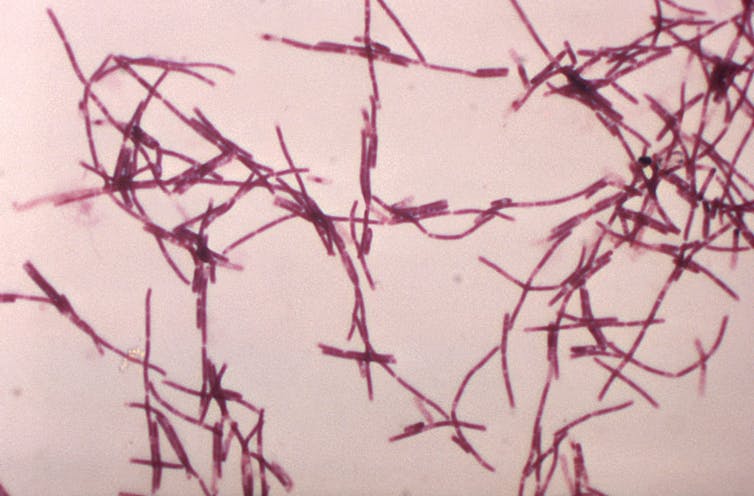
More recently, scientists found remarkable genetic compatibility between viruses isolated from lake sediments in the high Arctic and potential living hosts.
Earth’s climate is warming at a spectacular rate, and up to four times faster in colder regions such as the Arctic. Estimates suggest we can expect four sextillion (4,000,000,000,000,000,000,000) microorganisms to be released from ice melt each year. This is about the same as the estimated number of stars in the universe.
However, despite the unfathomably large number of microorganisms being released from melting ice (including pathogens that can potentially infect modern species), no one has been able to estimate the risk this poses to modern ecosystems.
In a new study published today in the journal PLOS Computational Biology, we calculated the ecological risks posed by the release of unpredictable ancient viruses.
Our simulations show that 1% of simulated releases of just one dormant pathogen could cause major environmental damage and the widespread loss of host organisms around the world.
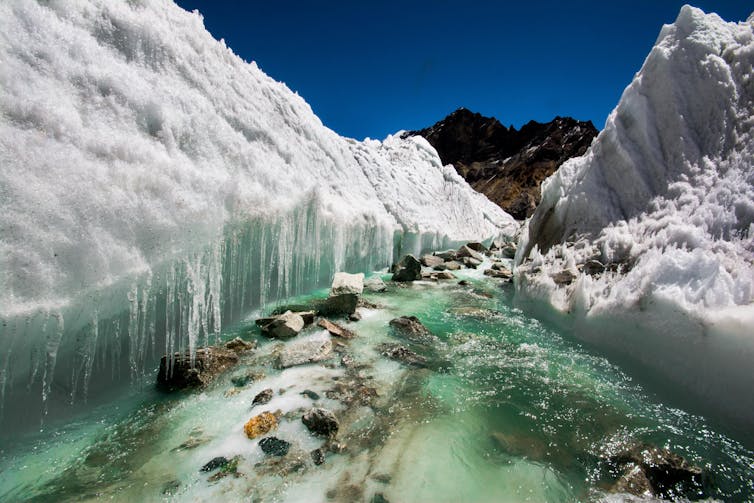
Digital Worlds
We used a software called Avida to run experiments that simulated the release of one type of ancient pathogen into modern biological communities.
We then measured the impacts of this invading pathogen on the diversity of modern host bacteria in thousands of simulations, and compared these to simulations where no invasion occurred.
The invading pathogens often survived and evolved in the simulated modern world. About 3% of the time the pathogen became dominant in the new environment, in which case they were very likely to cause losses to modern host diversity.
In the worst- (but still entirely plausible) case scenario, the invasion reduced the size of its host community by 30% when compared to controls.
The risk from this small fraction of pathogens might seem small, but keep in mind these are the results of releasing just one particular pathogen in simulated environments. With the sheer number of ancient microbes being released in the real world, such outbreaks represent a substantial danger.
Extinction And Disease
Our findings suggest this unpredictable threat which has so far been confined to science fiction could become a powerful driver of ecological change.
While we didn’t model the potential risk to humans, the fact that “time-travelling” pathogens could become established and severely degrade a host community is already worrisome.

We highlight yet another source of potential species extinction in the modern era – one which even our worst-case extinction models do not include. As a society, we need to understand the potential risks so we can prepare for them.
Notable viruses such as SARS-CoV-2, Ebola and HIV were likely transmitted to humans via contact with other animal hosts. So it is plausible that a once ice-bound virus could enter the human population via a zoonotic pathway.
While the likelihood of a pathogen emerging from melting ice and causing catastrophic extinctions is low, our results show this is no longer a fantasy for which we shouldn’t prepare.![]()
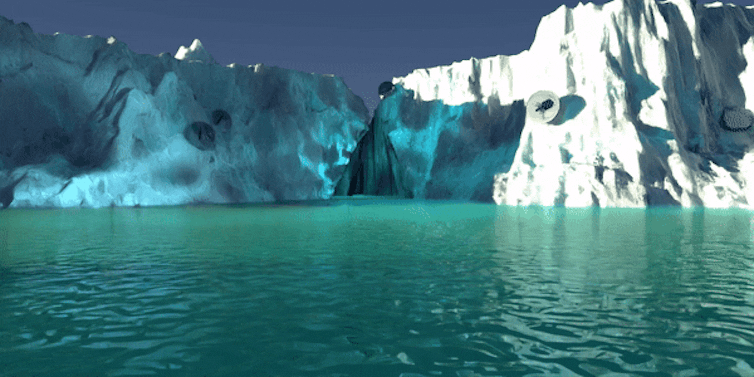
Corey J. A. Bradshaw, Matthew Flinders Professor of Global Ecology and Models Theme Leader for the ARC Centre of Excellence for Australian Biodiversity and Heritage, Flinders University and Giovanni Strona, Doctoral program supervisor, University of Helsinki
This article is republished from The Conversation under a Creative Commons license. Read the original article.
Puppy yoga? Goat meditation? An animal welfare scientist explores what these activities might mean for the cute creatures
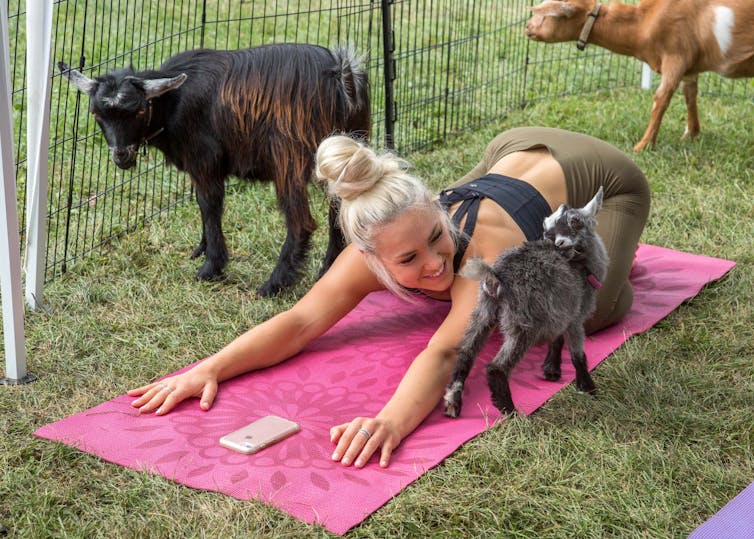
Puppies! Goats! Kittens! A quick online search suggests you can take a yoga class with just about any cute animal you like.
Operators provide the animals, room and an instructor – people pay to come and enjoy. Don’t forget the obligatory cute post to your socials, or it didn’t happen.
So far, so good. But what do the animals make of it?
As an animal welfare scientist, yoga with animals rings some alarm bells for me: it often seems to be focused on human wellbeing, with animal welfare an afterthought. But research shows how animal-assisted activities like this can be improved, and how we can all play a role in making animal welfare a higher priority.
Ethical Issues Exposed
The ethics of animal yoga have been a hot topic since a a recent investigation in the United Kingdom exposed distressing practices.
Puppies as young as six weeks old were denied sleep and water while working in puppy yoga sessions. Classes took place in hot rooms for hours at a time, with no capacity for the young pups to opt out of interactions.
People attending the classes were given no guidance on safely handling puppies, and video footage shows squirming young puppies dropping awkwardly to the ground.
Early socialisation can build dogs’ long-term confidence in interactions with people and the world. Bad experiences during this time can influence them to be anxious or fearful.
Similar practices appear to be common in the growing yoga-with-animals industry. An Australian friend told me about a recent goat yoga session:
it left me feeling awful for those poor goats, being grabbed at, chased around the room, and cuddled against their will.
How Can Science Help?
My research centres around understanding the animal experience and using this evidence to inform good practice and policies.
It’s widely agreed animals such as dogs, goats and birds are sentient, which means they experience good and bad feelings – and that matters to their individual wellbeing.
With that understanding comes a moral obligation for us to care for animals in a way that includes their mental experiences as well as their physical needs.
Social Licence Pressure
In modern societies we often expect the animals we rely on will have good lives, not just protection from harm and suffering. When we learn people are failing to safeguard animal wellbeing (for example, through media investigations), there is a public reaction.
These reactions can affect entire industries. A recent example in Australia and New Zealand is the interruption to live export of sheep by sea.
The impact of community attitudes is sometimes called “social licence pressure”. When communities trust and accept that an operator is acting ethically and responsibly, the industry or individual has a “social licence to operate”.
This isn’t a physical licence that can be granted legally or politically. It’s a term from industries such as forestry and mining, where community approval underpins their ongoing operations.
Increasingly, the idea of social licence is becoming relevant to our interactions with animals in contexts such as racing, farming, and now animal yoga.
In many ways, concerns about puppy yoga align with those observed in other animal-assisted practices, such as education, therapy and other allied health settings. Rapidly growing but minimally regulated, these practices generally claim to have positive impacts on people’s lives.
However, the need for animal welfare to be monitored, evaluated and prioritised is often overlooked.
Animal Welfare Assurance
One approach to make animal-assisted activities more ethical is through “one health” and “one welfare” initiatives, which focus on the interconnectedness of human, animal and environmental wellbeing.
For animal-reliant operations to be sustainable, they need be transparent and proactive in assuring the public that animal wellbeing is a priority. This may require considerable change to historical practices.
Research on human–animal interactions is often limited by a lack of funding for studies of animal experience, which can be used to inform regulation and policy.

The Five Domains Of Animal Welfare
When assessing indicators of animal welfare, scientists increasingly use the “five domains” framework.
The first four domains are nutrition, physical environment, health, and behavioural interactions (with people, other animals and the environment). All of these directly influence the fifth domain: the animal’s mental state.
For example, a puppy deprived of water in a hot room may feel thirsty, tired and dizzy. A young animal whose sleep is interrupted may feel worried, have reduced concentration, and be more prone to illness. The risk of illness is greater if they are not fully vaccinated, or are exposed to a place visited by many animals. A dropped or mishandled puppy may feel pain and fear, and learn that people should be avoided.
Animals should also have agency – the ability to choose their actions, including whether to interact with people or withdraw.
How To Make Change
In the UK, the ITV News investigation has led to a rapid escalation of the issue. The Royal Society for the Prevention of Cruelty to Animals and the Kennel Club have condemned the yoga classes, and called on the parliamentary group that monitors animal welfare to ban the practice.
This shows the power of social licence pressure. Closer to home, we can all exert this kind of pressure through the choices we make.
By staying informed about what makes a good life for animals, and not supporting practices that fail to align with it, we can fulfil our moral obligation to animals that rely on us.![]()
Mia Cobb, Research Fellow, Animal Welfare Science Centre, The University of Melbourne
This article is republished from The Conversation under a Creative Commons license. Read the original article.
A new TikTok trend has people drinking toxic borax. An expert explains the risks – and how to read product labels

A potentially dangerous trend has gained prominence on TikTok, with a number of people mixing borax into water and drinking it for supposed health benefits.
This isn’t new. Social media platforms have been host to many dangerous “challenges” – and users have been dosing themselves with questionable substances for years.
There’s no evidence to support the latest claims about borax. So how dangerous is it? And how can we assess the safety of the many other substances we use in daily life?

What Is Borax?
Borax, or sodium borate decahydrate, is a salt made of a combination of boron, sodium, oxygen and hydrogen. It comes in the form of a colourless crystalline solid that can easily be dissolved in water.
Borax and the related boric acid are commonly used in household products including laundry cleaning products, wood preservers, fertilisers, contact lens solution and ant killers.
Borax crystals are also widely available in supermarkets, hardware stores and garden centres. These products are typically pure borax, but other additives may be present.
Don’t Confuse Borax With Boron
TikTok users posting videos of themselves ingesting borax and water solution have falsely claimed it can help treat inflammation, joint pain, arthritis, lupus and a range of other conditions.
This is yet another hoax “remedy” in a long list of false hope products. Alternative therapies are often touted as being “natural” and therefore supposedly non-toxic.
But while borax is naturally occurring, this isn’t a guarantee of safety. Arsenic, ricin and the toxin responsible for botulism are also 100% natural, but can be highly toxic to humans.
And although the element boron specifically is considered essential for plants and some animals, its role in the functioning of the human body is less clear. Boron can be found in some of the foods we eat, such as grapes and potatoes, but isn’t classified as an essential nutrient. The very small amount of boron your body may need can be safely obtained by eating a diet rich in fruits and vegetables.
How Dangerous Is Borax?
Borax is not considered safe to ingest.
In toxicology, the median lethal dose, or LD50, is the approximate dose required to kill half the animals in a population being studied.
The LD50 for borax in rats is about 5g per kilogram of body weight. This is a relatively large dose, which means acute toxicity causing death is unlikely in humans. But just because a dose won’t kill, that doesn’t mean it isn’t harmful – and it definitely doesn’t mean it’s good for you.
Borax was used extensively as a food preservative in the early 1900s. That was before the work of Harvey Washington Wiley and his poison squad uncovered a range of side effects to consumption, including headaches, nausea, vomiting, gastric discomfort and more.
Borax is also classified as a reproductive toxin, which means it “may impair fertility” and “may cause harm to the unborn child”. It is banned as a food additive in Australia, the United States and several other countries.
Safety First, Last And Always
A number of dangerous social media challenges have gone viral over the past decade. One notable example was the “Tide pod challenge”, in which users recorded themselves biting or eating laundry pods.
The consumption of laundry pods has caused a number of deaths (although these can’t necessarily be linked to the Tide pod challenge). From 2013 to 2022, poison centres in the US have managed around 10,000 cases each year related to children age five and under being exposed to laundry detergent packets.
Clearly, we shouldn’t be drinking borax or eating laundry pods. Yet such substances can’t always be avoided – so the best protection is to understand the dangers associated with them.
Apart from reading the generic safety warnings on a product, such as “CAUTION” or “KEEP OUT OF REACH OF CHILDREN”, consumers can dig a little deeper through the use of resources known as safety data sheets (or SDS).
Every product containing hazardous substances must legally have an SDS. So whether you’re using a shampoo, hand sanitiser, vinegar or borax, there will almost certainly be an SDS available. Here’s the SDS for Johnson’s Baby Shampoo, as an example.
You can find the SDS of a product online by searching the product’s name and “SDS” in Google. These documents follow a standardised format and provide details of hazards associated with a product.
They also include standardised hazard pictograms that represent the associated physical, health and environmental risks. You’ve probably seen these before, such as a “flammable” sign on a deodorant, or a “corrosive” sign on a household cleaner.

As far as borax is concerned, the main product shown in the TikTok videos has an SDS that lists the human silhouette and exclamation mark pictograms. These correspond to the listed hazards of skin irritation, serious eye irritation and potential damage to fertility or an unborn child.
A number of precautionary statements follows – with advice on appropriate personal protective equipment, and how to store and dispose of the product.
Further details go beyond the typical consumer information and include composition, first aid information, toxicological information and fire fighting methods. These are helpful for medical professionals treating patients and fire fighters dealing with chemical spills and fires.
Safety data sheets aren’t perfect, but they are a useful resource. So the next time you see an unusual “miracle cure” on social media, or there’s a chemical in your home you aren’t sure about, consider reading the SDS.
If you have been exposed to a potentially harmful substance, call your local poison information centre or seek medical attention.![]()
Nathan Kilah, Senior Lecturer in Chemistry, University of Tasmania
This article is republished from The Conversation under a Creative Commons license. Read the original article.
Post-Menopause Orca Mothers Protect Their Sons From Being Injured By Other Orcas
Supermarket Tricks To Watch Out For As Cost Of Living Soars
 Ever walk into the supermarket to buy milk – and come out with a trolley full of stuff you didn’t even know you needed? Welcome to supermarket consumer behaviour, where supermarkets implement strategies to get consumers to buy more items unknowingly.
Ever walk into the supermarket to buy milk – and come out with a trolley full of stuff you didn’t even know you needed? Welcome to supermarket consumer behaviour, where supermarkets implement strategies to get consumers to buy more items unknowingly. - Locked-in deals: These are commonly identified by bright red labels on items and typically present a capped price until a specified date. Consumers may be misled into believing that purchasing the item before the deadline offers greater cost-effectiveness due to the deal. However, the price of the locked-in deals is often the same as the original price of the item.
- Store layout: Supermarkets design the layout of the store to purposely put staple foods such as milk and bread far away from each other – and usually at the back of the store. This tactic is designed to make a consumer walk through the store and spend more time.
- Bigger-sized carts: Studies in the USA have shown that some trolley sizes in supermarkets have doubled in size since first being introduced. This has resulted in consumers typically buying 40 per cent more food items. The idea behind this is that consumers are tricked into thinking their shopping trolley appears to be missing food items.
- Music: Have you ever wondered why supermarkets typically play more relaxed, slow-paced music instead of fast and upbeat tunes? It’s not a coincidence. Supermarkets strategically choose calming music to create a relaxed atmosphere and encourage customers to stay longer, enhancing their shopping experience and getting them to buy more.
- Store deals: the ‘buy two, get one free’ deals and similar schemes may initially appear as an excellent opportunity and a cost-effective method of saving money if it's an item you buy regularly. However, if it’s an item that has a short expiry date, is it realistic that a consumer will consume all three items before the expiry date? Furthermore, certain supermarkets show, for example, ‘buy two for $10.00’, making it appear as a deal and misleading the consumer by implying that you are saving on cost. However, upon closer inspection, you might find that the price of one item is just its regular price, that is, half of the price of two.
Study Links Cadmium Levels In Women's Urine To Endometriosis
How burgers and chips for lunch can worsen your asthma that afternoon
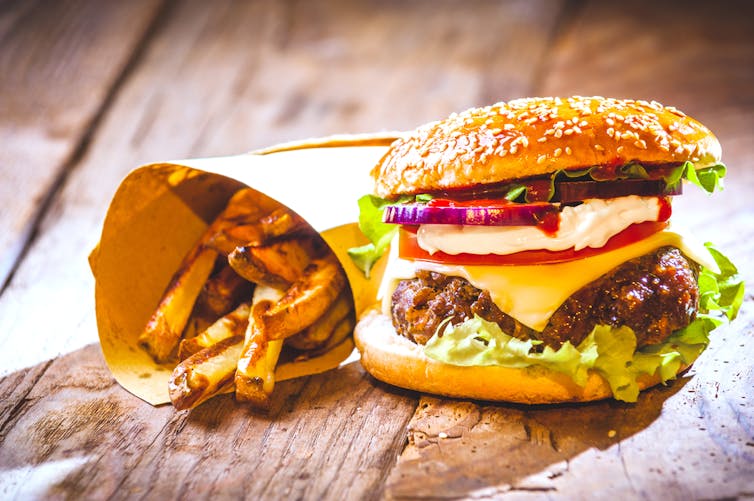
Certain foods or dietary patterns are linked with better control of your asthma. Others may make it worse. Depending on what you’ve eaten, you can see the effects in hours.
Food can affect how well your lungs function, how often you have asthma attacks and how well your puffer works.
Here’s what we know about which foods to eat more of, and which are best to eat in smaller amounts, if you have asthma.
Asthma And Inflammation
About one in ten Australians (2.7 million people) have asthma. This makes it the fourth most common chronic (persisting) disease in Australia.
Asthma is an inflammatory disease. When someone is exposed to certain triggers (such as respiratory viruses, dust or exercise), the airways leading to the lungs become inflamed and narrow. This makes it difficult for them to breathe during what’s commonly known as an asthma attack (or exacerbation).
Researchers are becoming increasingly aware of how someone’s diet can affect their asthma symptoms, including how often they have one of these attacks.
Thumbs Up For Fruit And Veg
The Mediterranean diet – a diet high in fruit, vegetables and oily fish – is linked with less wheezing in children, whether or not they have been diagnosed with asthma. Some, but not all, of the studies found this was regardless of the children’s body-mass index (BMI) or socioeconomic status.
Eating a diet high in fruits and vegetables is also important for adults with asthma. Two studies found adults who were instructed to eat a diet with few fruits and vegetables (two or fewer servings of vegetables, and one serving of fruit daily) had worse lung function and were twice as likely to have an asthma attack compared to those eating a diet high in fruits and vegetables.
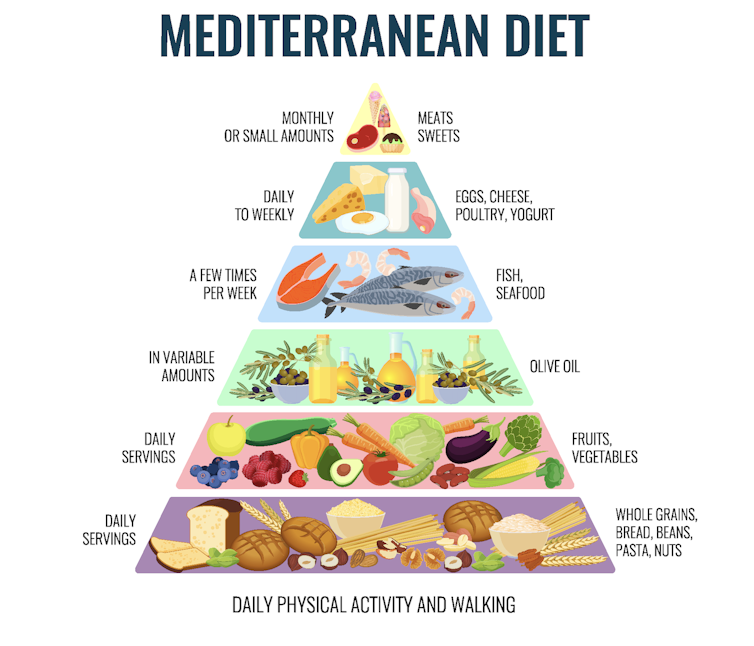
Why might the Mediterranean diet, or one rich in fruit and vegetables, help? Researchers think it’s because people are eating more antioxidants and soluble fibre, both of which have anti-inflammatory action:
antioxidants neutralise free radicals. These are the damaging molecules produced as a result of inflammation, which can ultimately cause more inflammation
soluble fibre is fermented by gut bacteria to produce short-chain fatty acids such as acetate, propionate and butyrate, which reduce inflammation.
The Mediterranean diet is also high in omega-3 fatty acids (from oily fish, such as salmon, mackerel and tuna). However a review looked at five studies that investigated omega-3 intake (through the diet or with a supplement) in adults with asthma. None of the studies showed any benefit associated with omega-3 for asthma.
Of course there is no harm in eating foods high in omega-3 – such as oily fish, flaxseeds, chia seeds and walnuts. This has numerous other benefits, such as lowering the risk of heart disease.
Thumbs Down For Saturated Fat, Sugar, Red Meat
Saturated fats are found in highly processed foods such as biscuits, sausages, pastries and chocolate, and in fast foods.
Diets high in saturated fats, plus sugar and red meat, can worsen someone’s asthma symptoms.
For instance, one study found a diet high in these foods increased the number of asthma attacks in adults.

Foods high in saturated fat can have an impact in as little as four hours.
One study looked at what happened when adults with asthma ate a meal high in saturated fat (consisting of two hash browns, a sausage and egg muffin, and a sausage muffin) compared with a meal with similar calories but low in saturated fat.
People who ate the meal high in saturated fat had reduced lung function within four hours. Within four hours, their puffer was also less effective.
These worsening symptoms were likely driven by an increase in inflammation. Around the four hour mark, researchers found an increase in the number of the immune cells known as neutrophils, which play a role in inflammation.
It’s still OK to eat a sneaky burger or some hot chips occasionally if you have asthma. But knowing that eating too many of these foods can affect your asthma can help you make choices that might improve your quality of life.
What About Dairy?
One food type you don’t have to avoid, though, is dairy products.
Although many people with asthma report eating dairy worsens their asthma, evidence shows this to be untrue. In fact, one study in adults with asthma found drinking milk was linked to better lung function.![]()
Evan Williams, Postdoctoral Researcher in Respiratory and Nutritional Biochemistry, University of Newcastle
This article is republished from The Conversation under a Creative Commons license. Read the original article.
Link Found Between Childhood Television Watching And Adulthood Metabolic Syndrome
Ground-Breaking E-Scooter Study Shows Surface Transitions As Most Common Hurdle

Risk Of Fatal Heart Attack May Double In Heat Wave And High Fine Particulate Pollution Days
- 18% higher during 2-day heat waves with heat indexes at or above the 90th percentile (ranging from 82.6 to 97.9 degrees Fahrenheit), increasing with temperature and duration, and was 74% higher during 4-day heat waves with heat indexes at or above the 97.5th percentile (ranging from 94.8 to 109.4 degrees Fahrenheit). For context, 6,417 (3.2%) of the 202,678 observed deaths from heart attack happened during heat waves with heat indexes at or above the 95th percentile (ranging from 91.2 to 104.7 degrees Fahrenheit) for three or more days.
- 4% higher during 2-day cold snaps with temperatures at or below the 10th percentile (ranging from 33.3 to 40.5 degrees Fahrenheit), increasing with lower temperatures and duration, and was 12% higher during 3-day cold snaps with temperatures at or below the 2.5th percentile (ranging from 27.0 to 37.2 degrees Fahrenheit). For context, 6,331 (3.1%) of the 202,678 observed deaths from heart attack happened during cold spells with temperatures at or below the 5th percentile (ranging from 30.0 to 38.5 degrees Fahrenheit) for 3 or more days.
- Twice as high during 4-day heat waves that had fine particulate pollution above 37.5 micrograms per cubic meter. Days with high levels of fine particulate pollution during cold snaps did not have an equivalent increase in the risk of heart attack death.
- Generally higher among women than men during heat waves.
- Higher among people ages 80 and older than in younger adults during heat waves, cold snaps or days with high levels of fine particulate pollution.
- The mean age of all individuals who died from a heart attack in Jiangsu from 2015-2020, including during non-extreme temperature events, was 77.6 years old; 52.1% of these individuals were over 80 years old.

- Fine particulates are less than 2.5 microns in size and may be inhaled deep into the lungs, where they can irritate the lungs and blood vessels around the heart. Most are associated with fuel combustion, such as particles from car exhaust, factory emissions or wildfires.
- Previous research has confirmed that exposure to particulate matter including fine particulates is linked to heart disease, stroke and other health issues.
- For context, the World Health Organization's target for average annual exposure to fine particulate pollution level is no more than 5 micrograms per cubic meter and no more than 15 micrograms per cubic meter for more than 3-4 days per year.
- In this study, heat waves were defined as periods at or above the 90th, 92.5th, 95th and 97.5th percentiles of daily heat indexes (ranging from 82.6 to 109.4 degrees Fahrenheit across Jiangsu province, China) for at least 2, 3 or 4 consecutive days.
- Cold spells were defined as periods at or below the 10th, 7.5th, 5th, 2.5th percentiles of daily heat indexes (ranging from 27 to 40.5 degrees Fahrenheit) for at least 2, 3 or 4 consecutive days.
Disclaimer: These articles are not intended to provide medical advice, diagnosis or treatment. Views expressed here do not necessarily reflect those of Pittwater Online News or its staff.